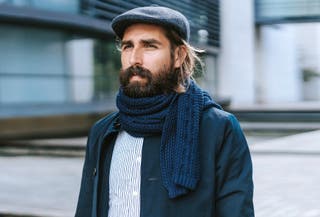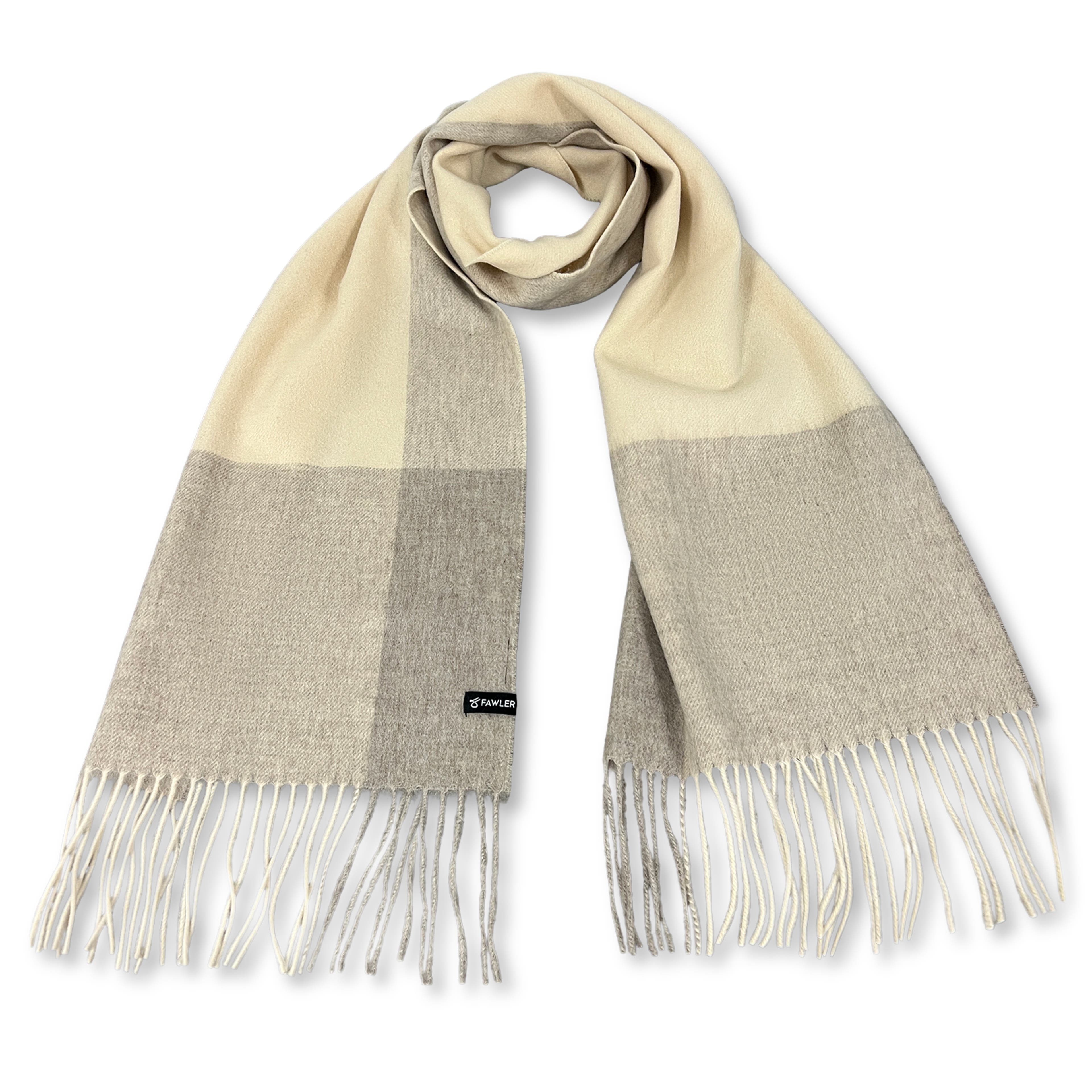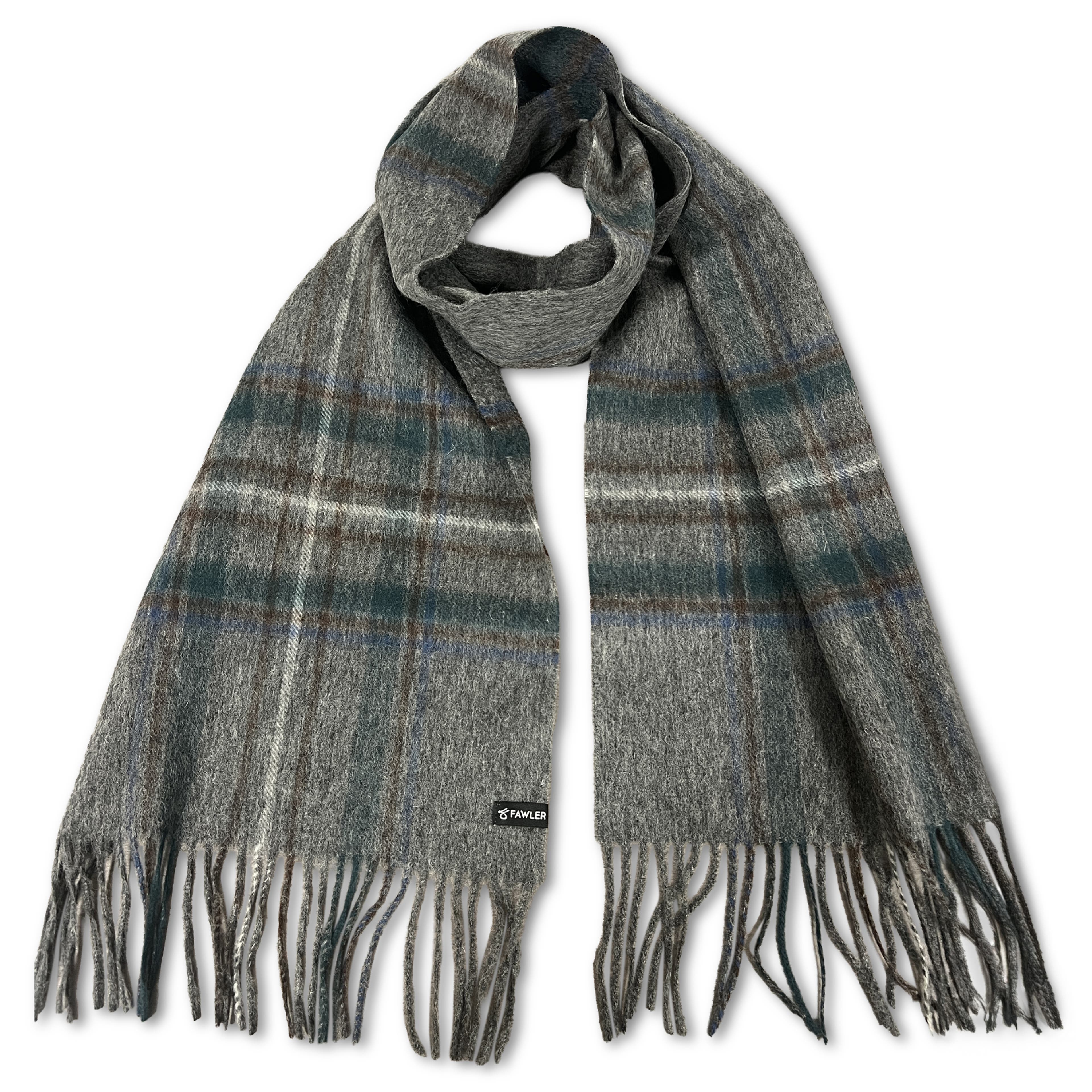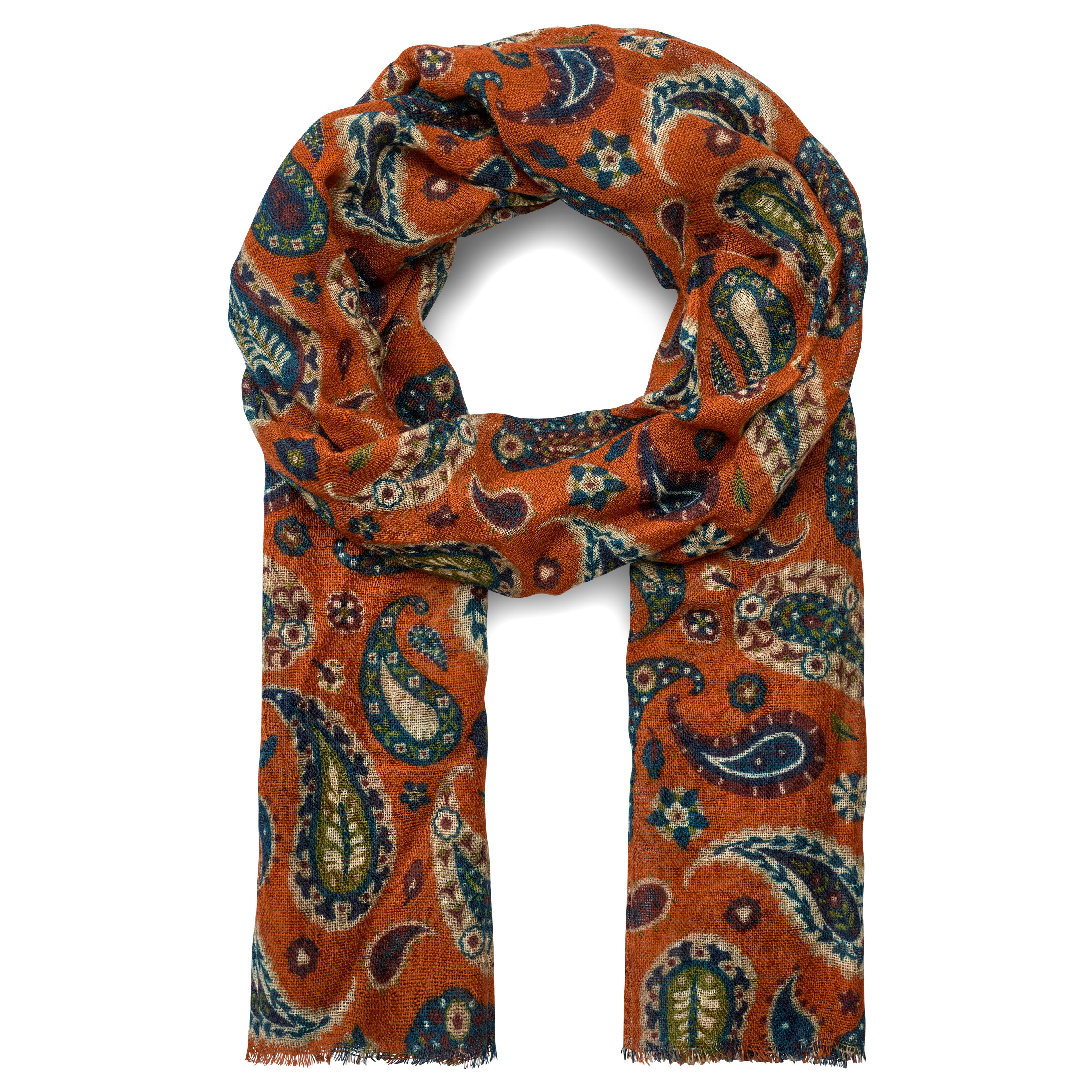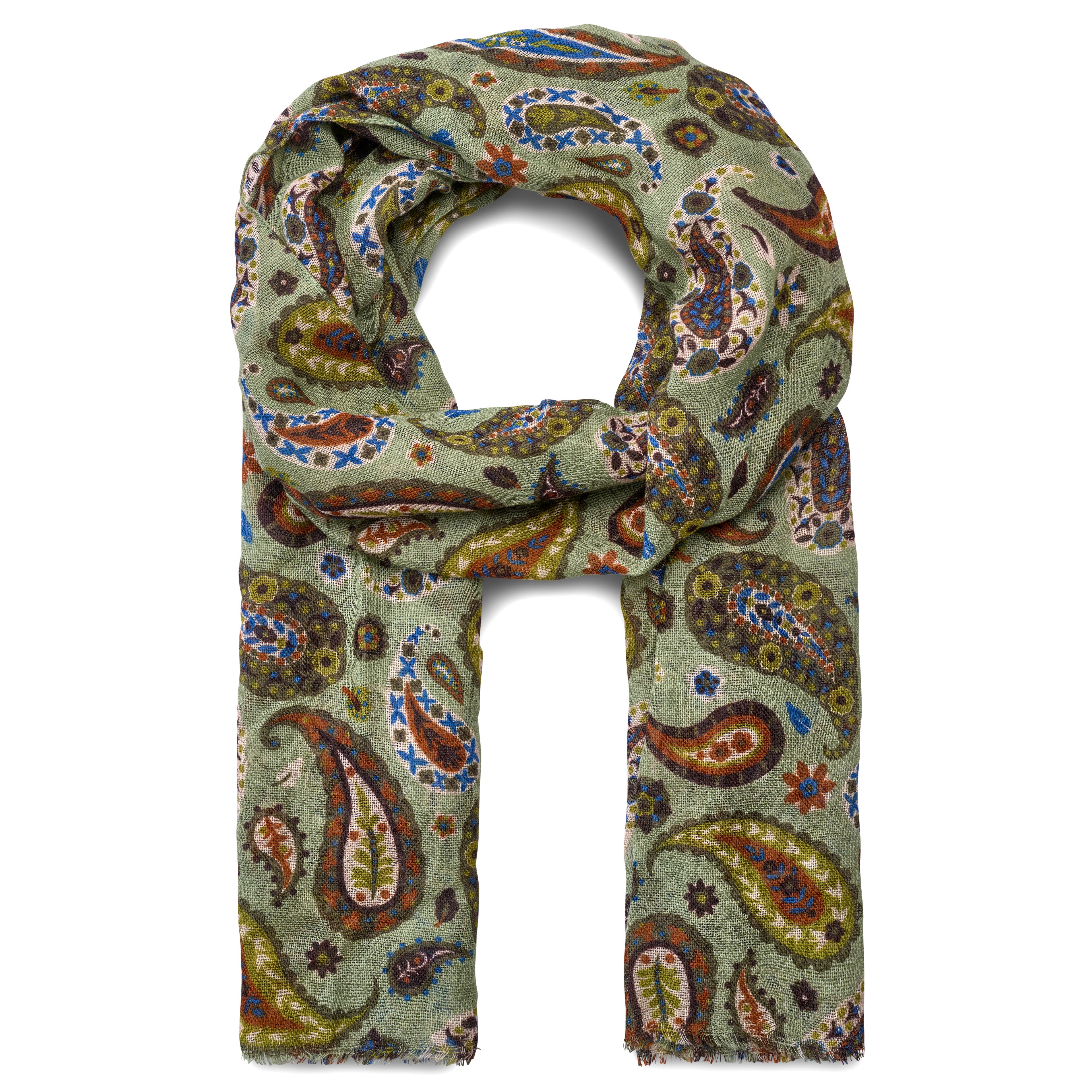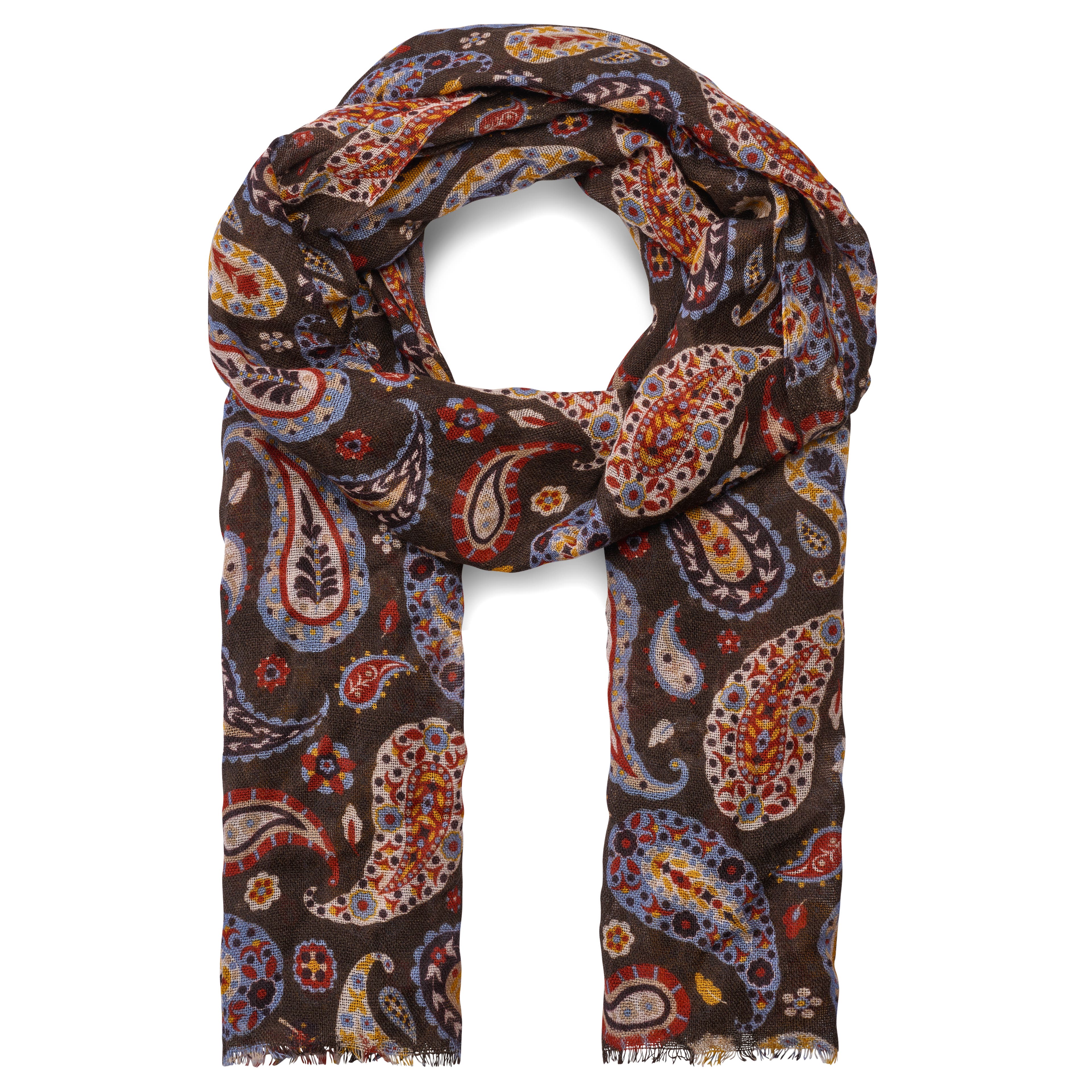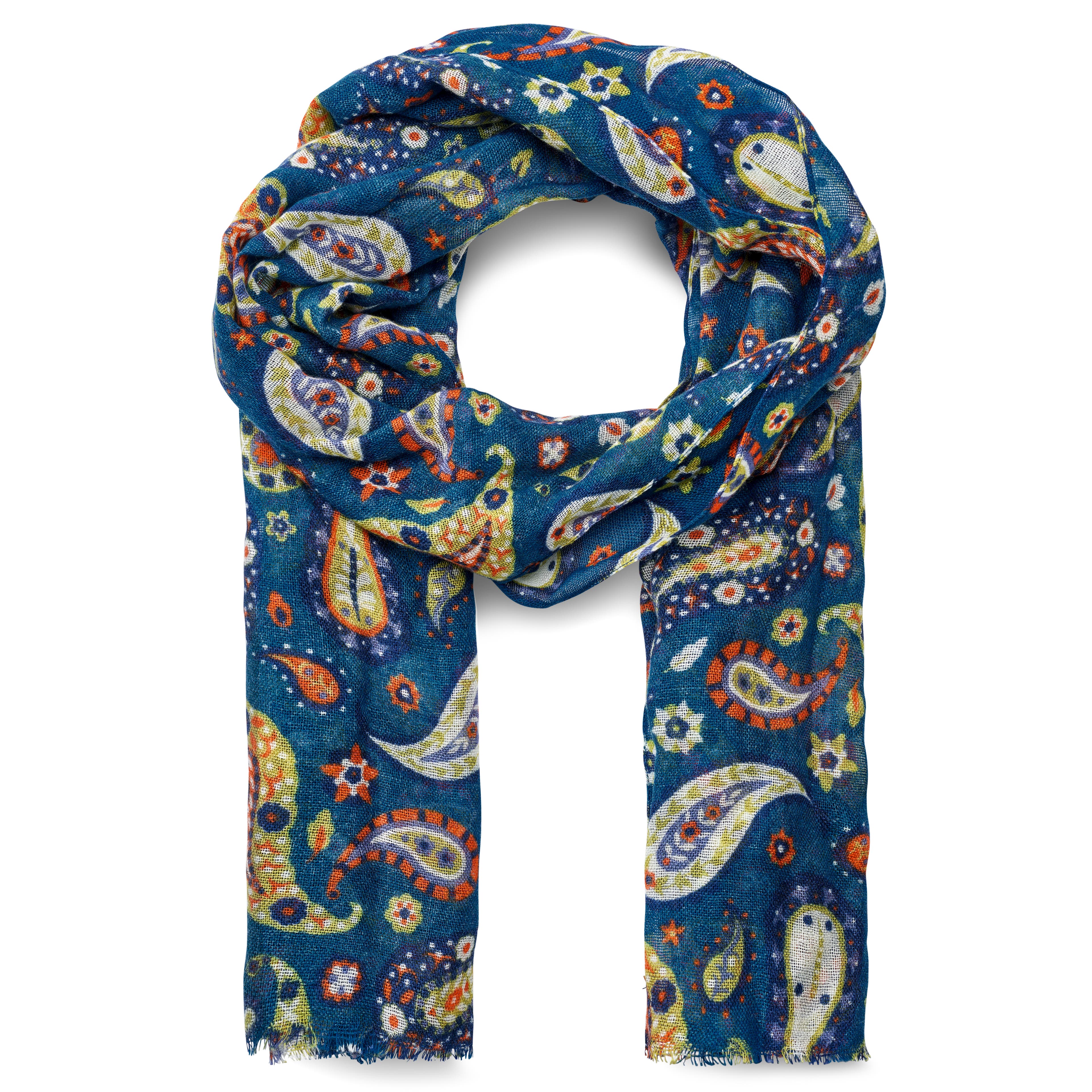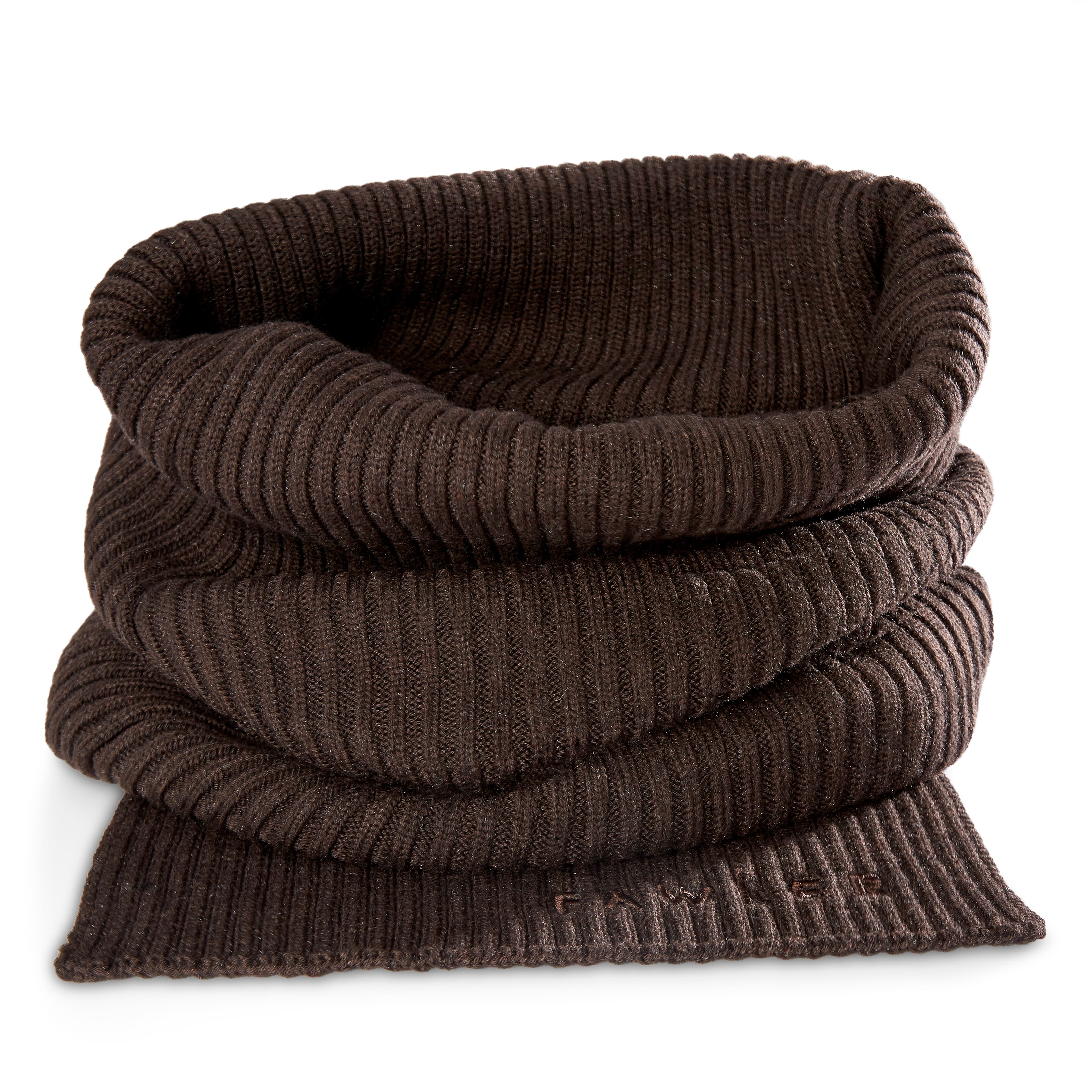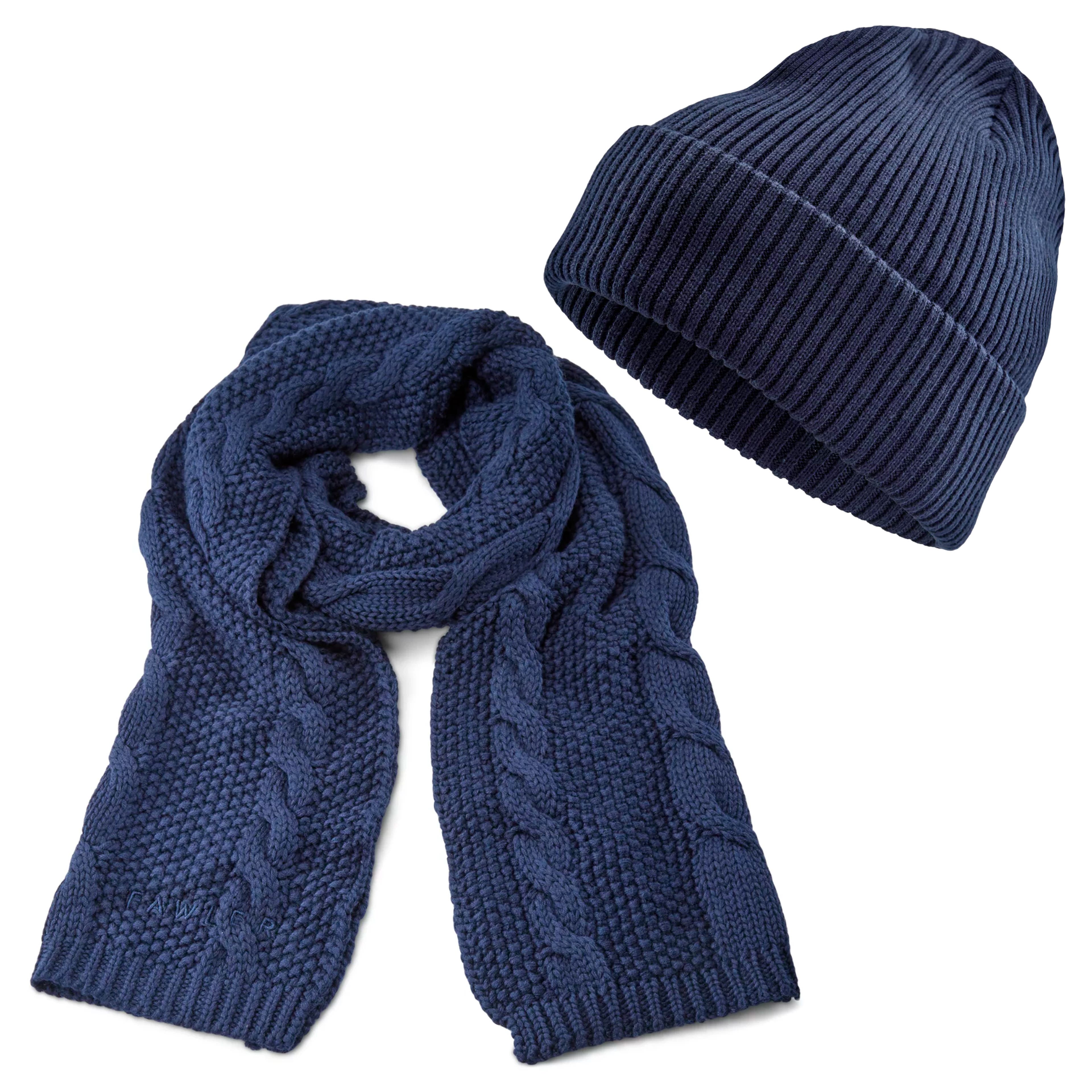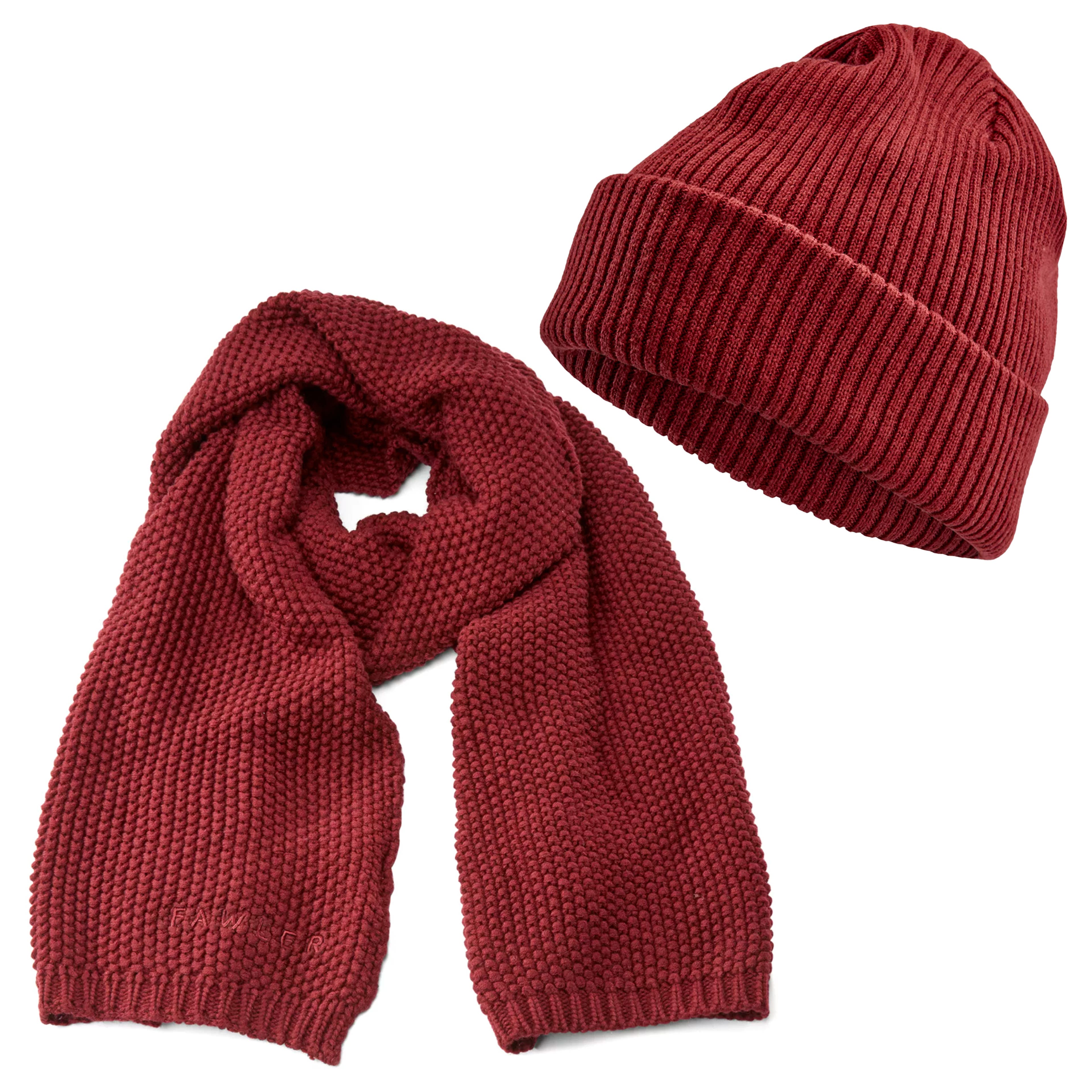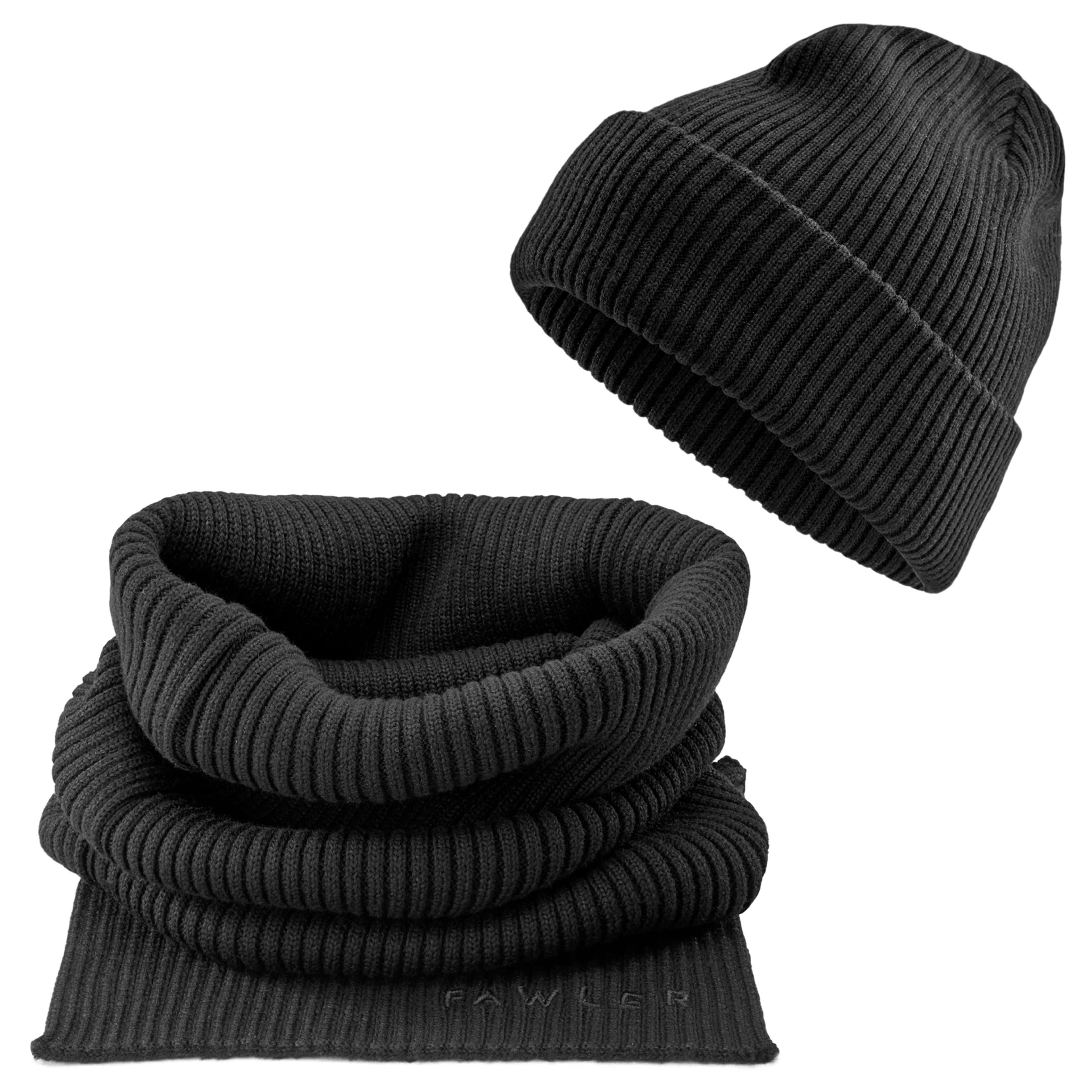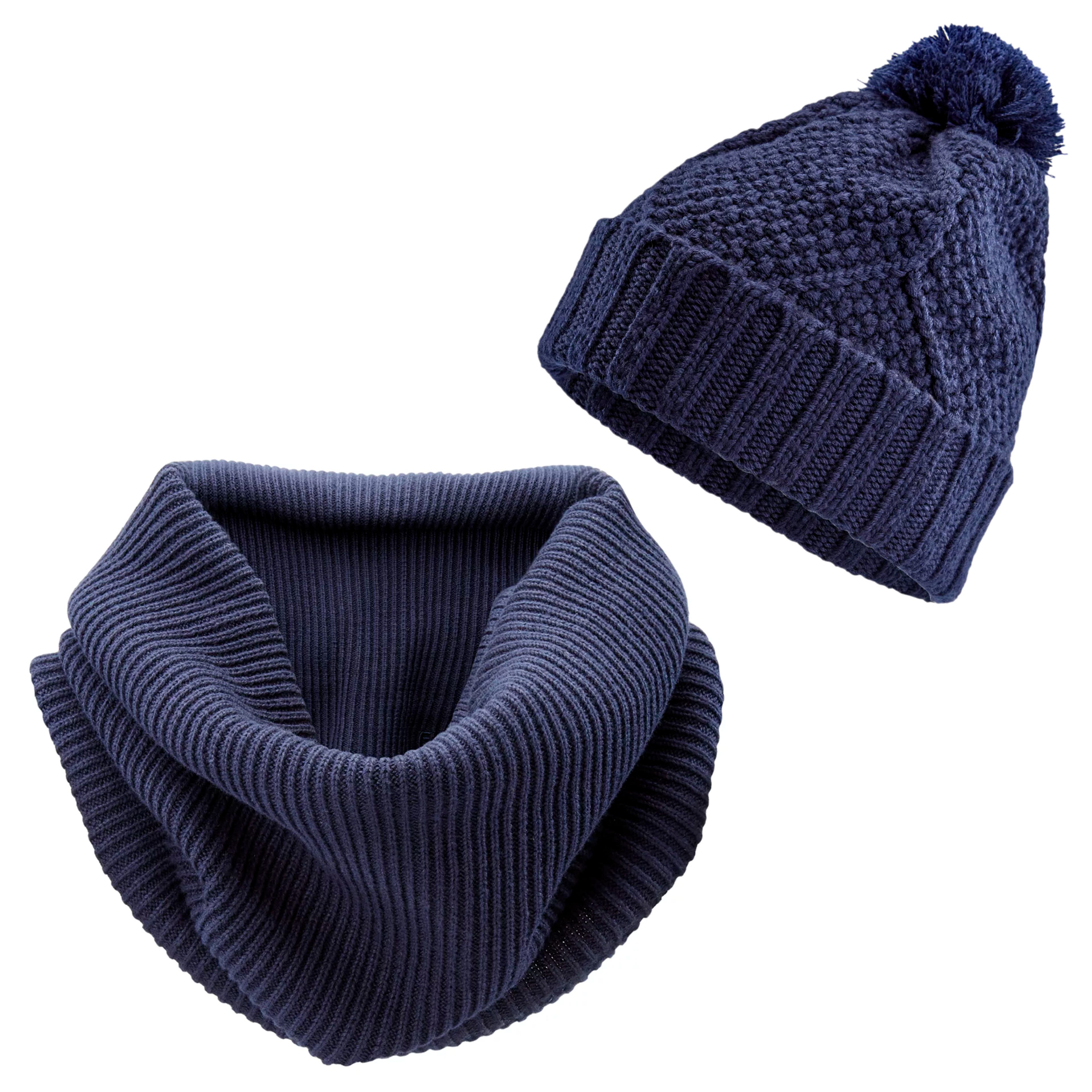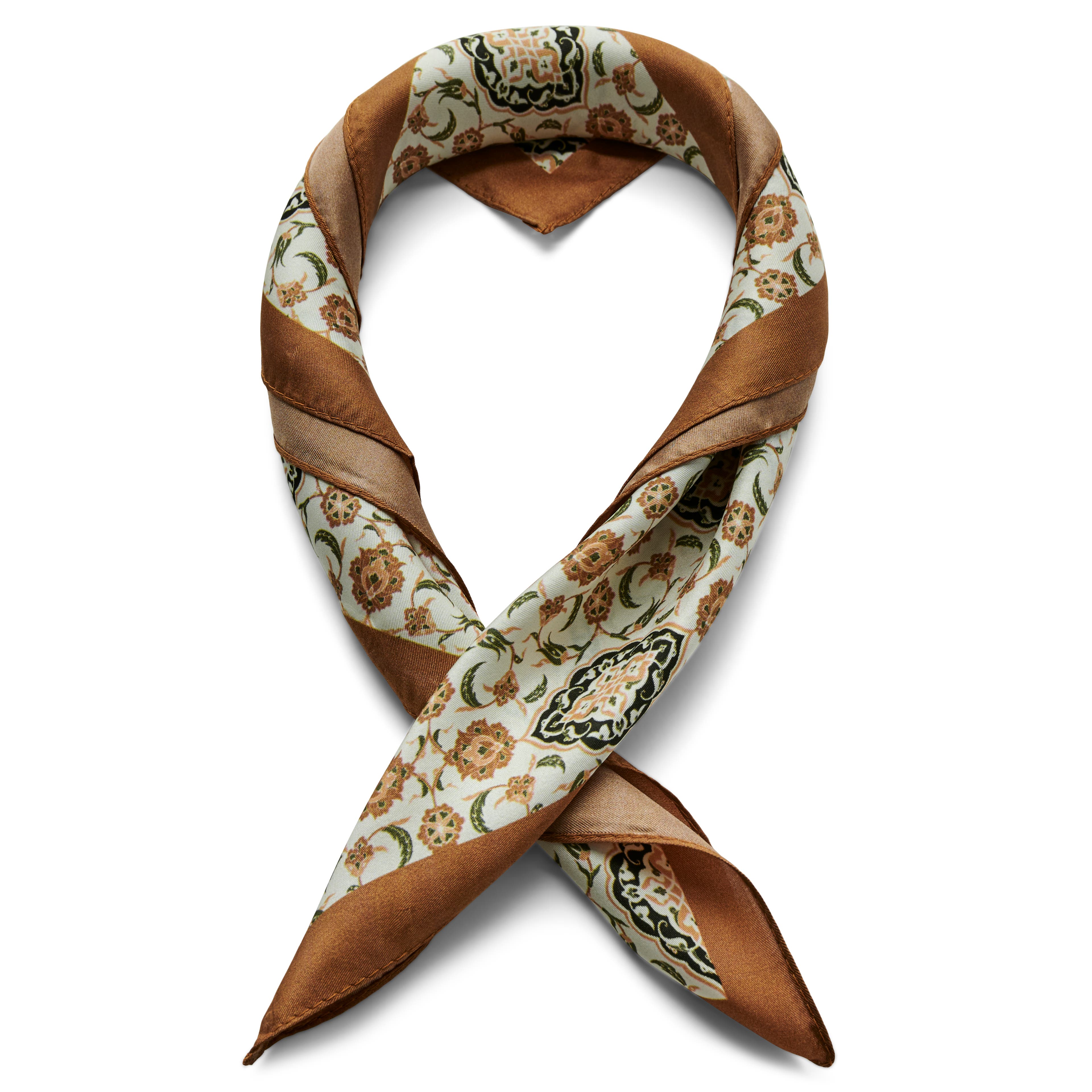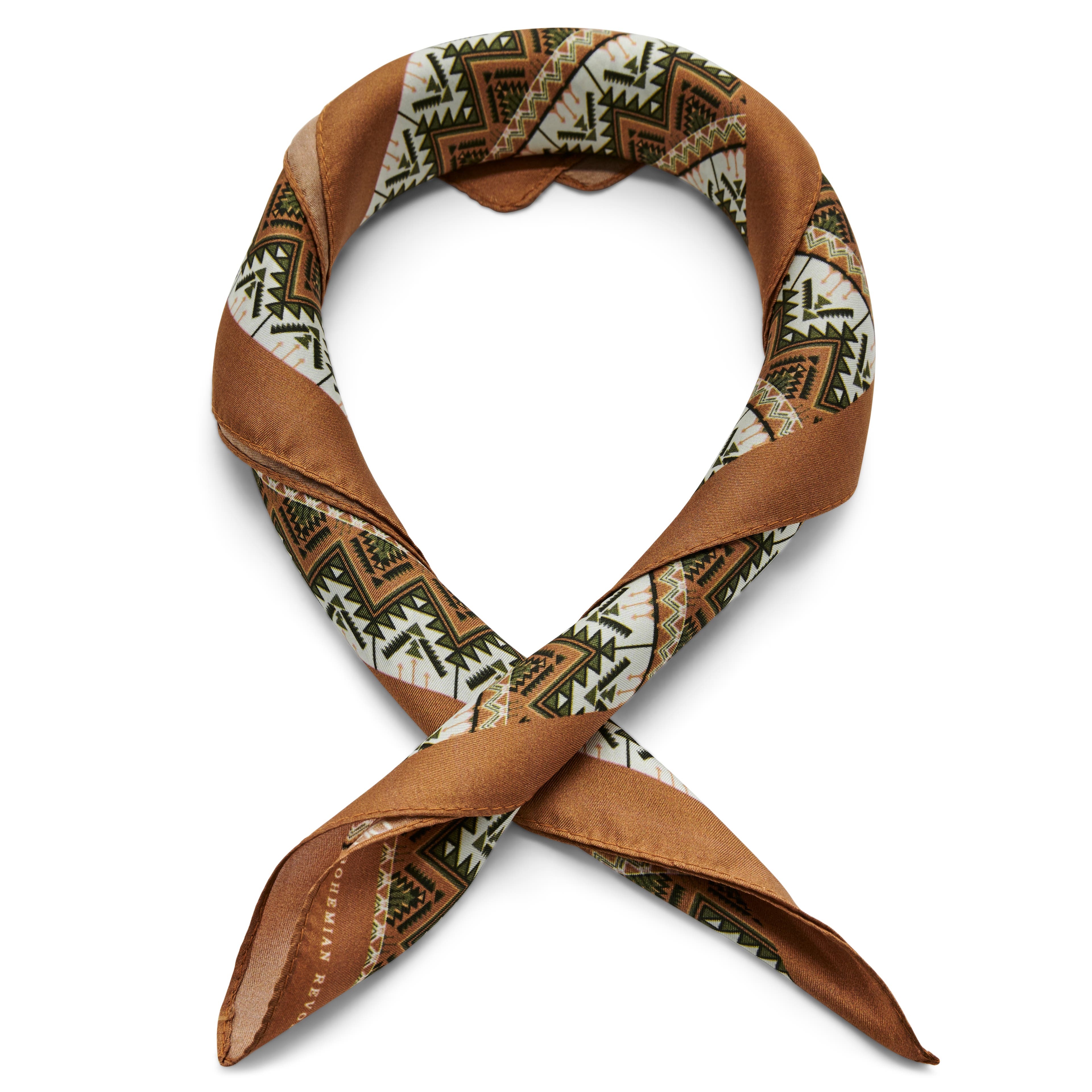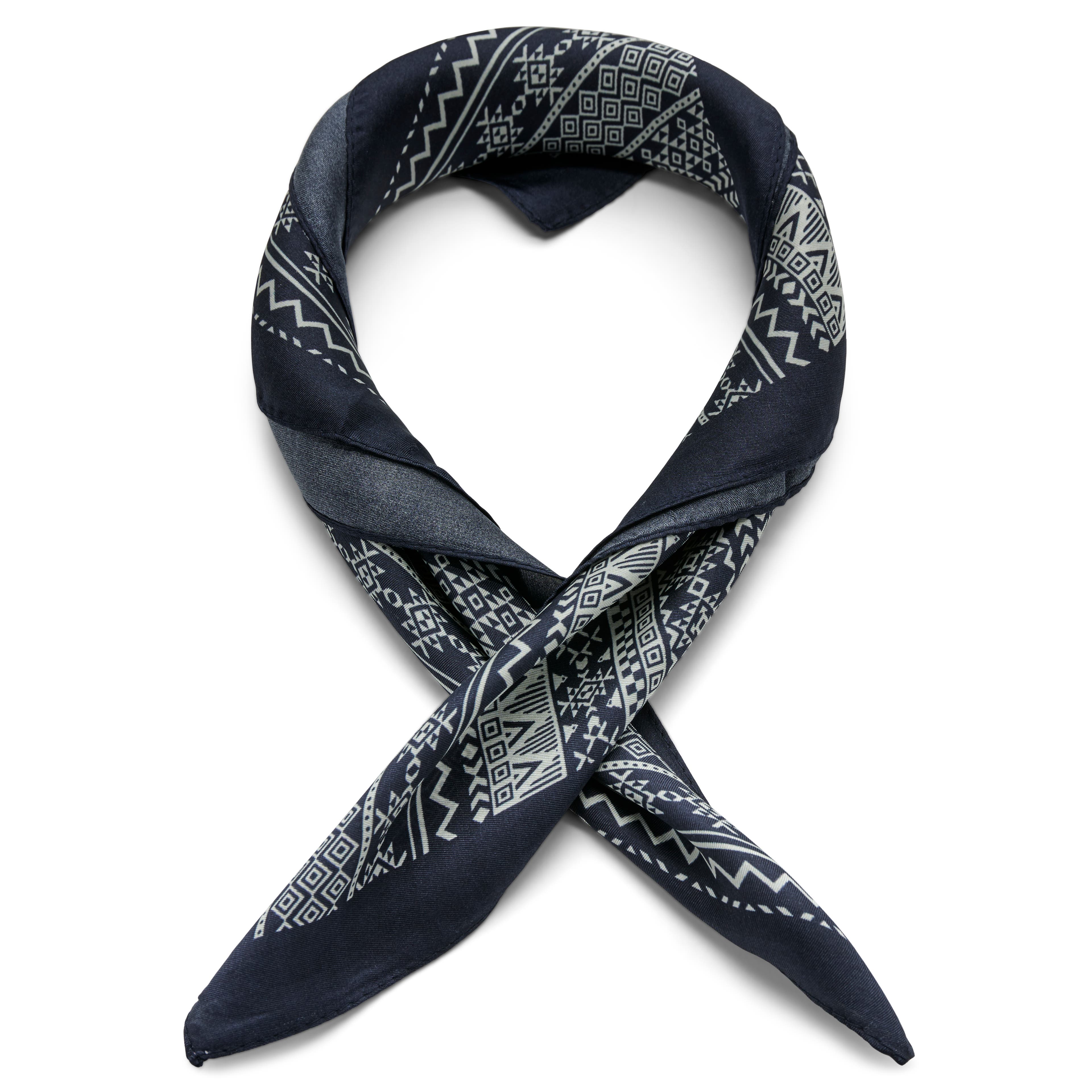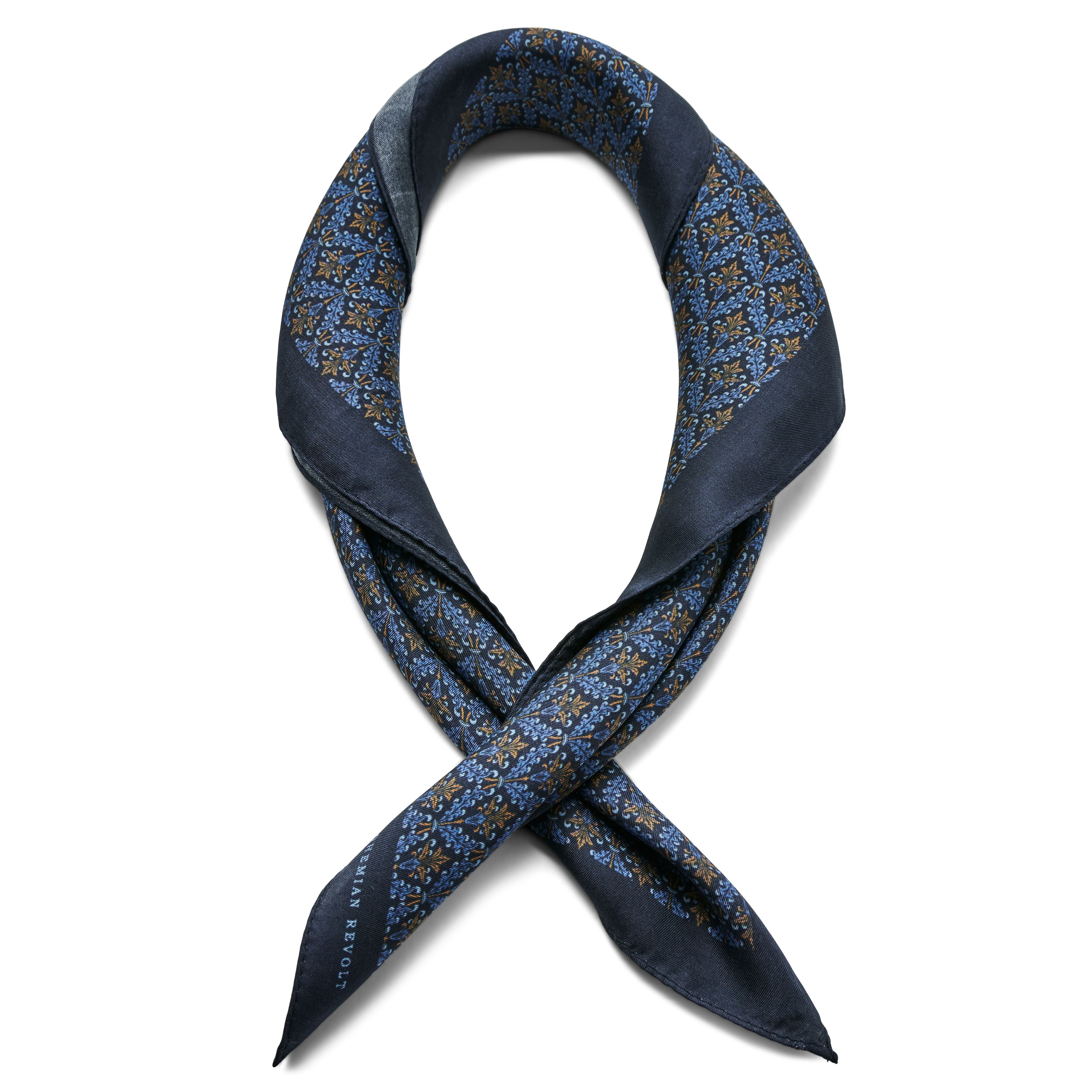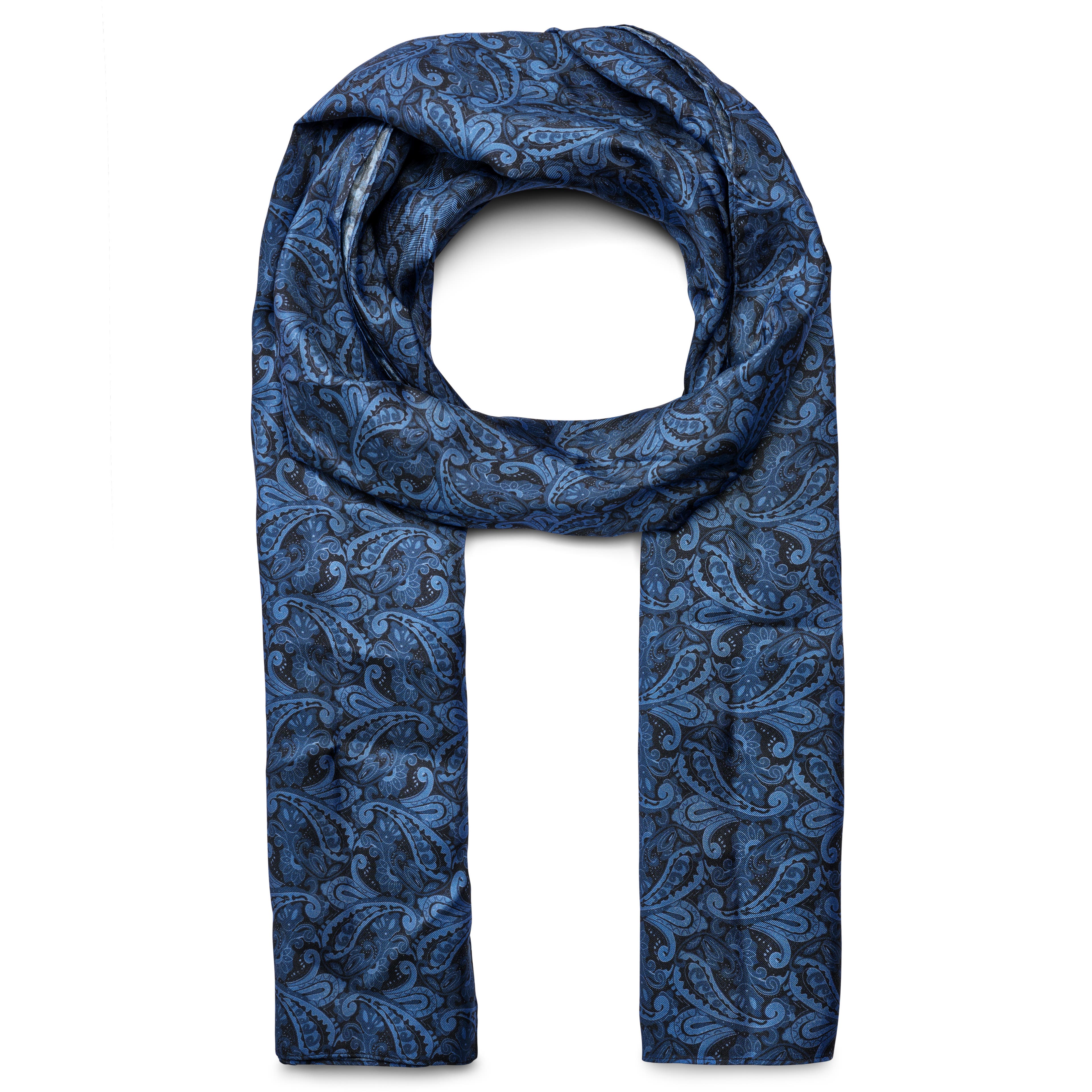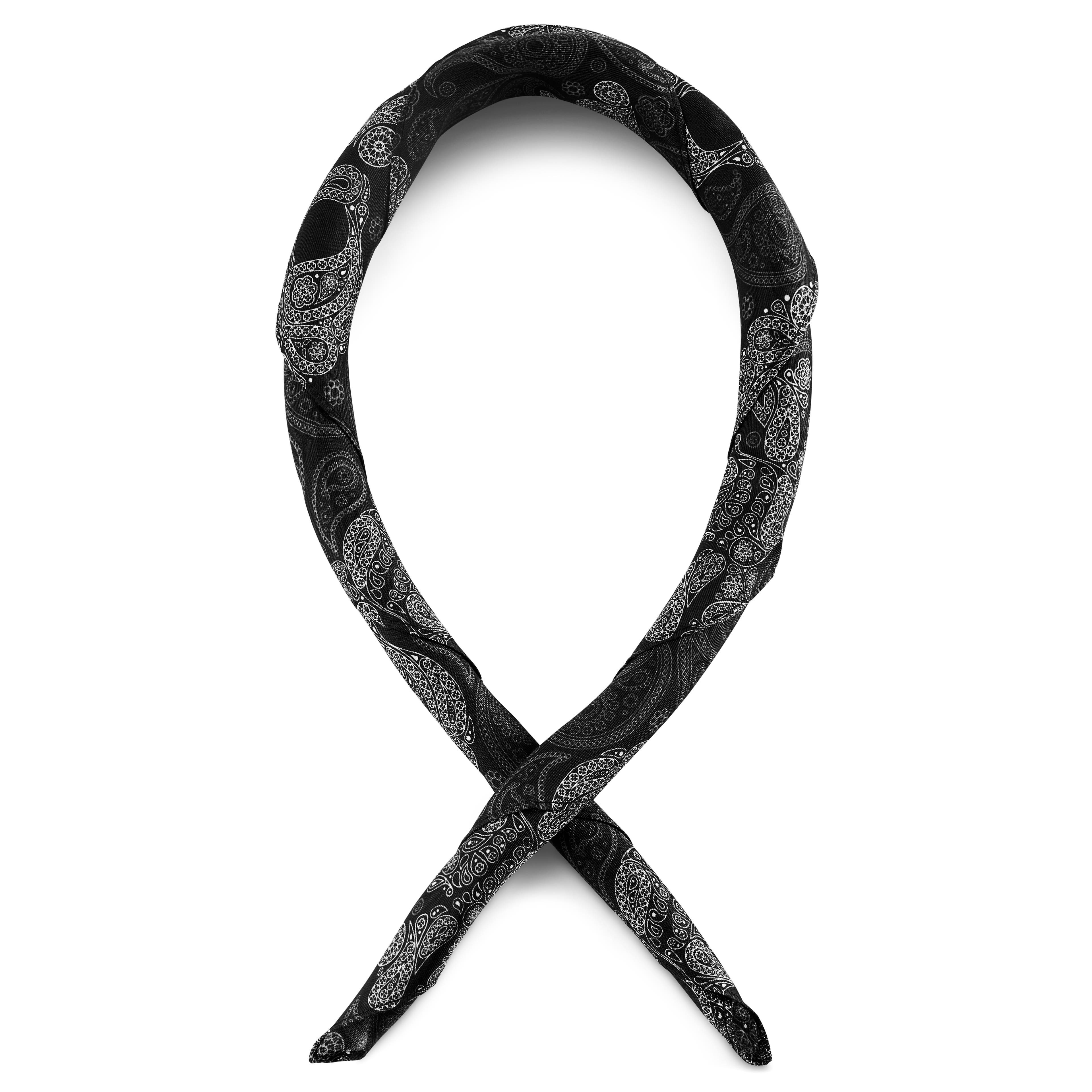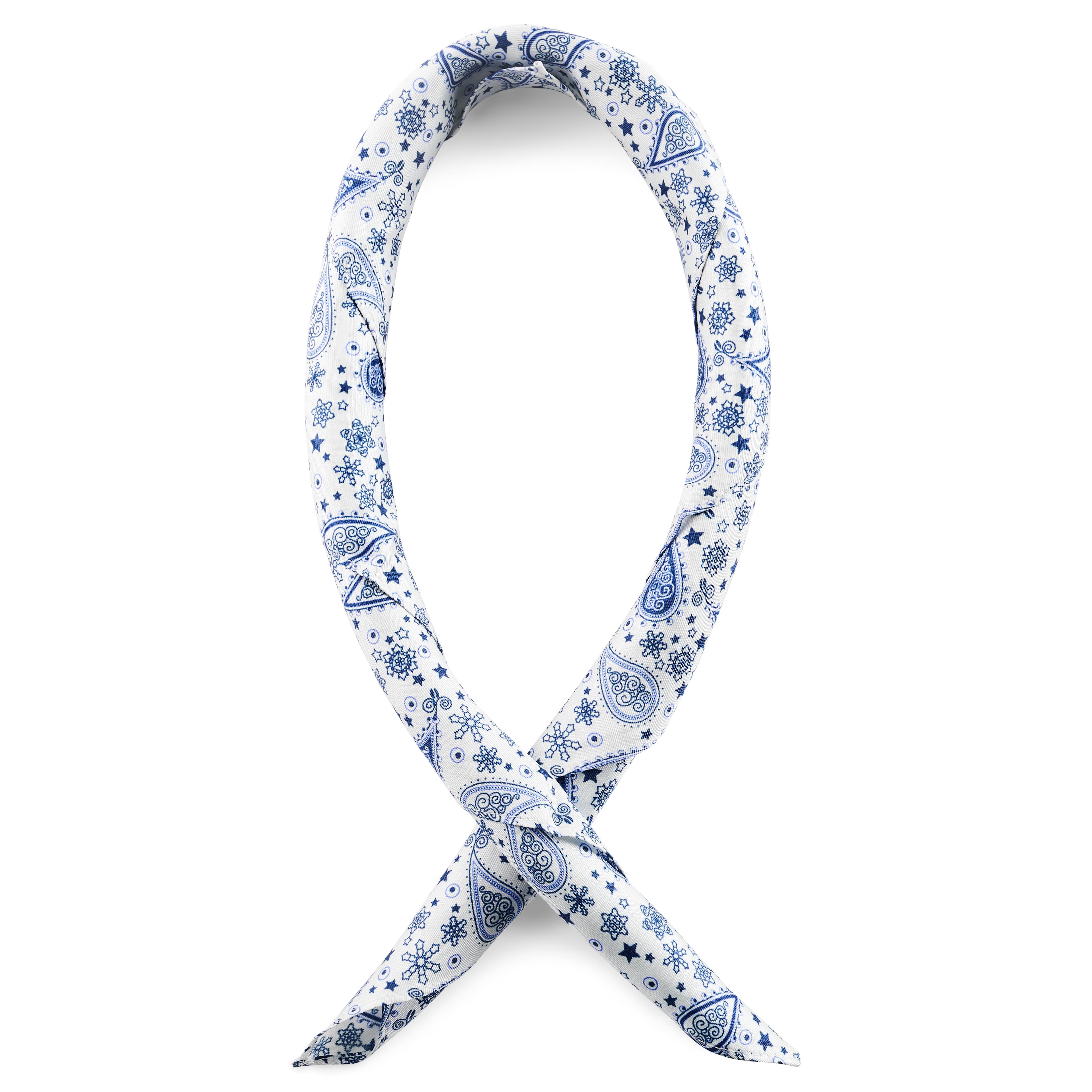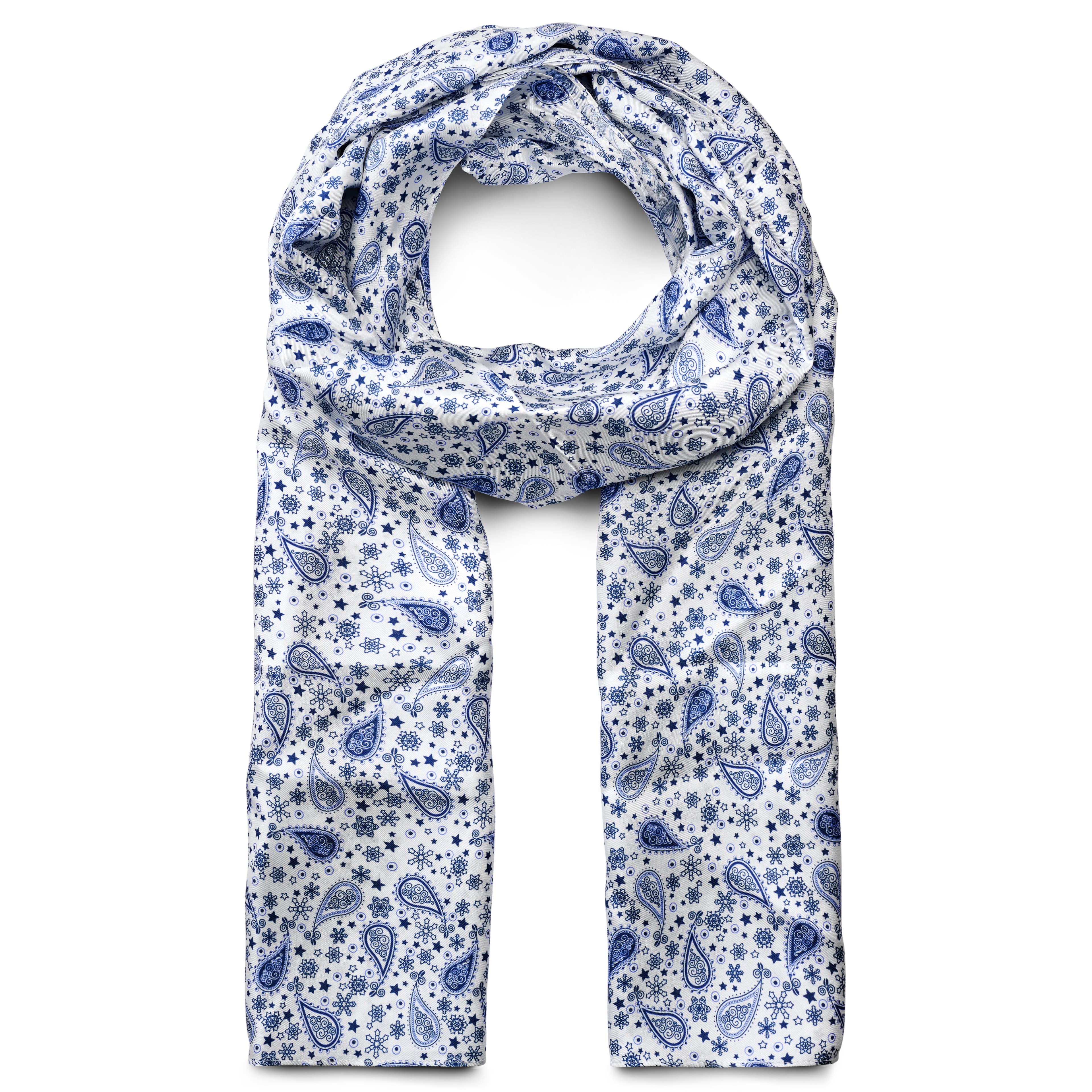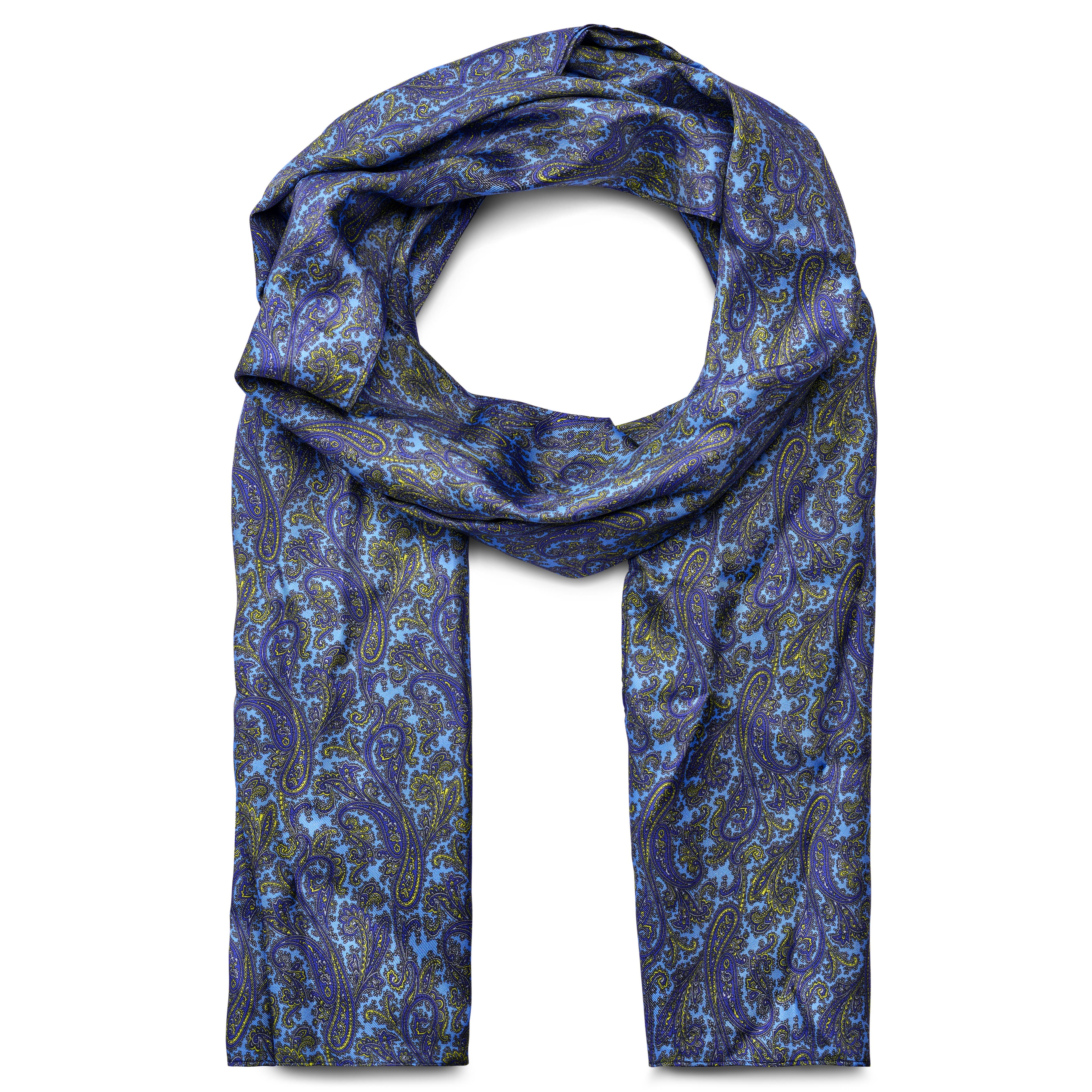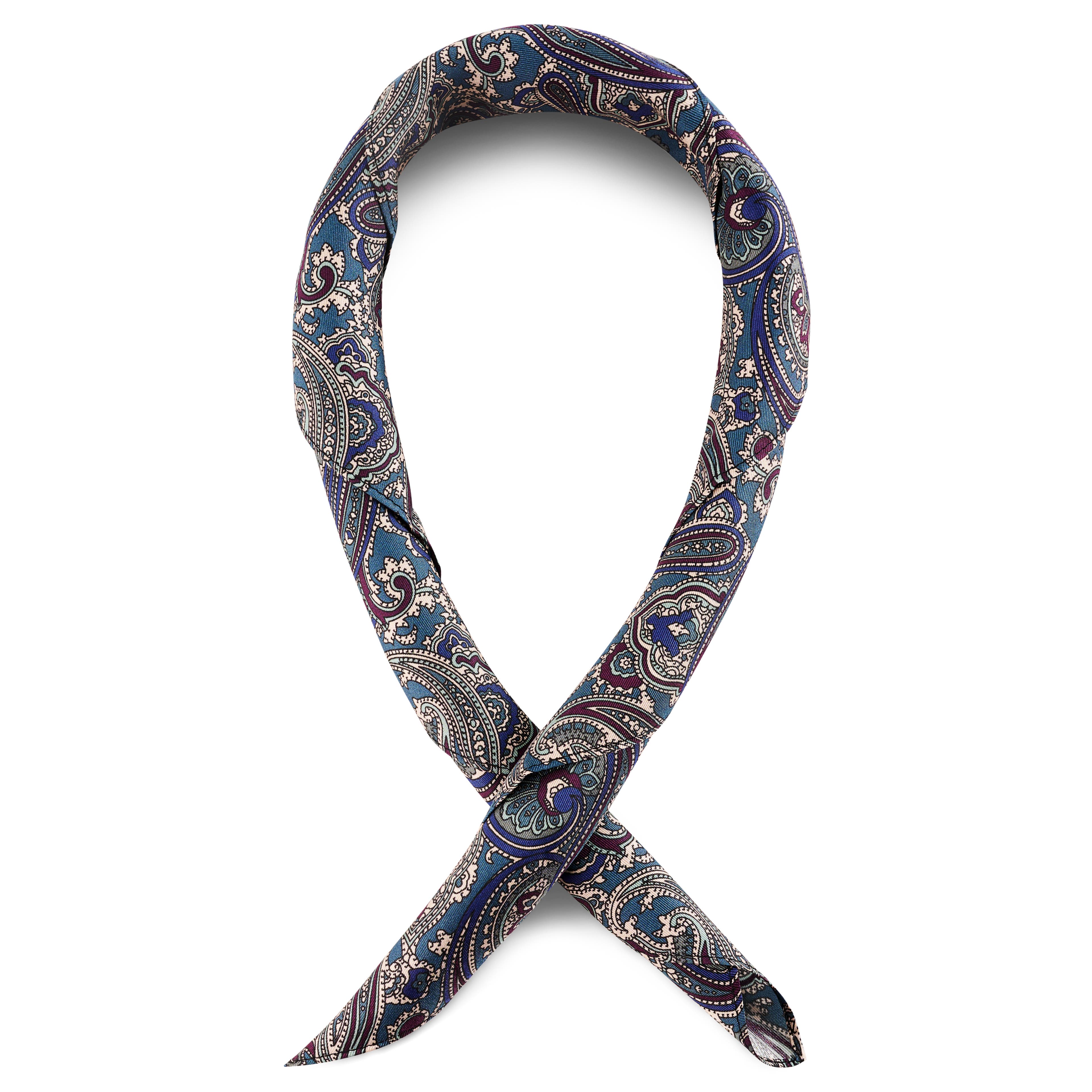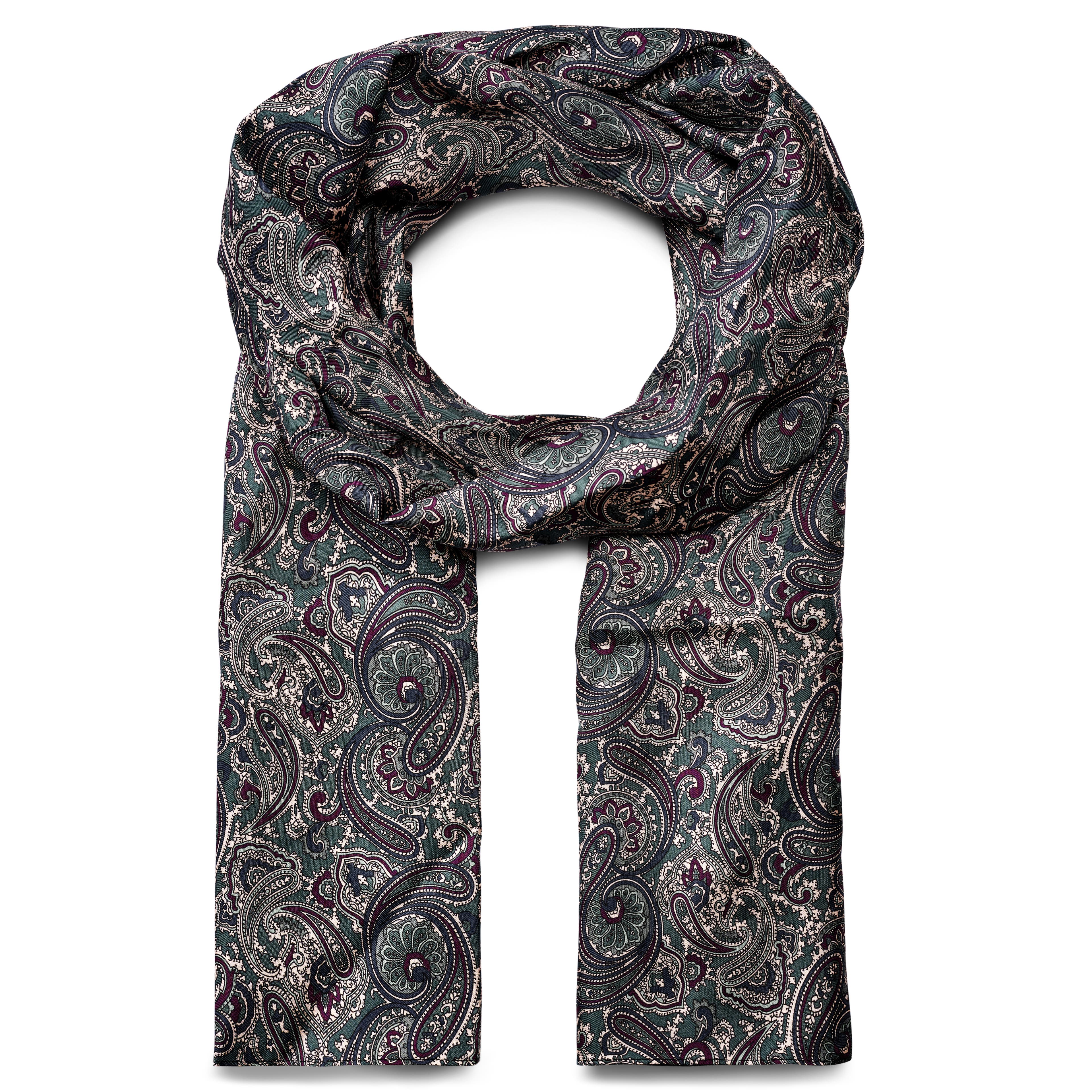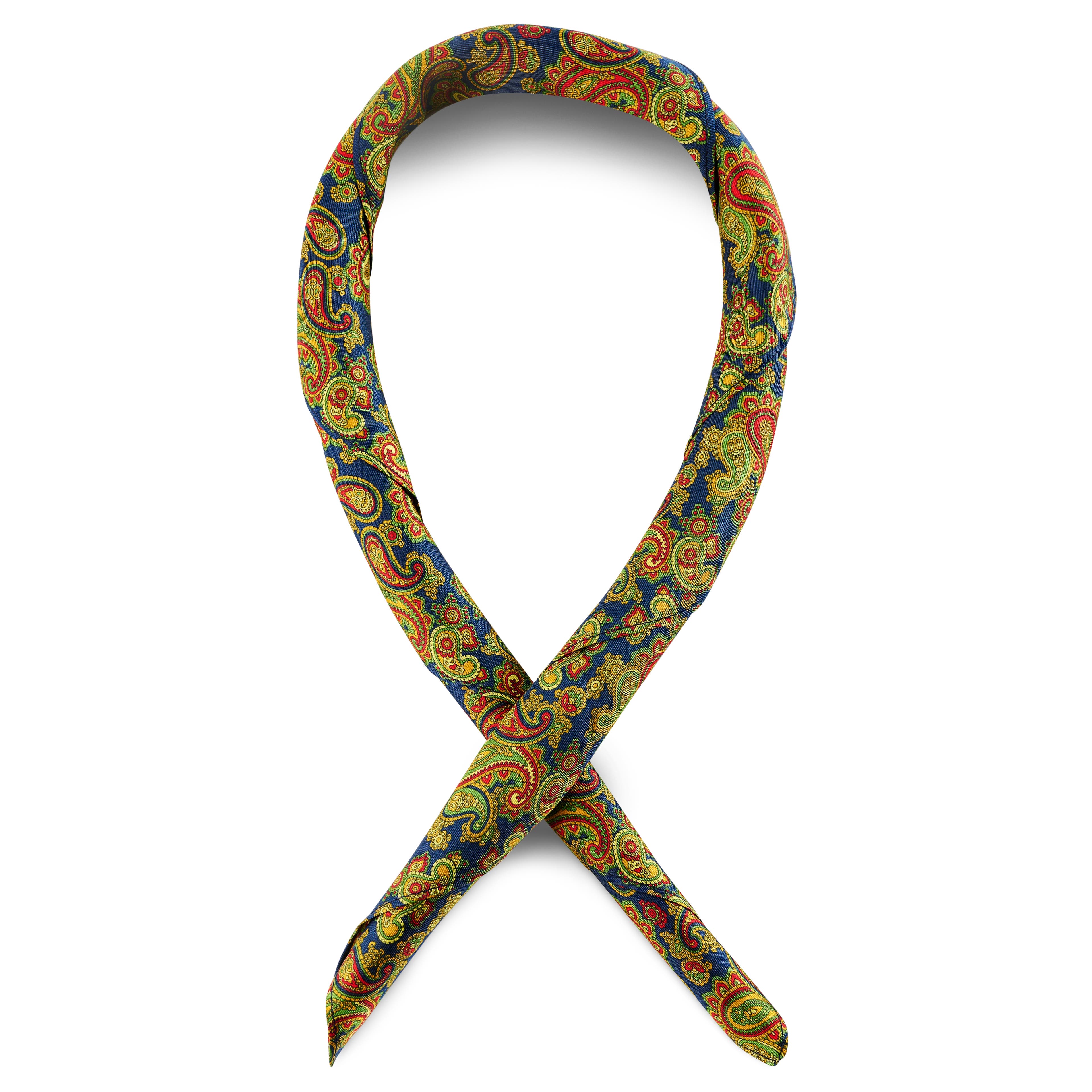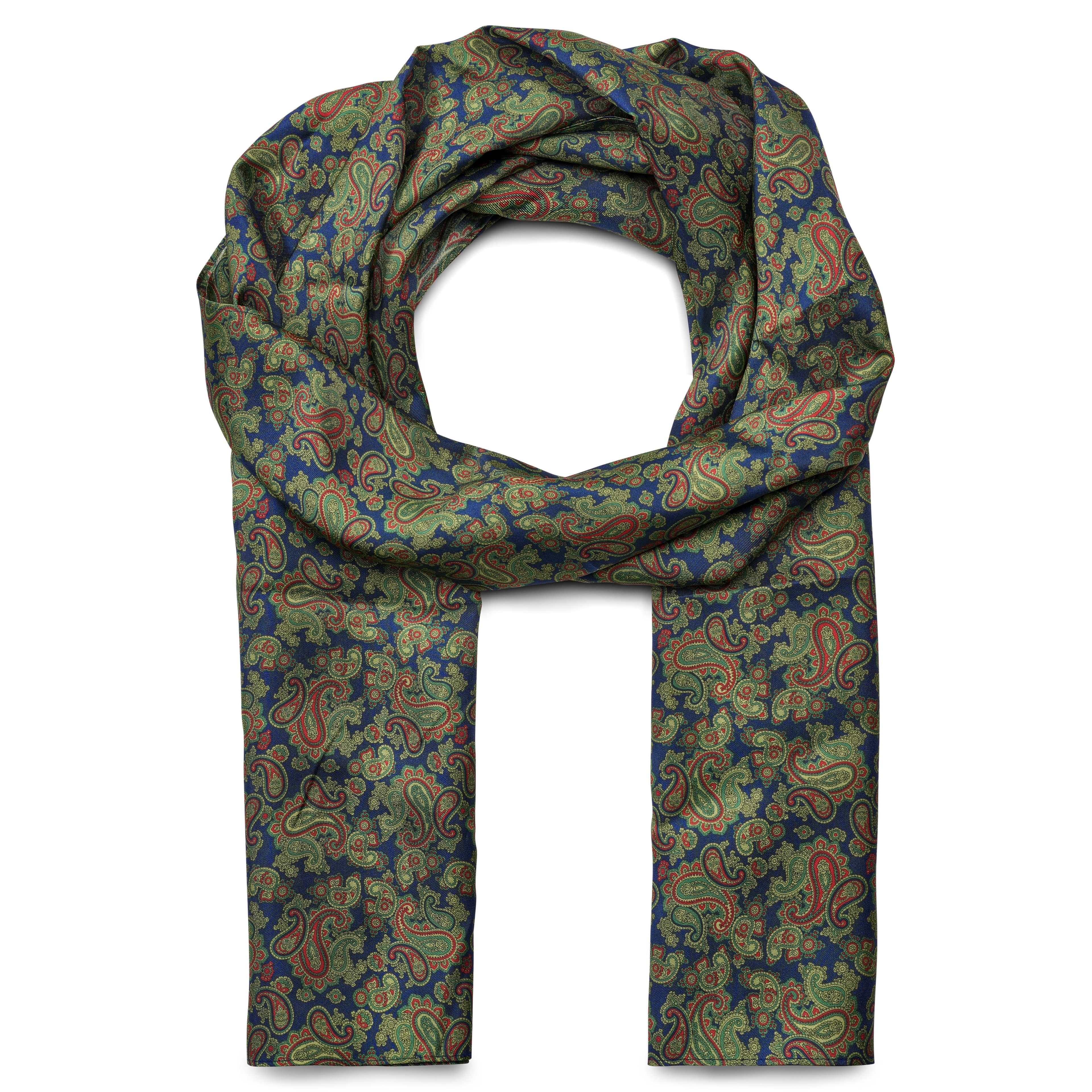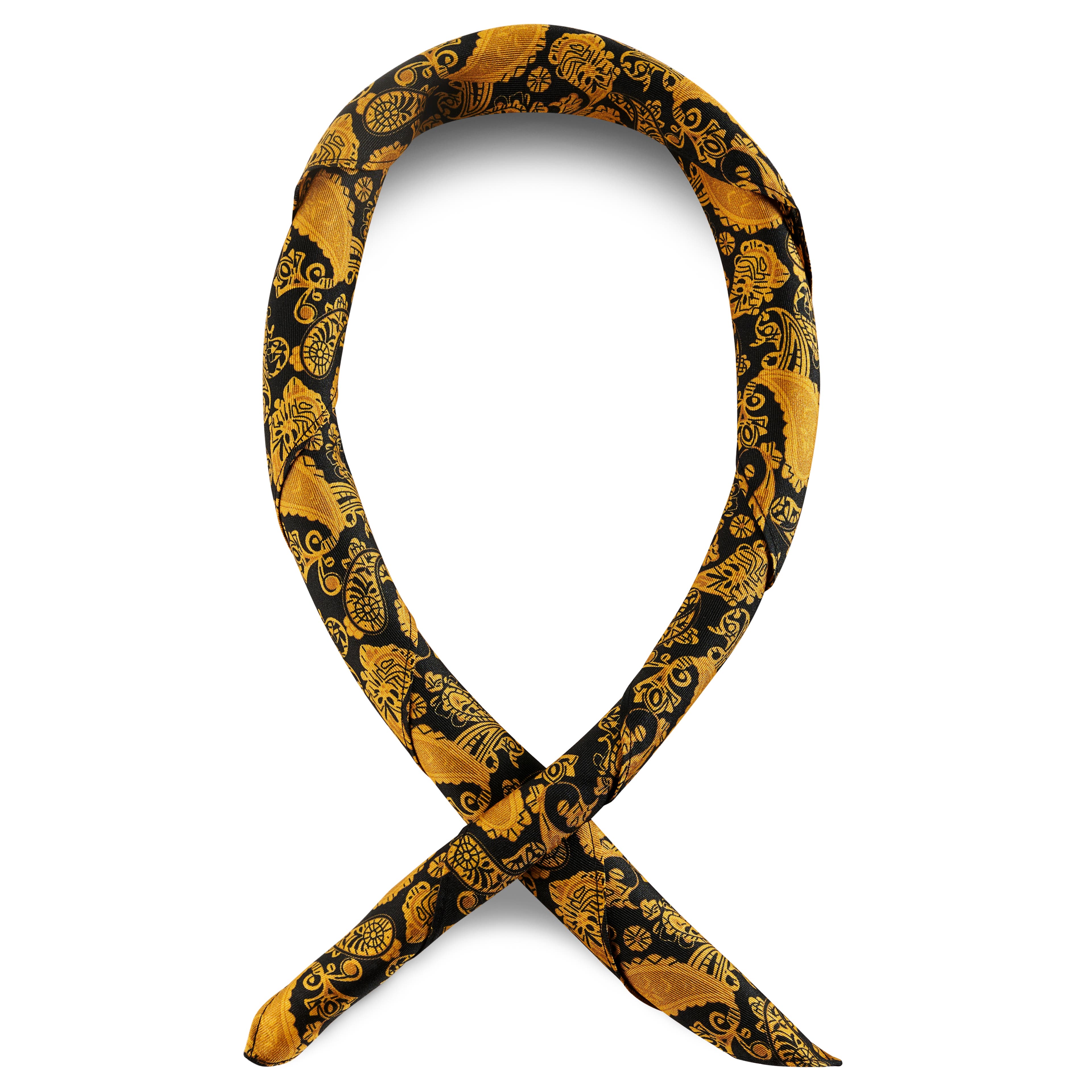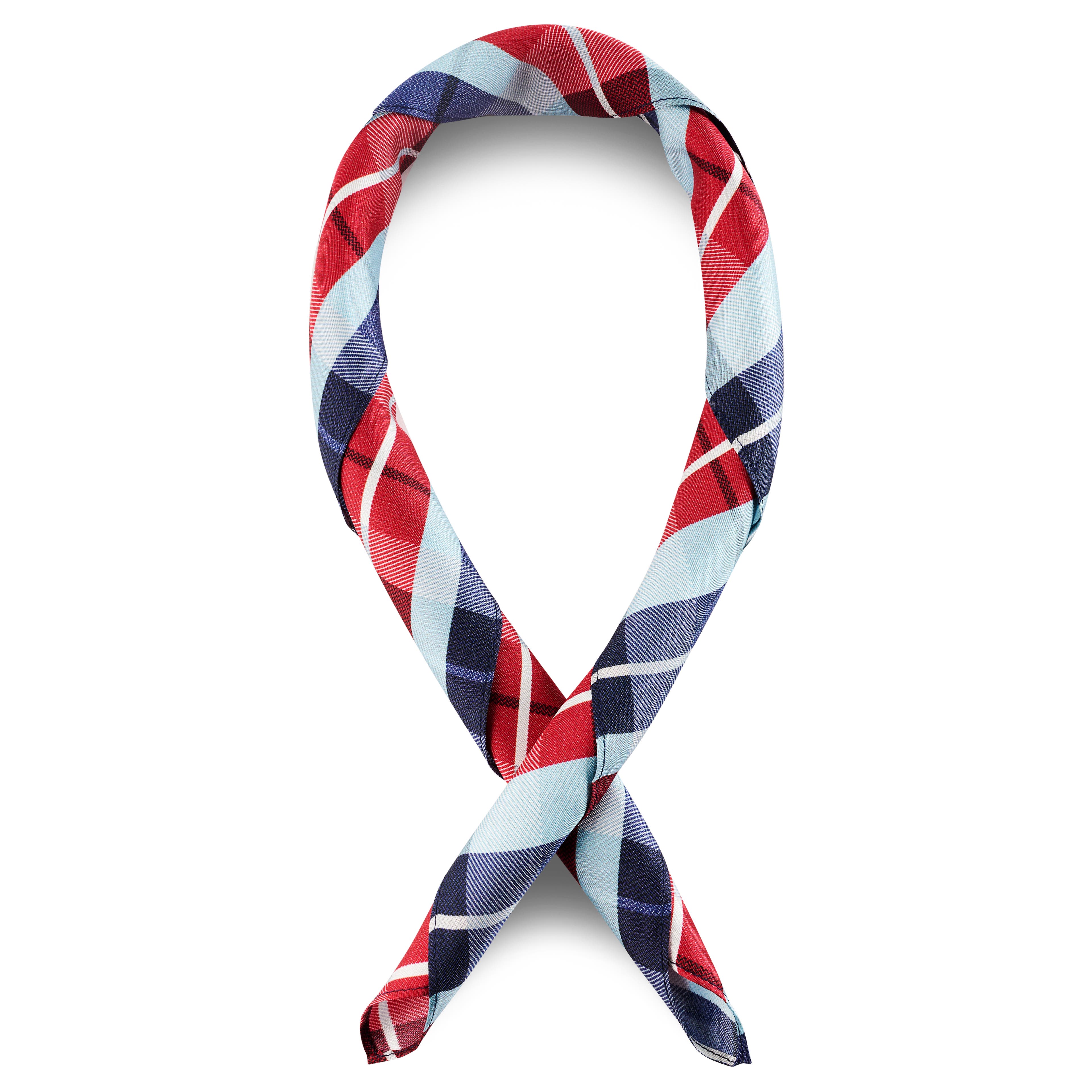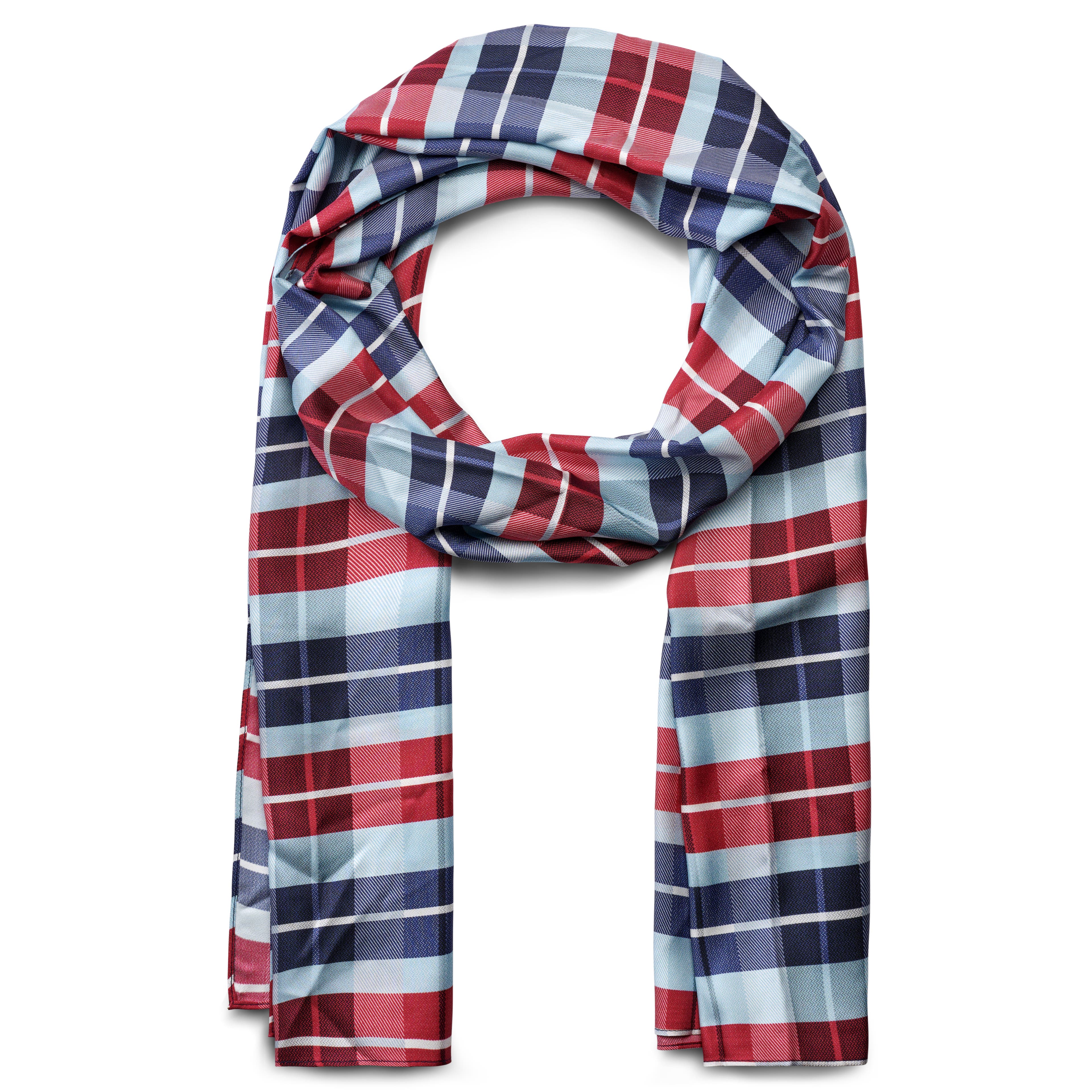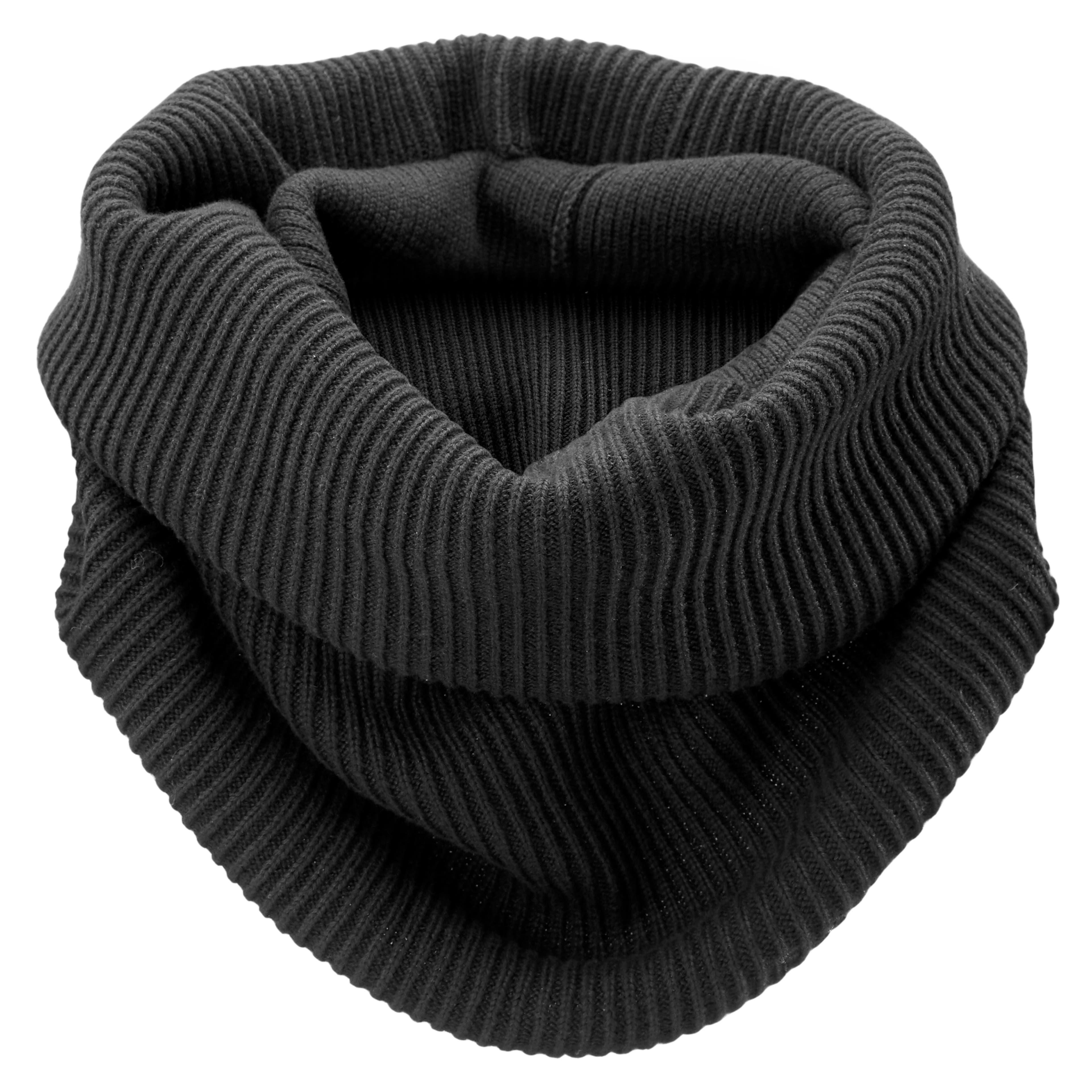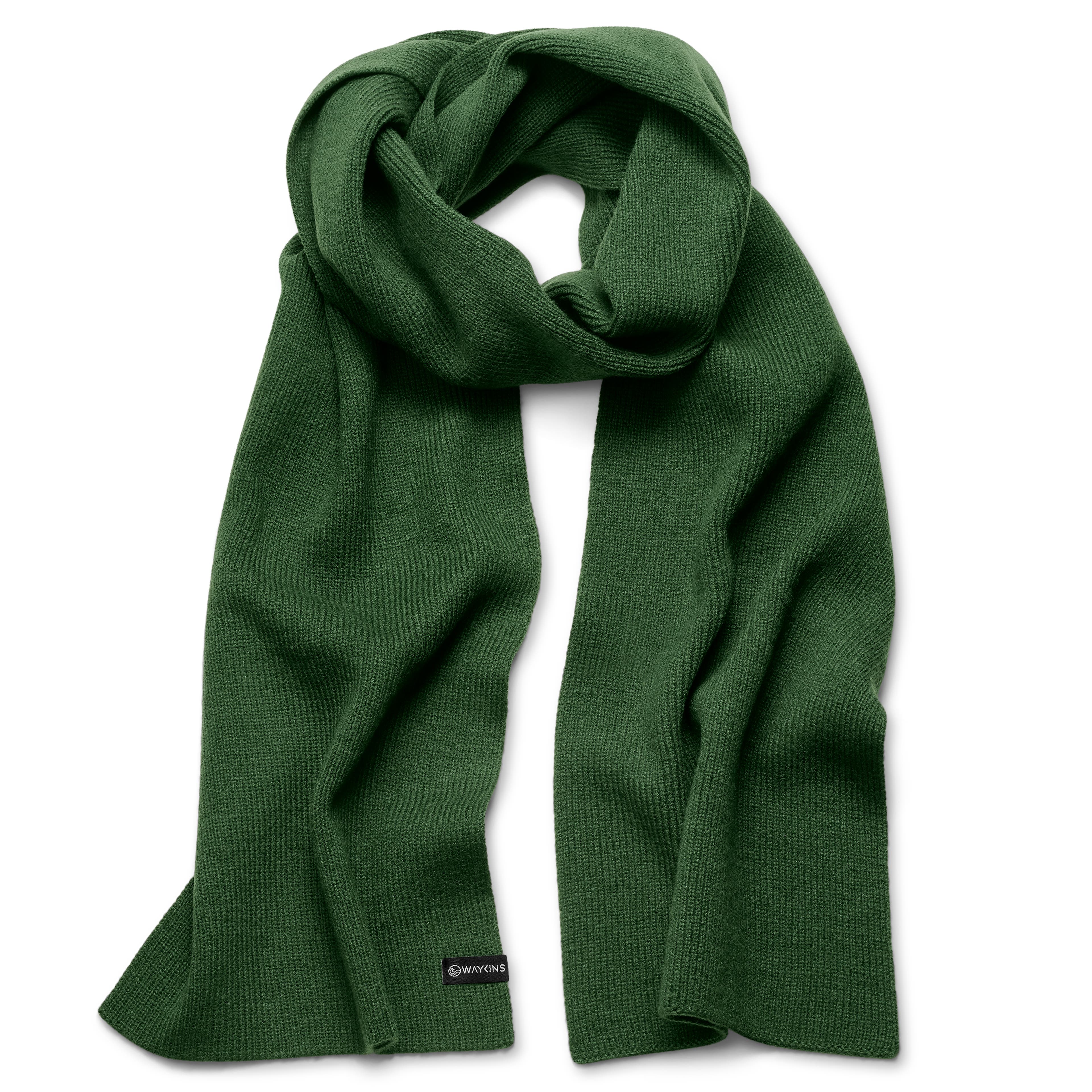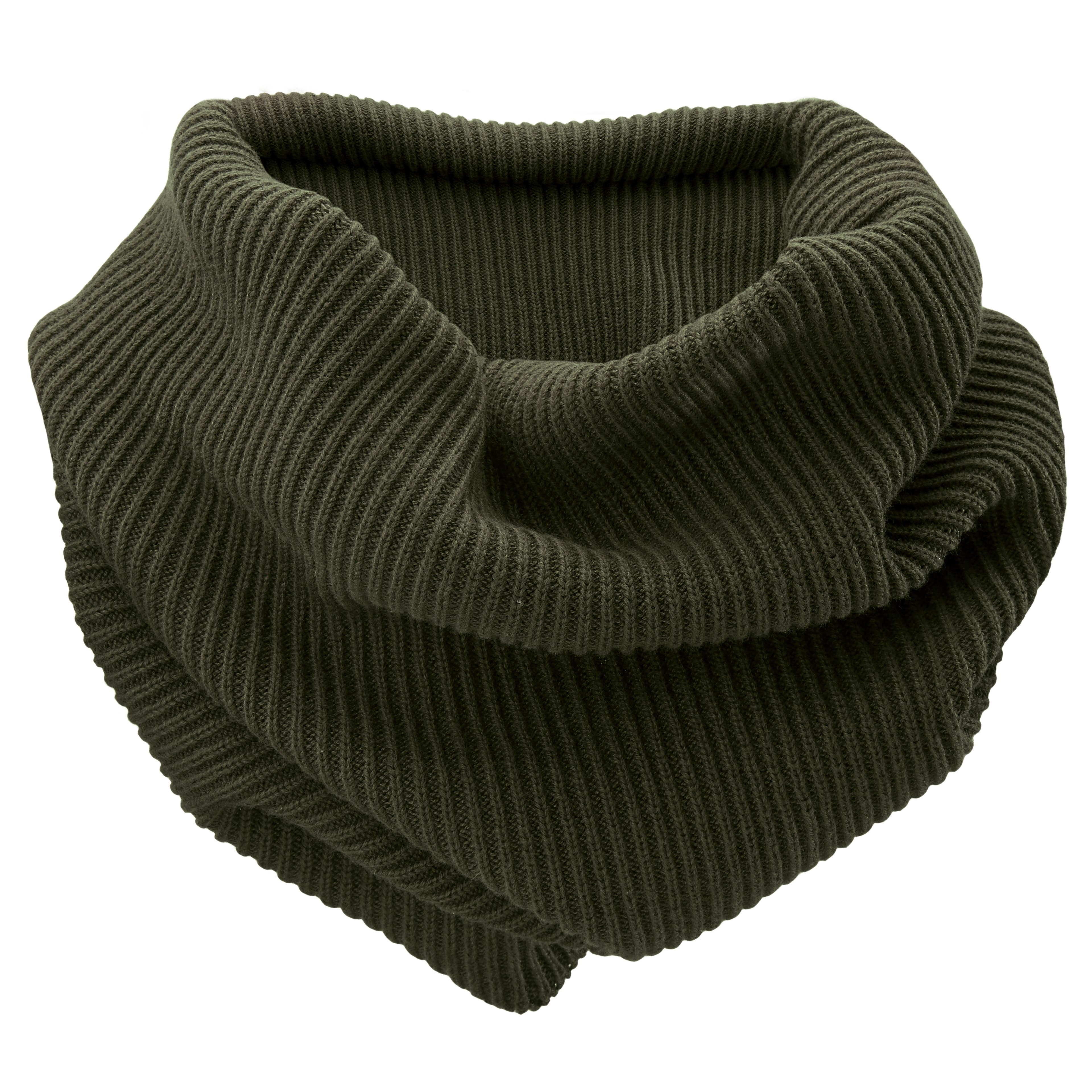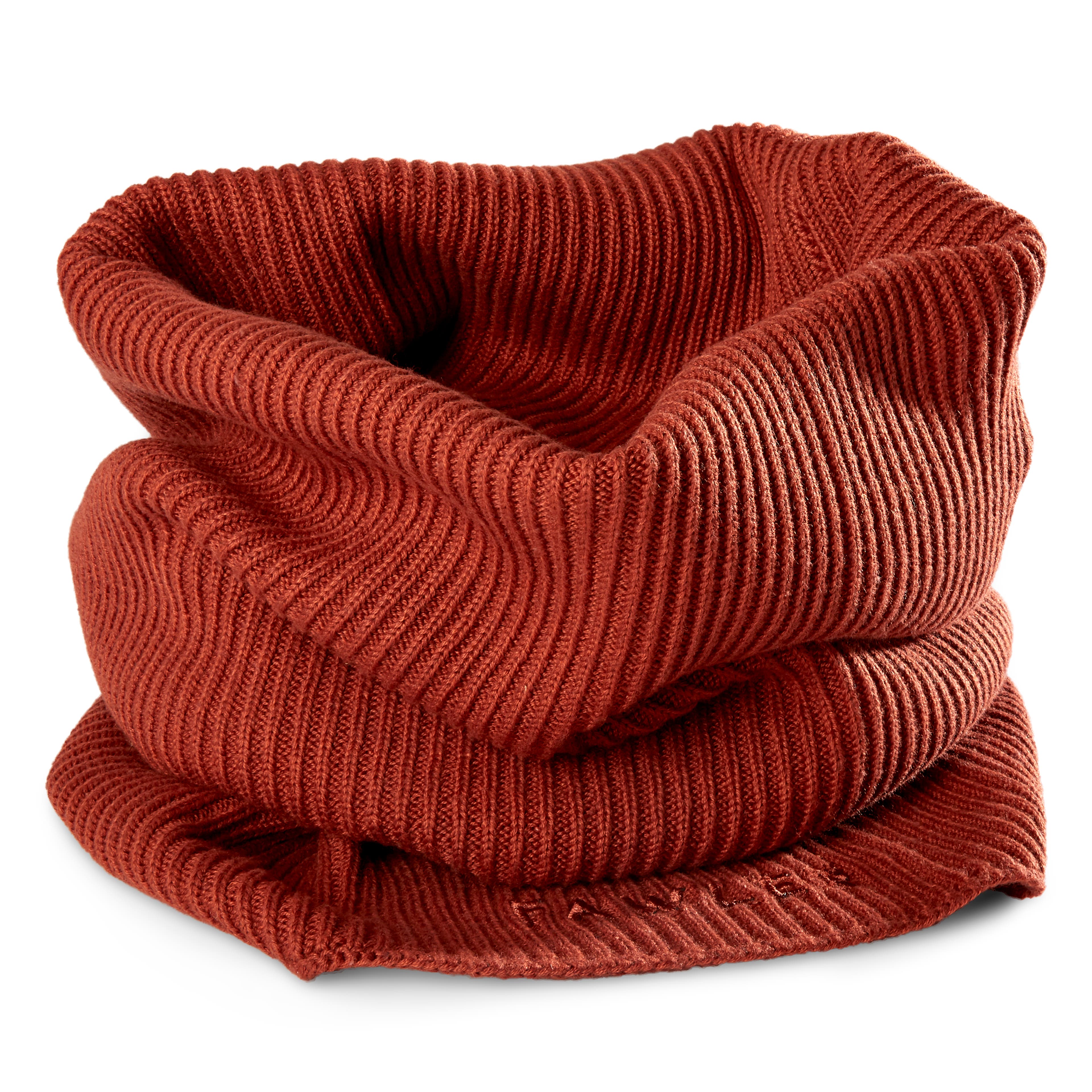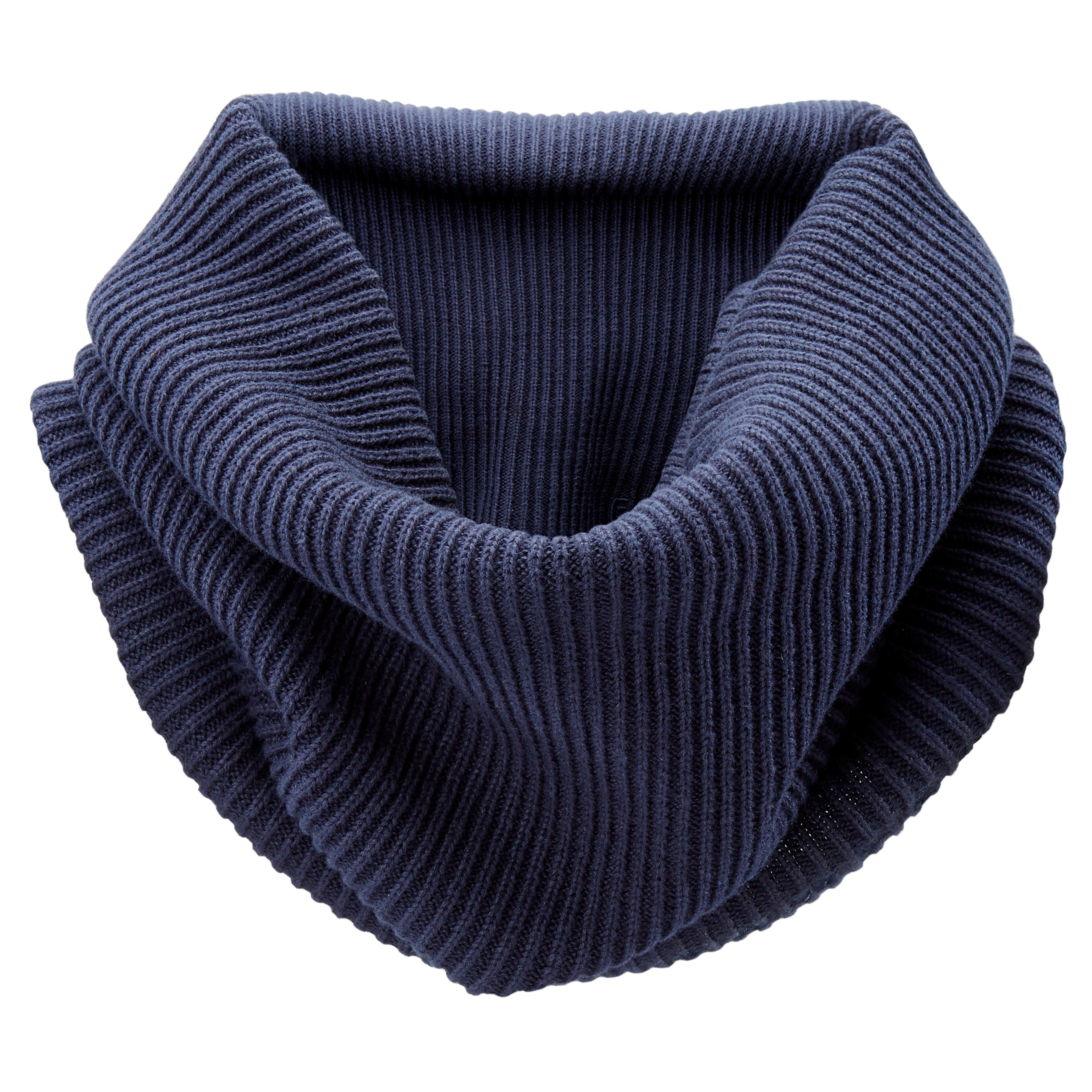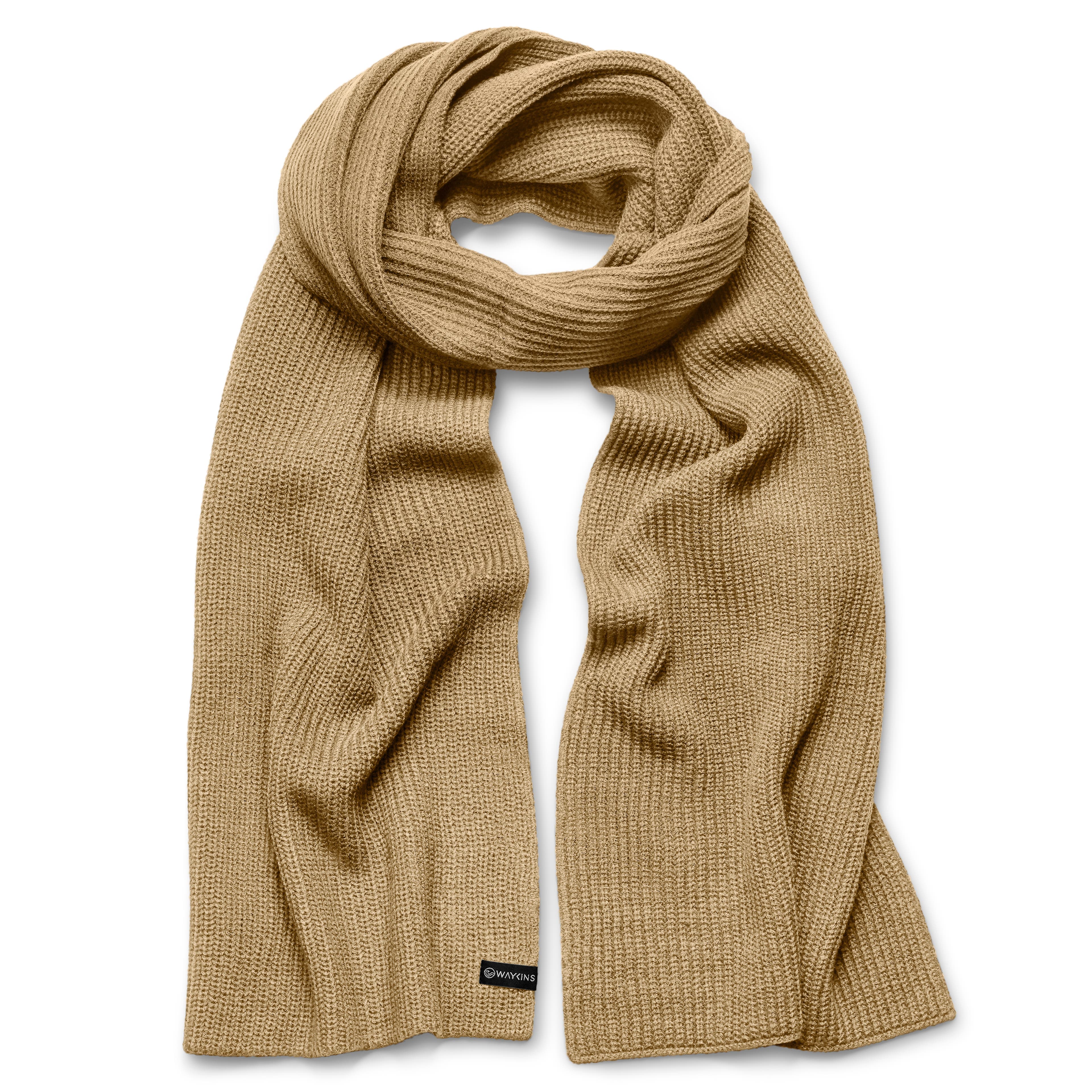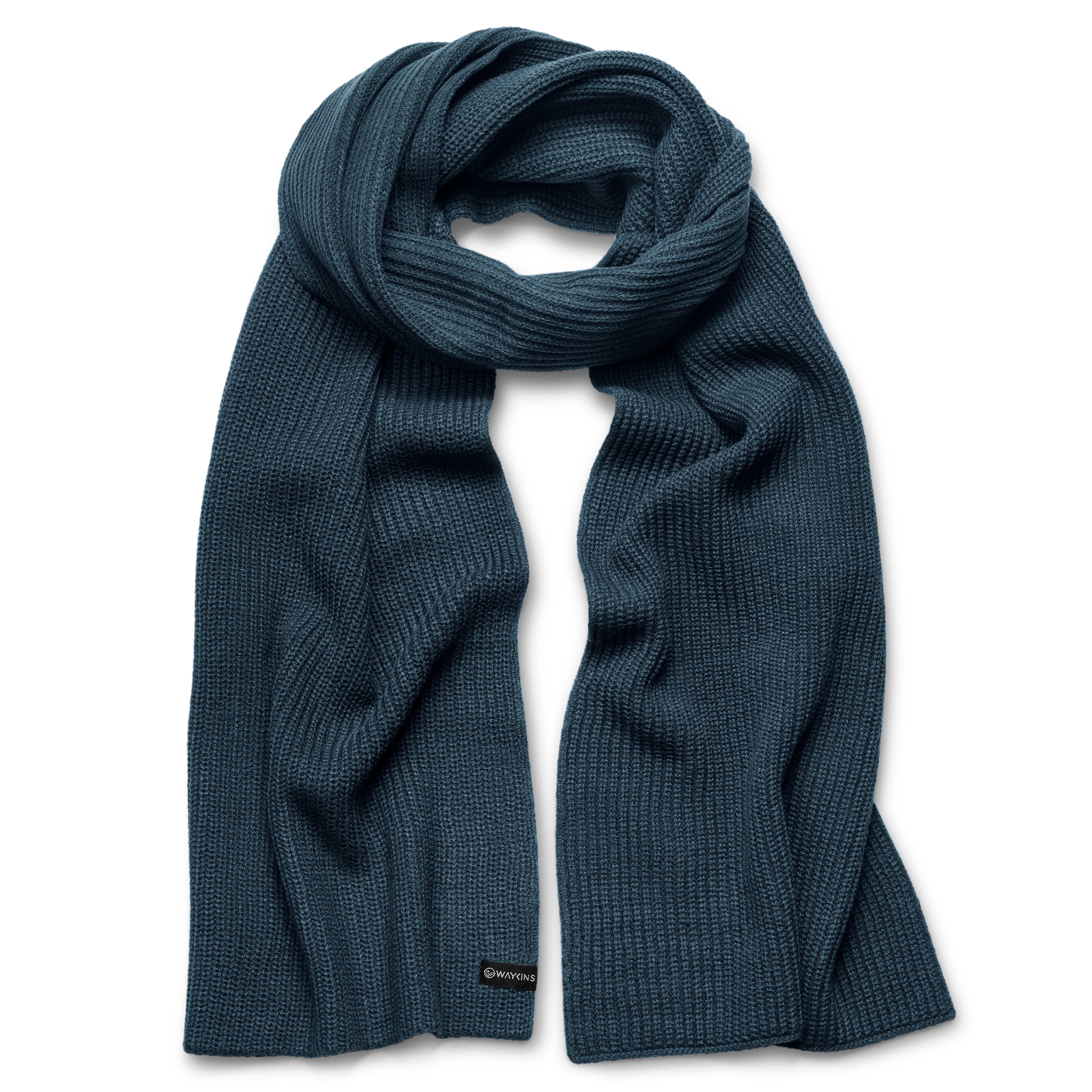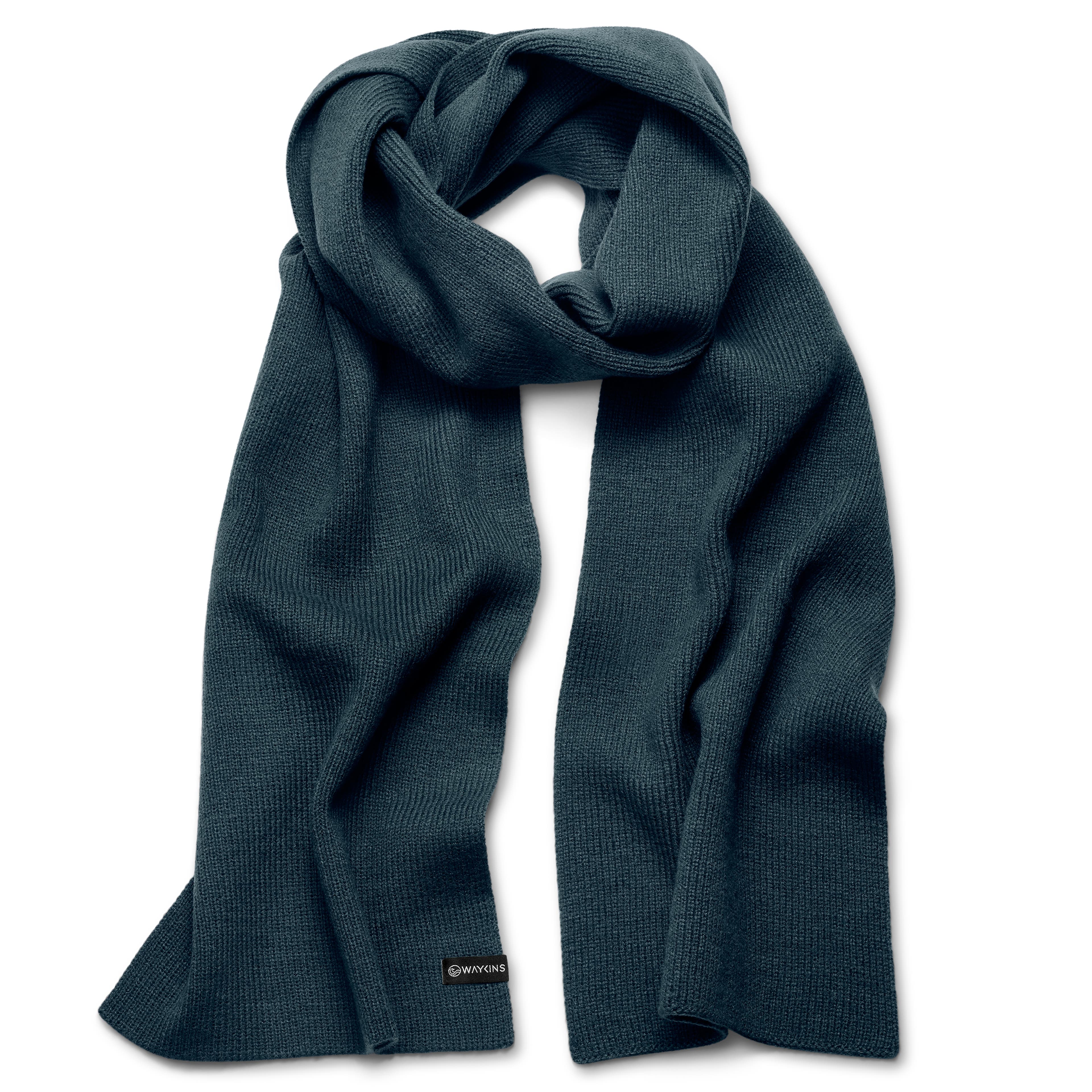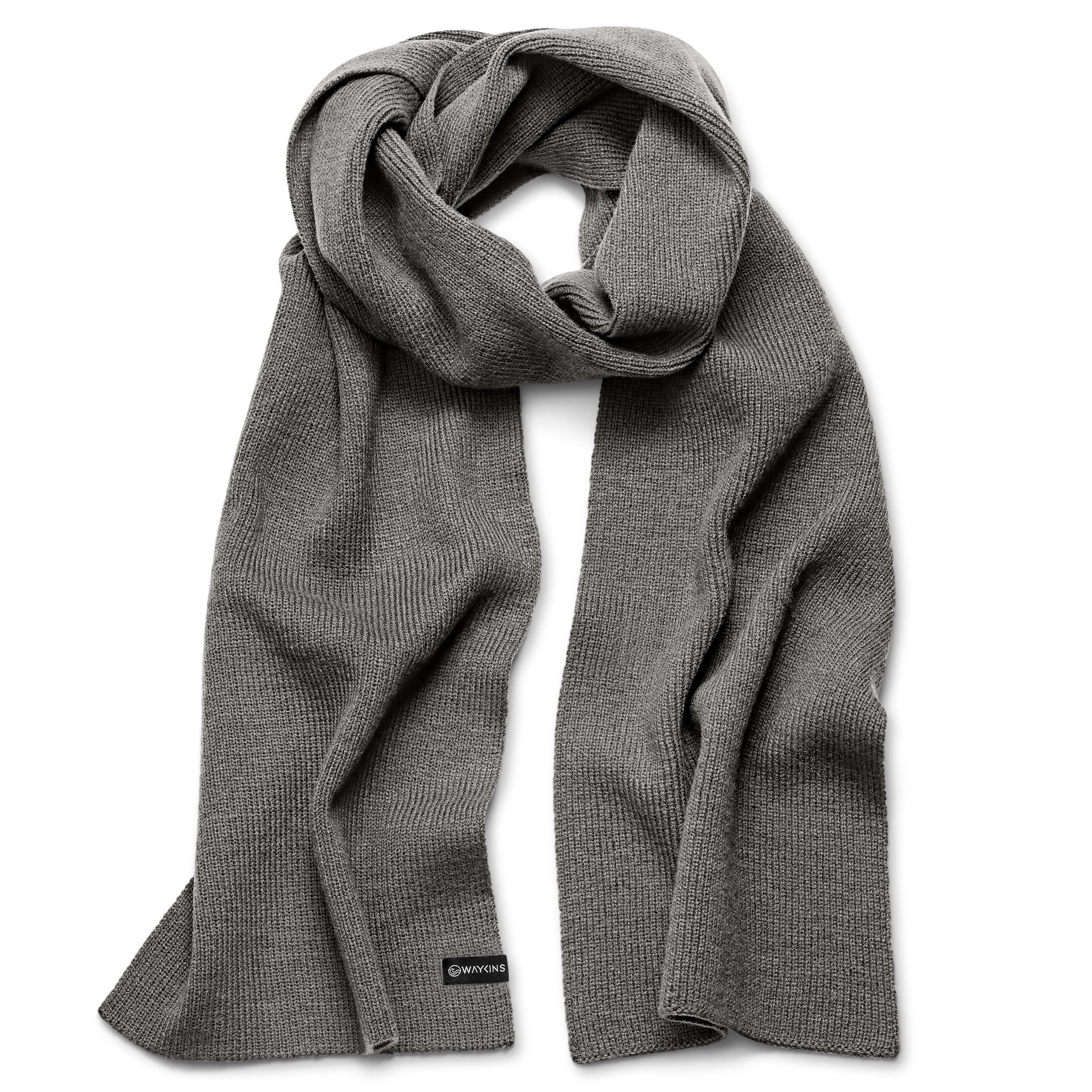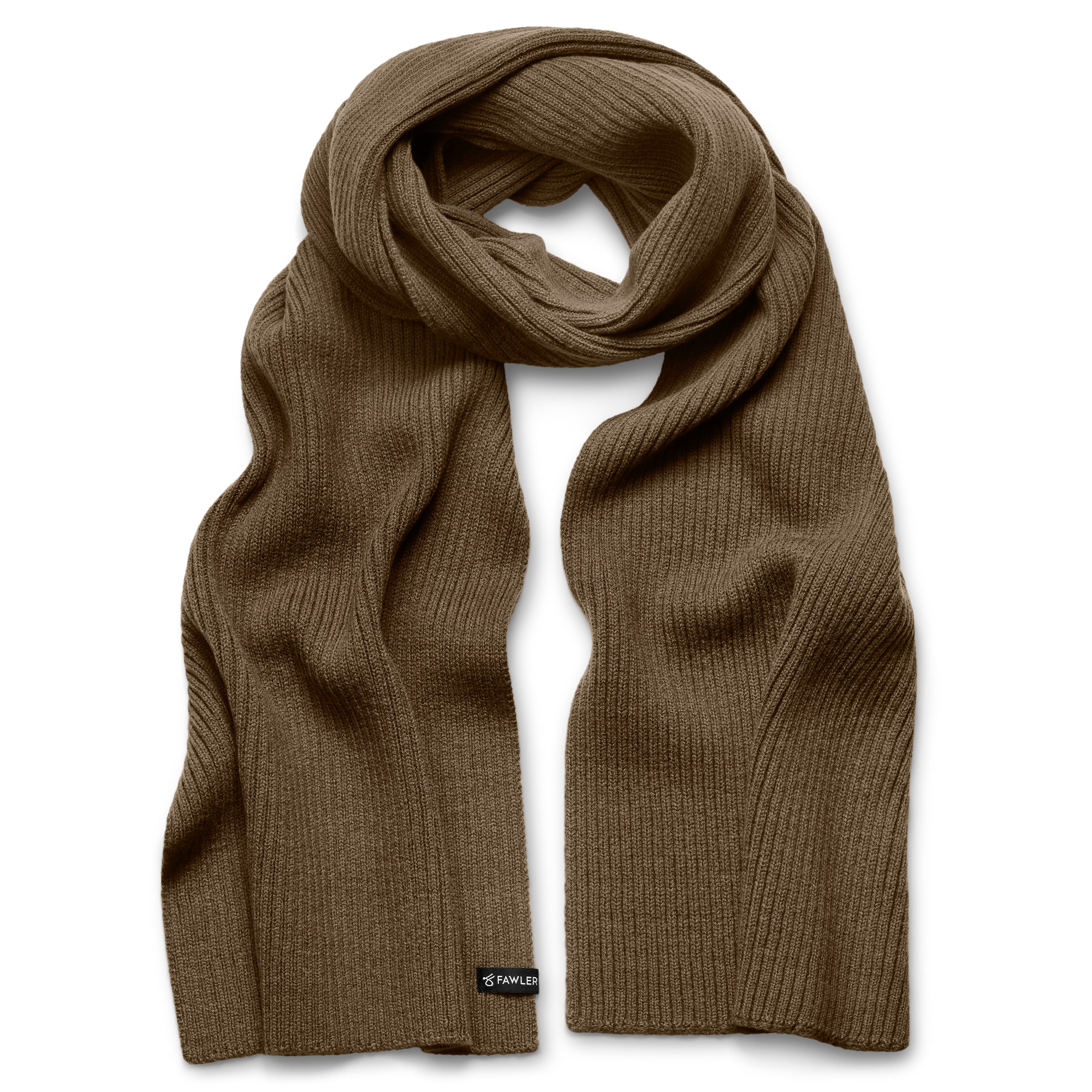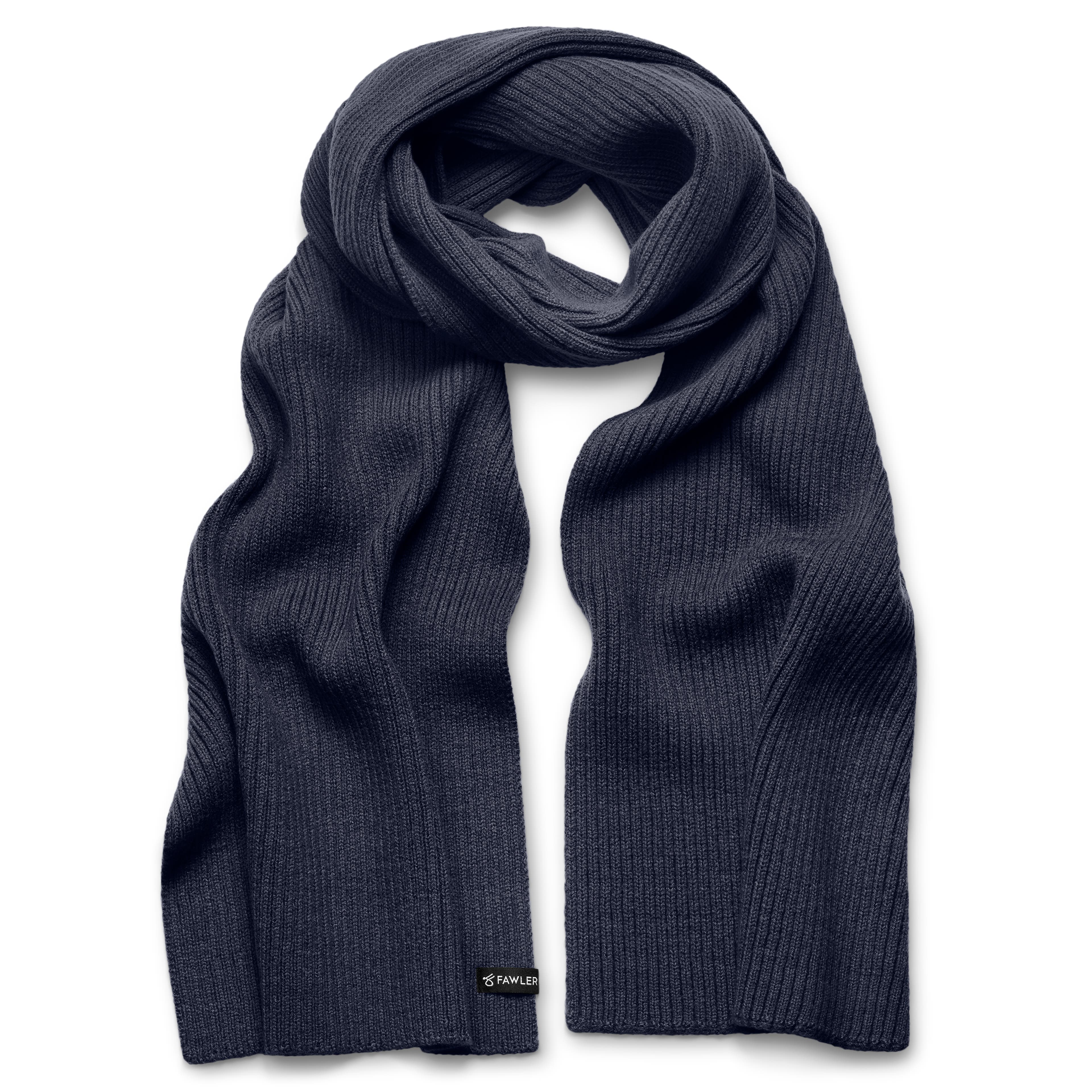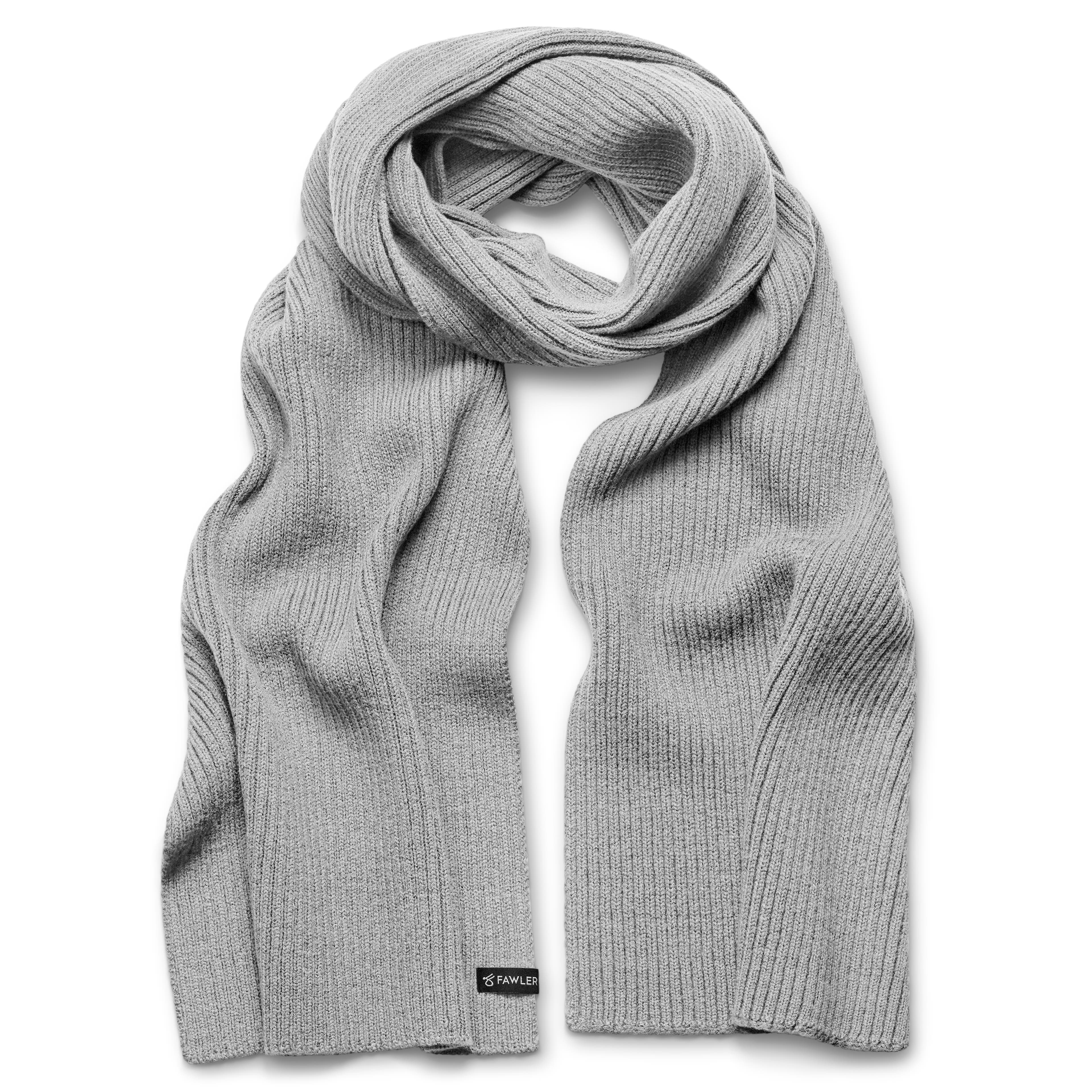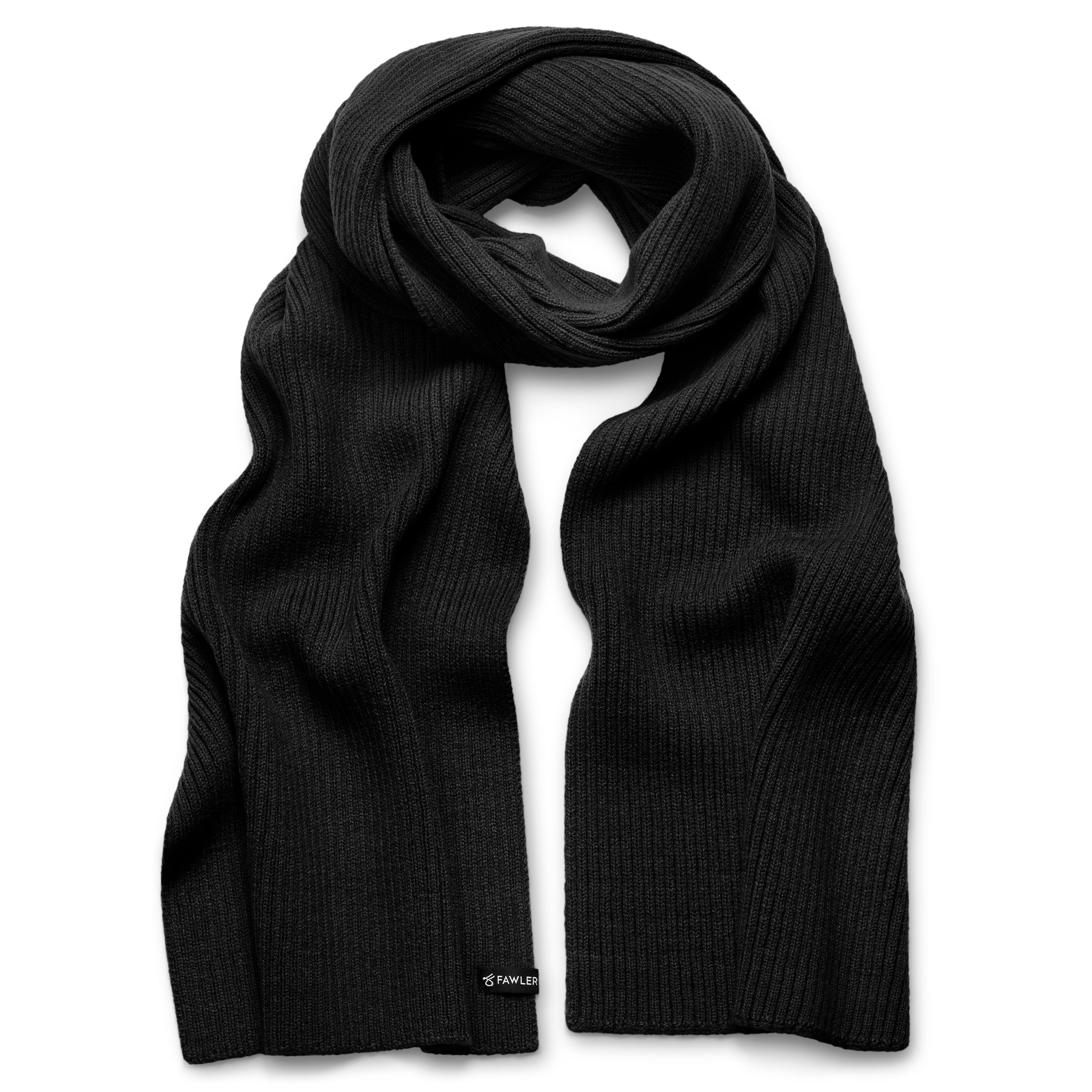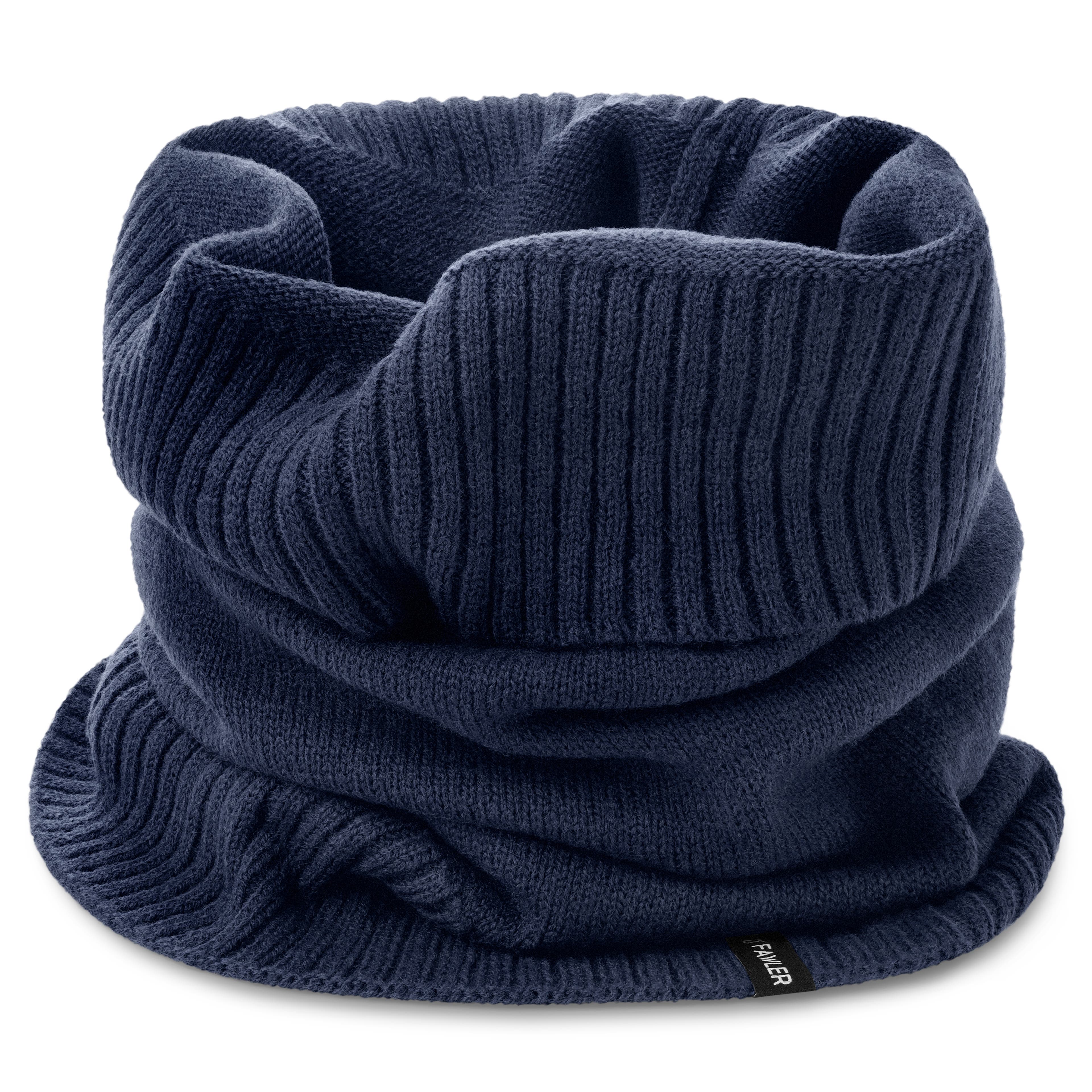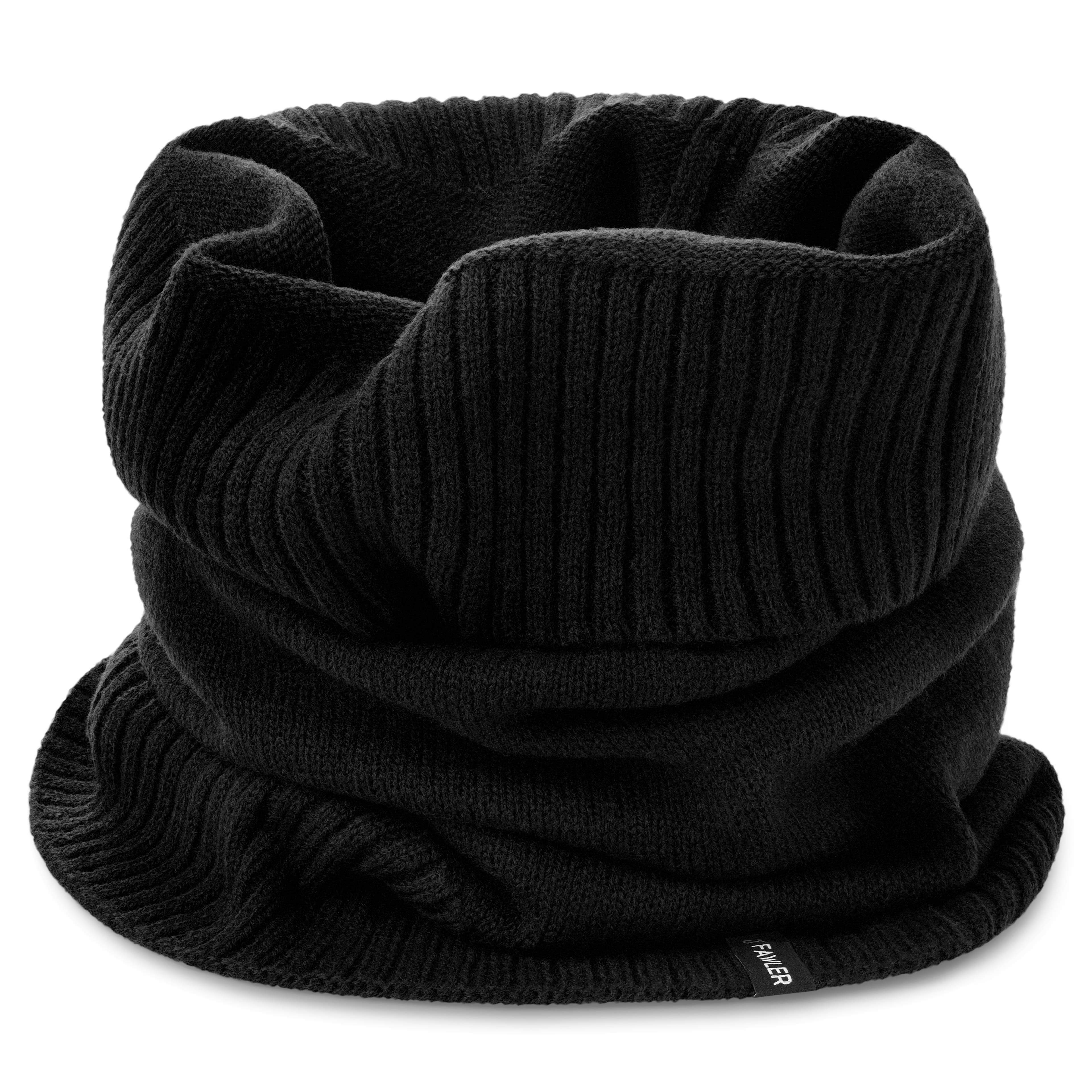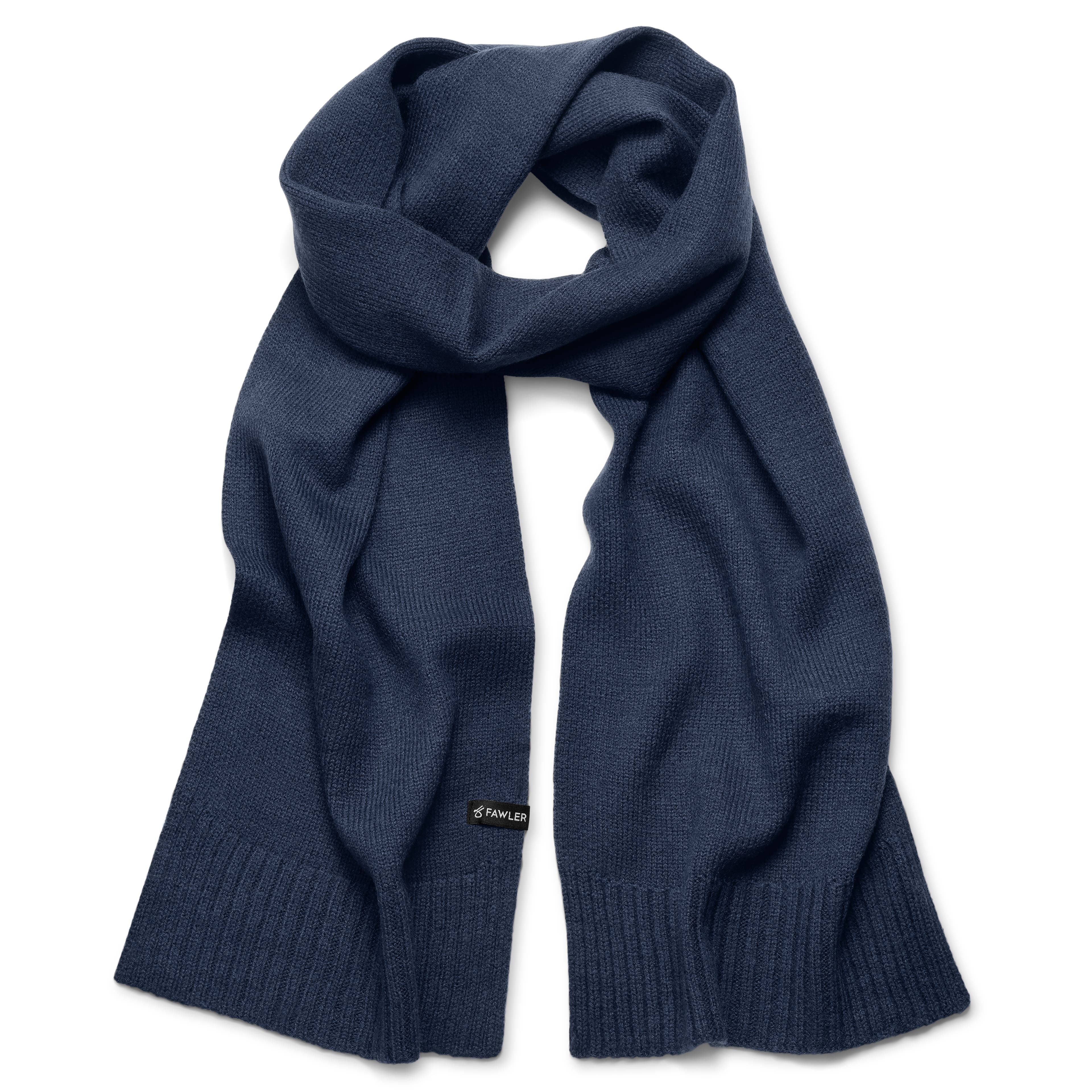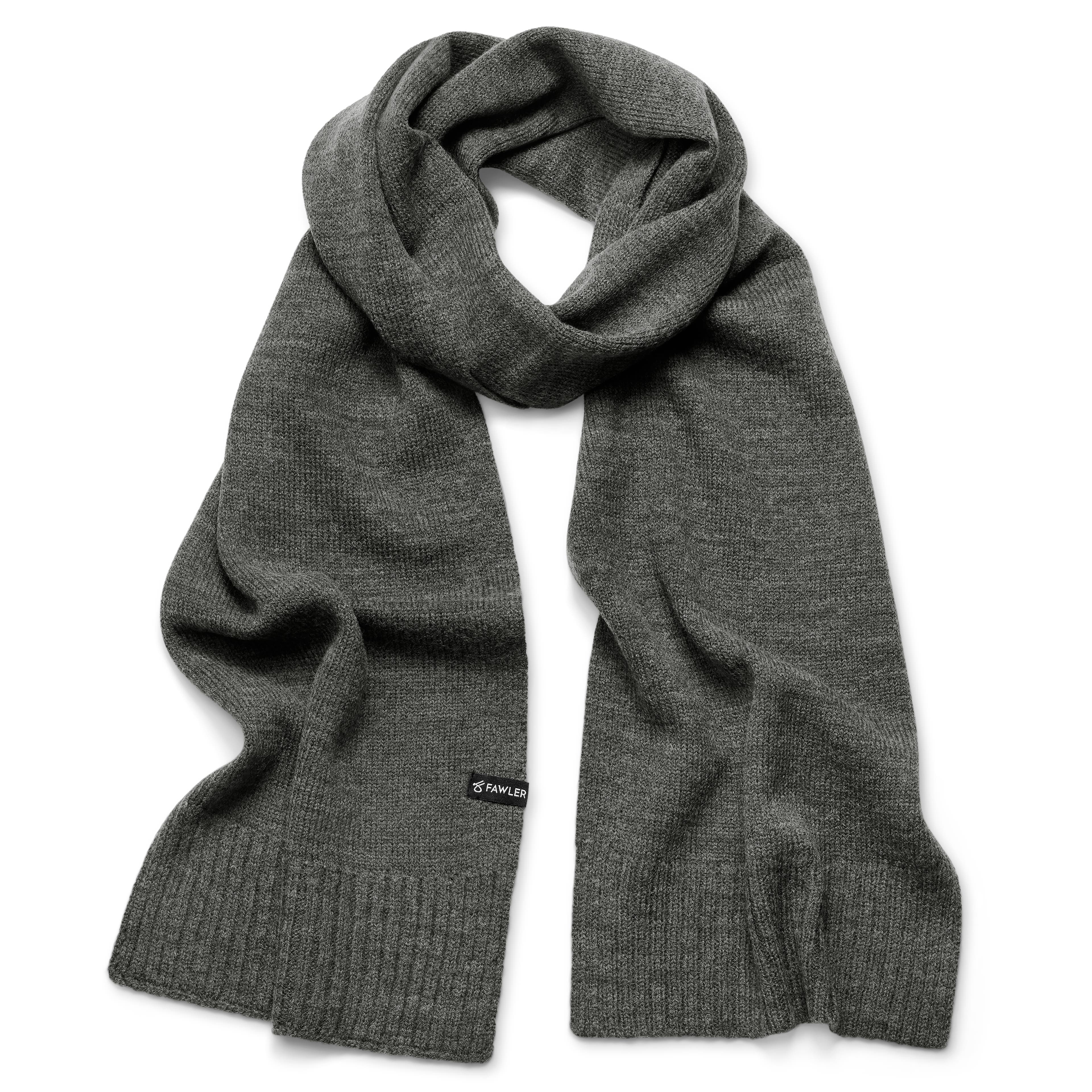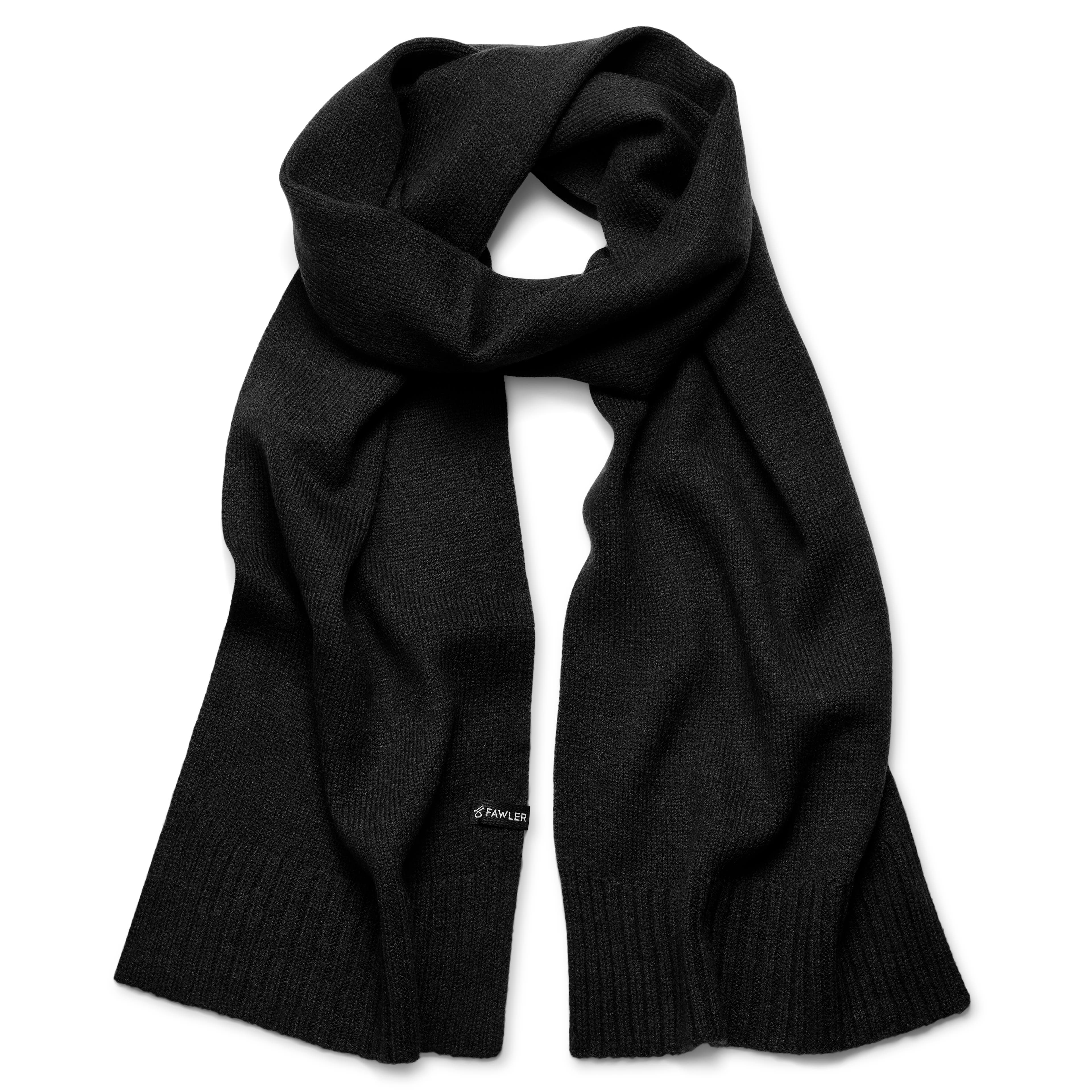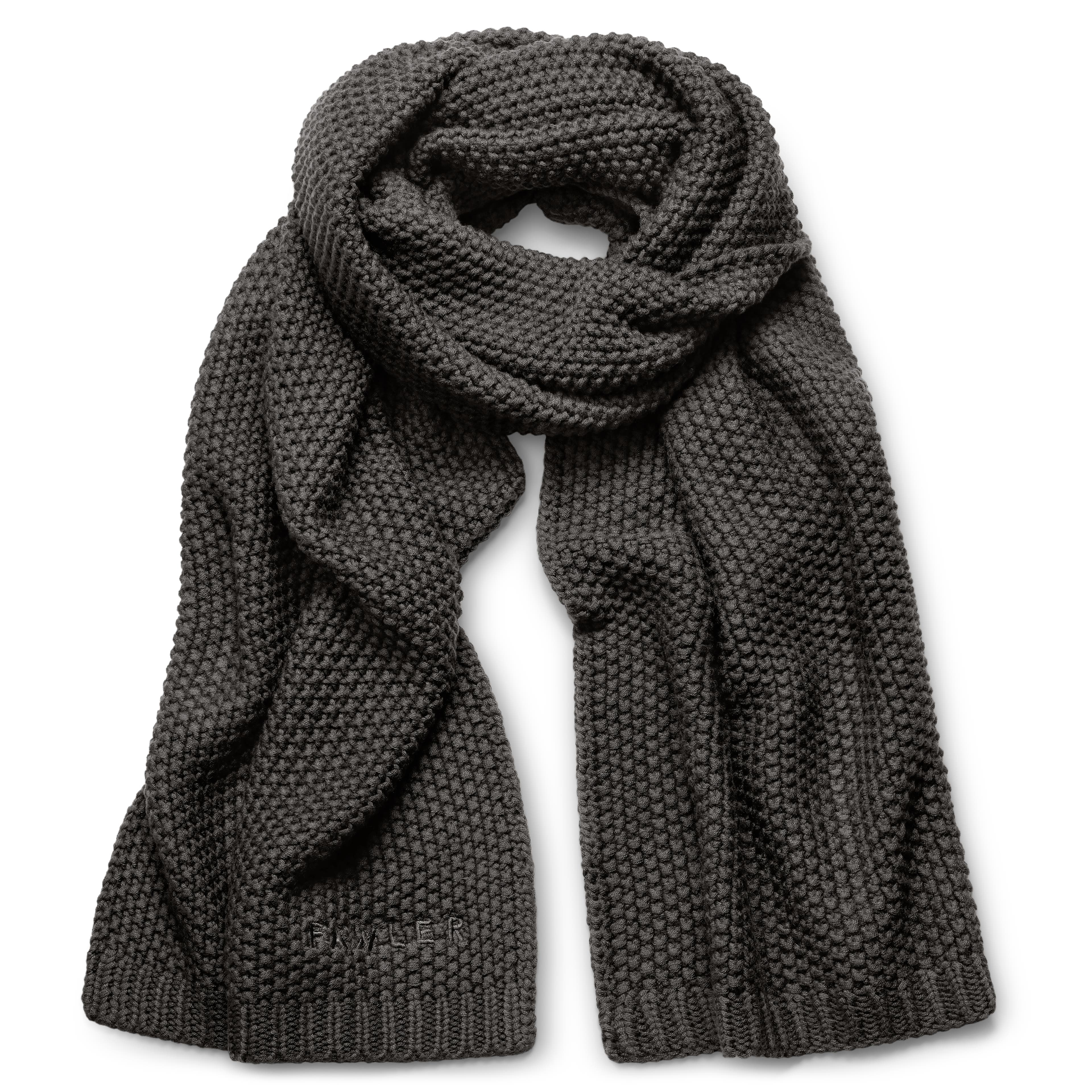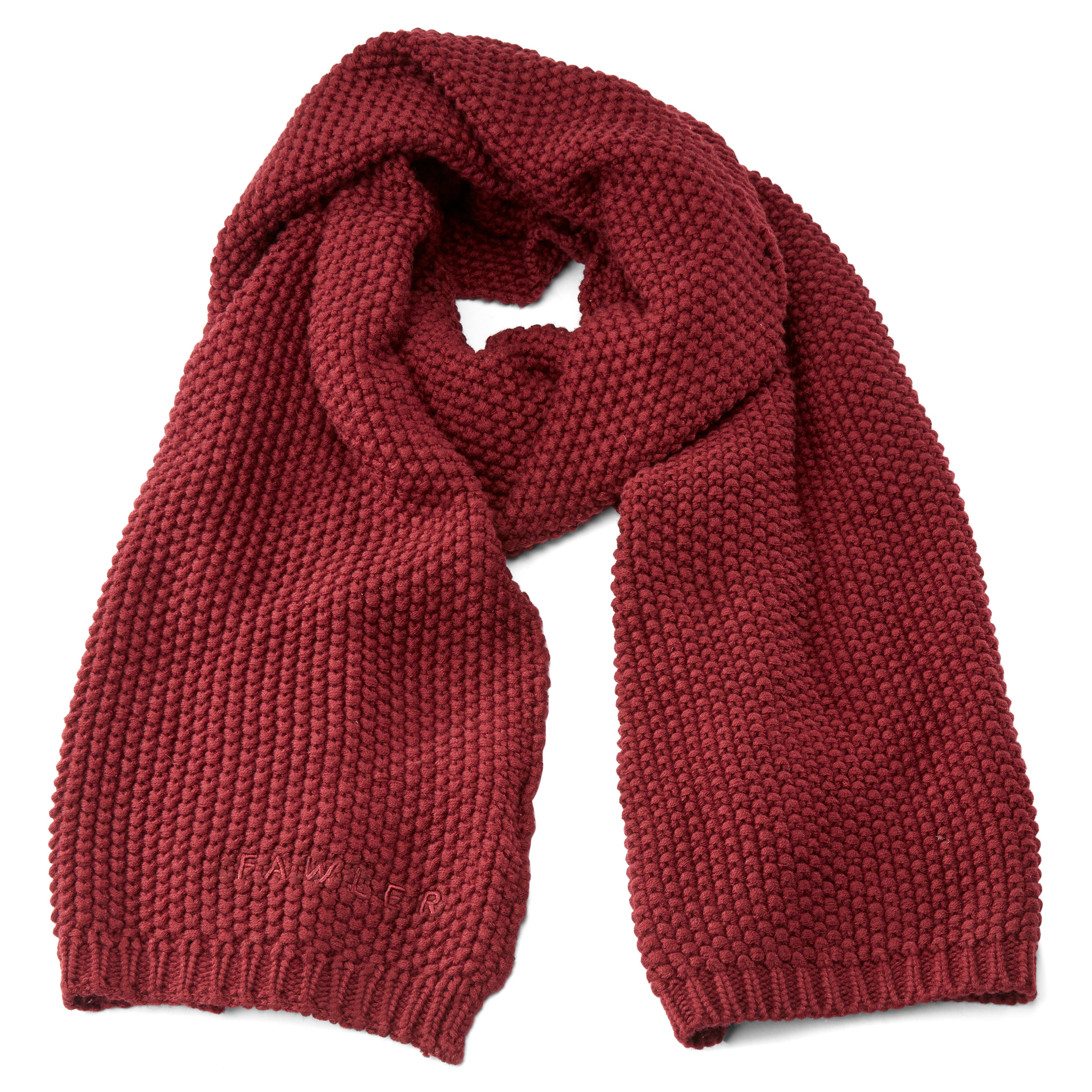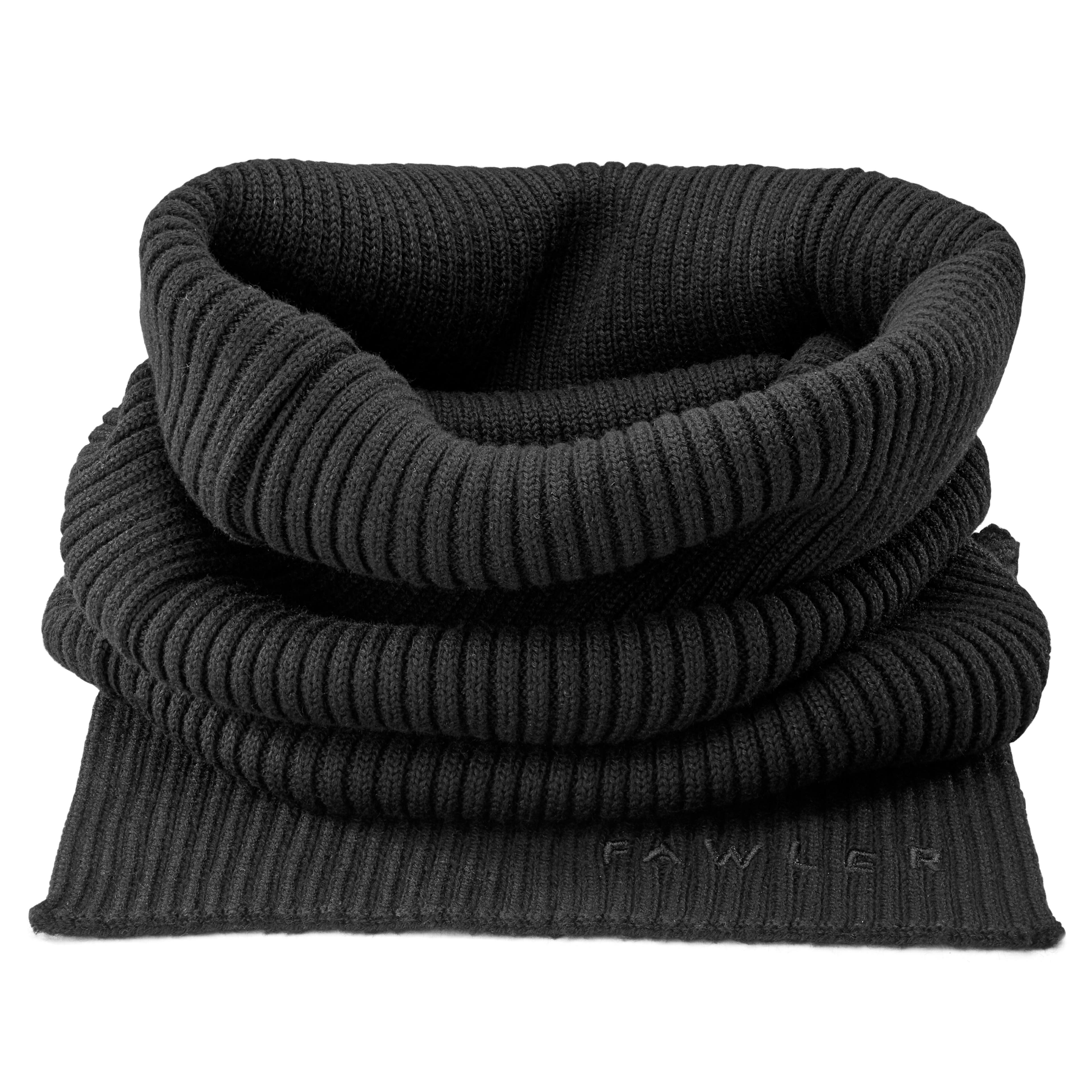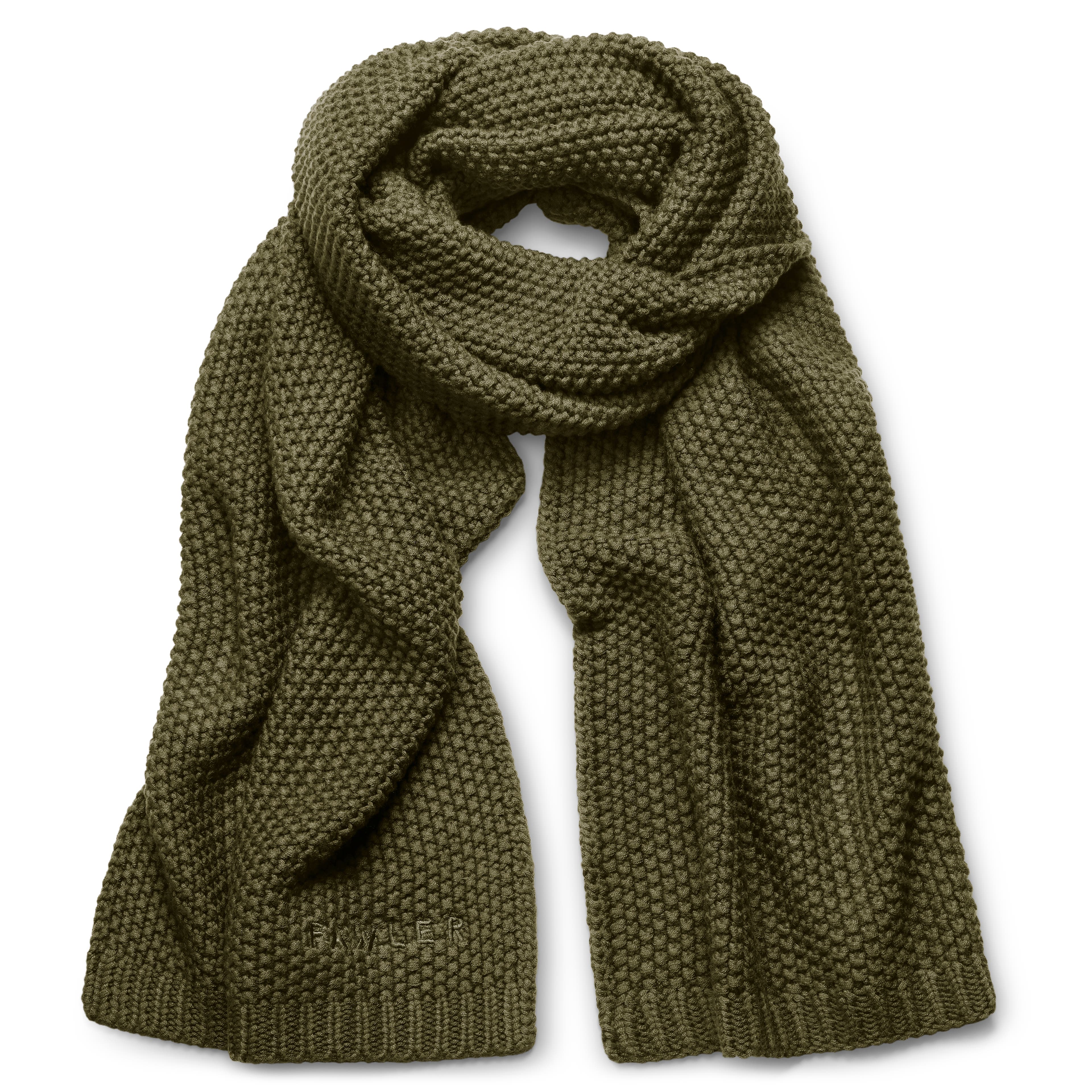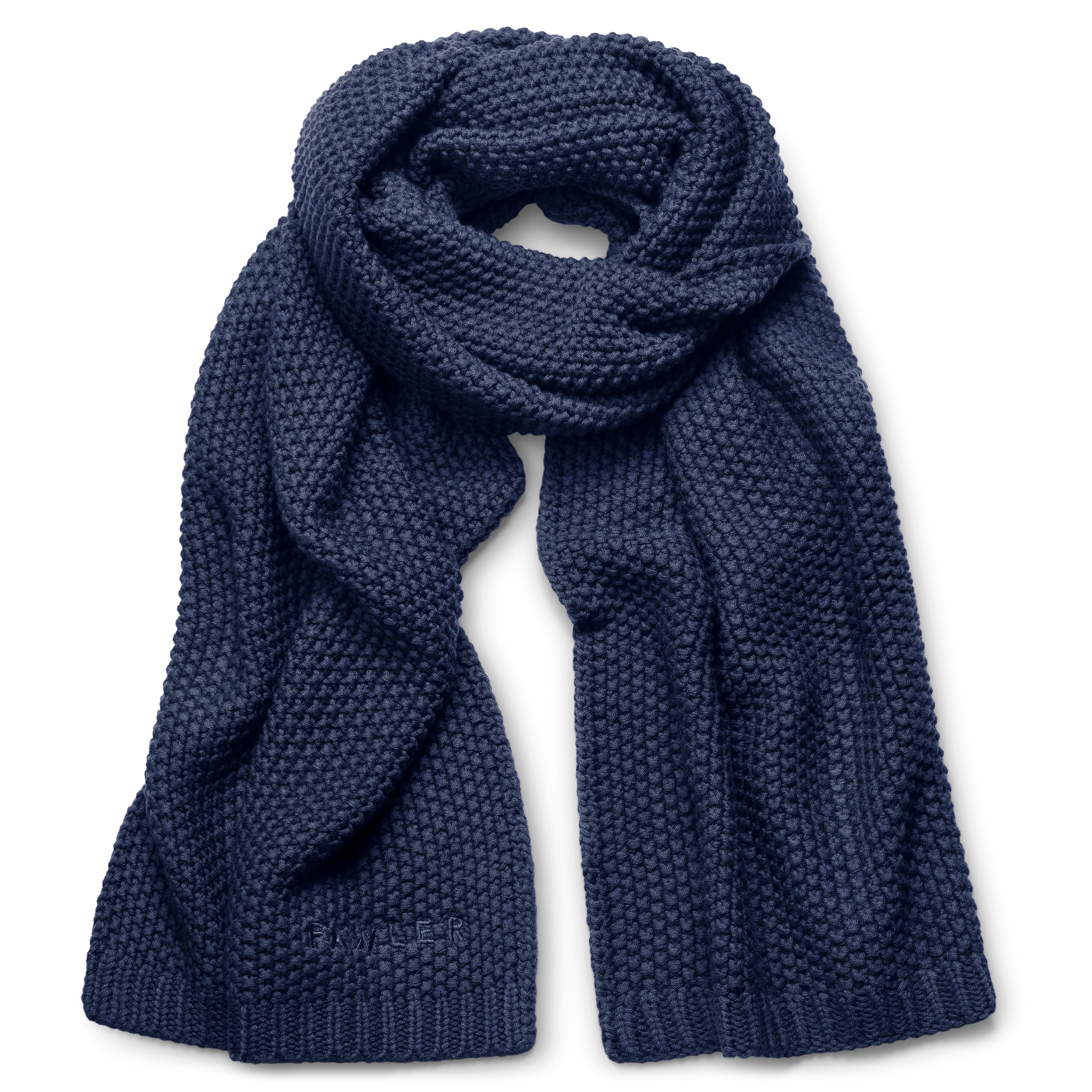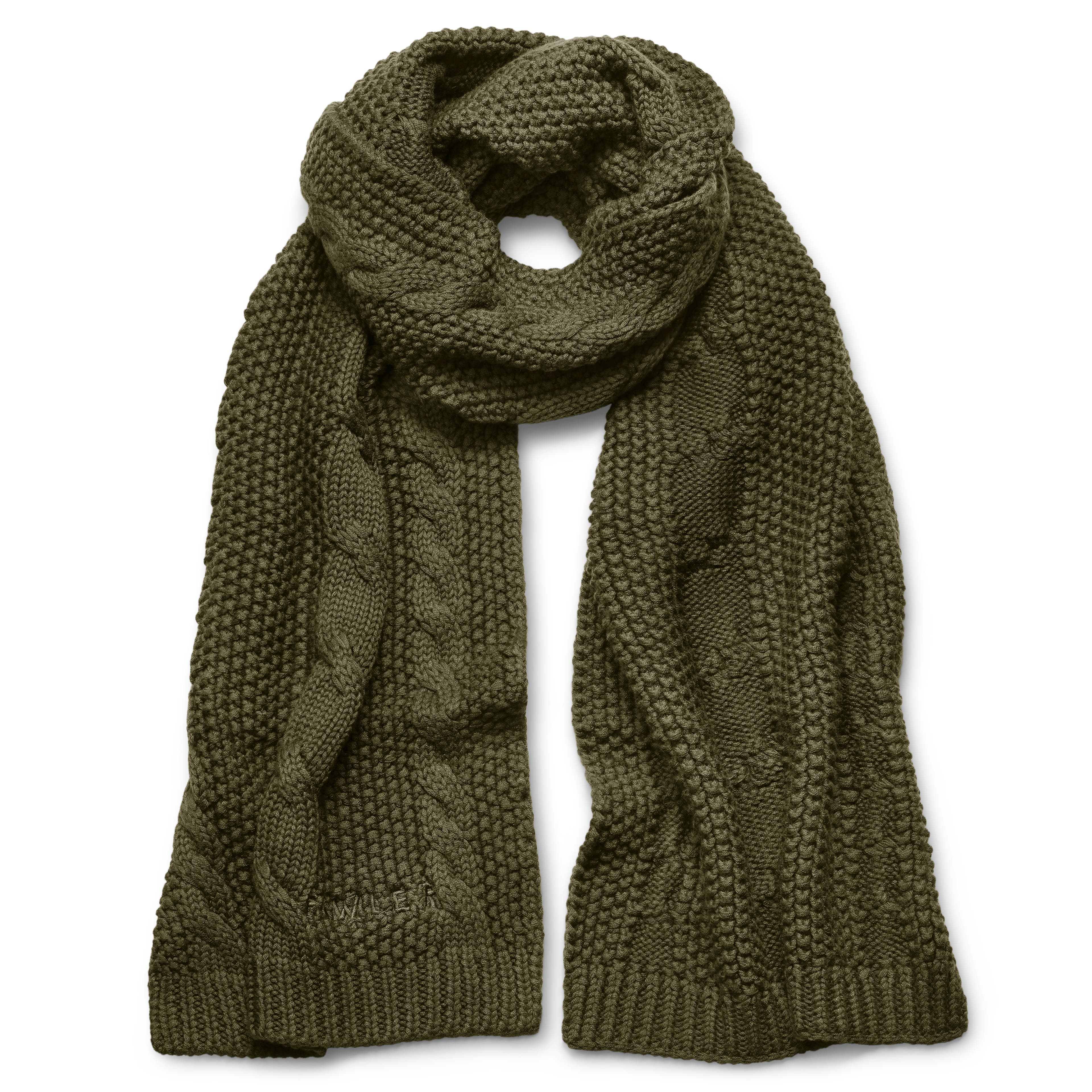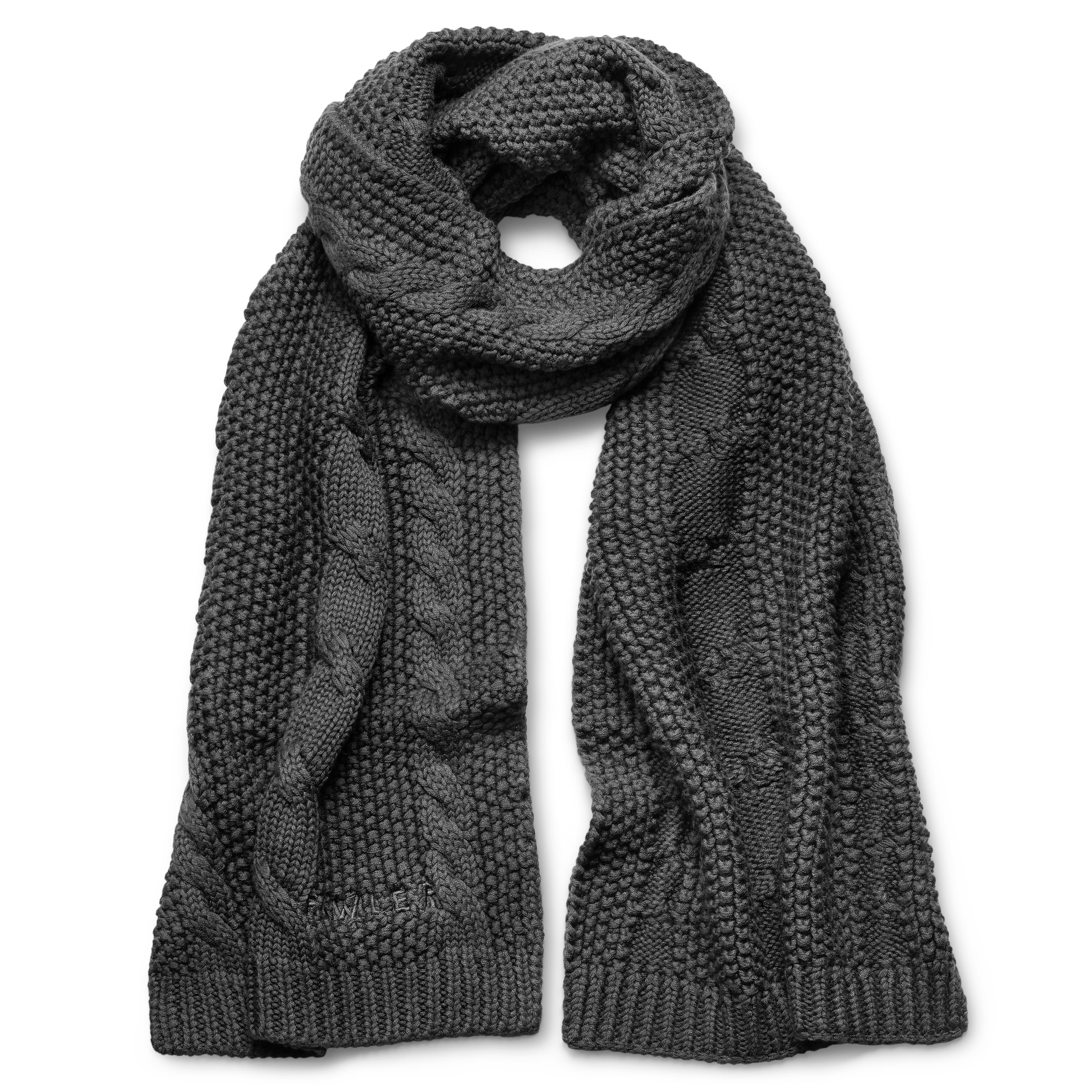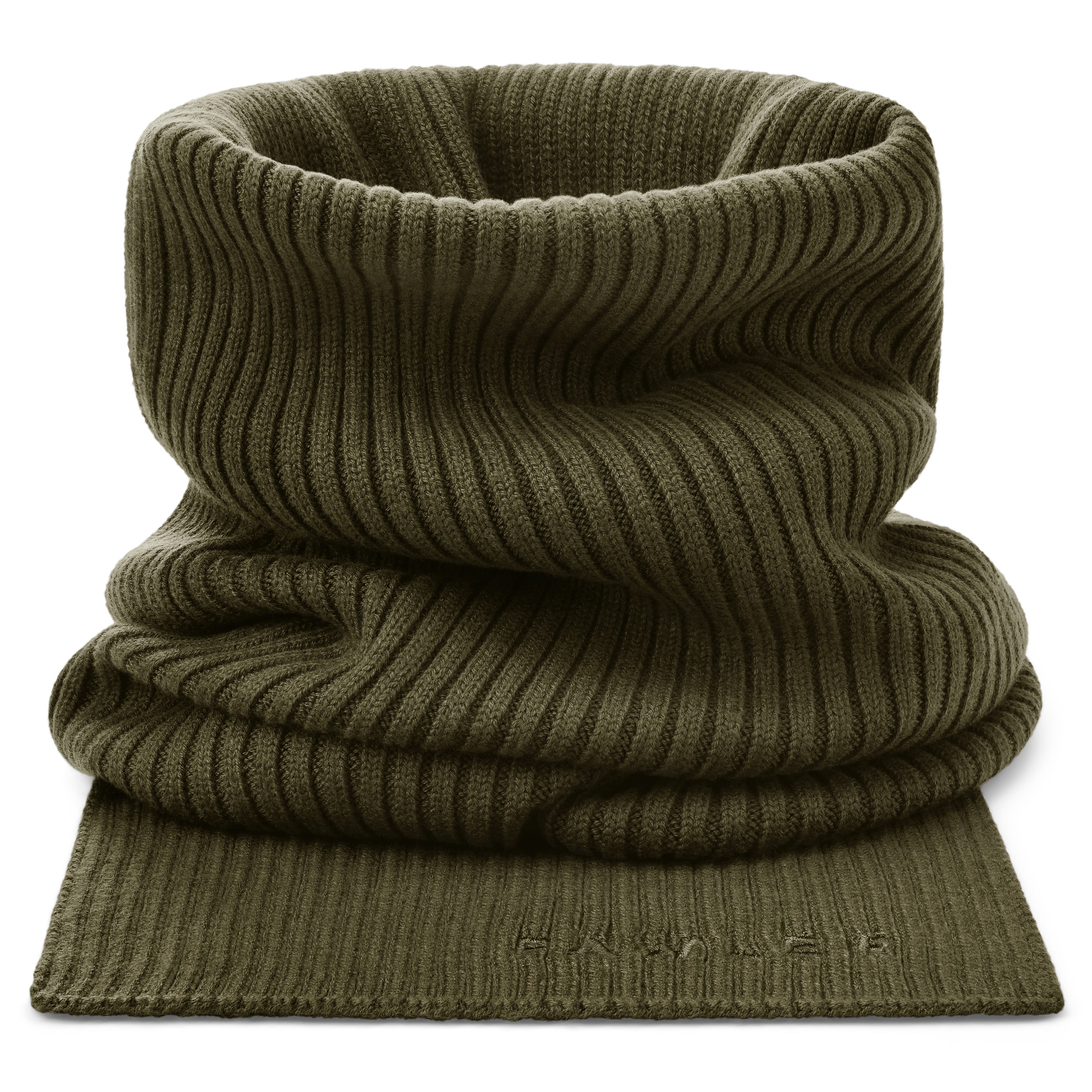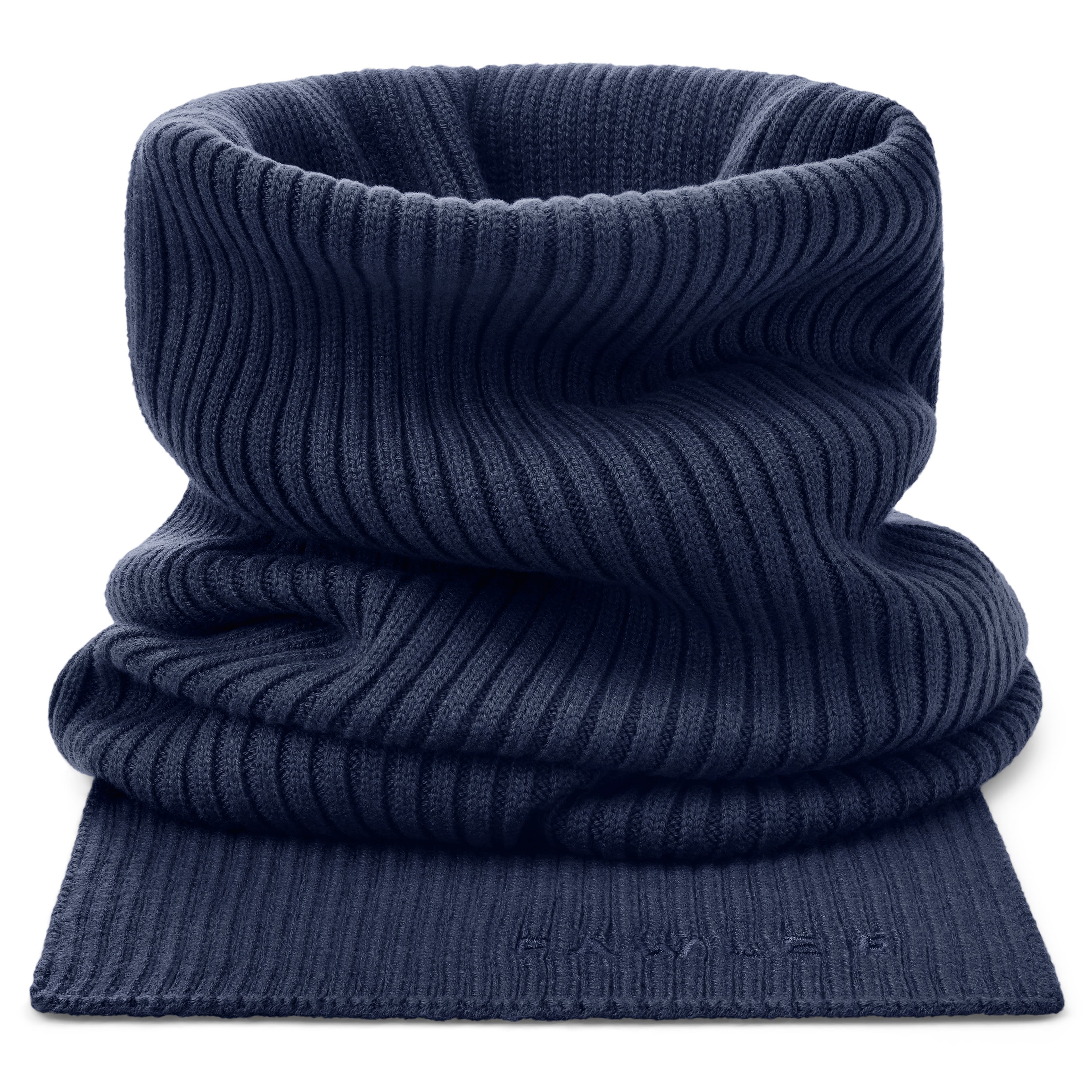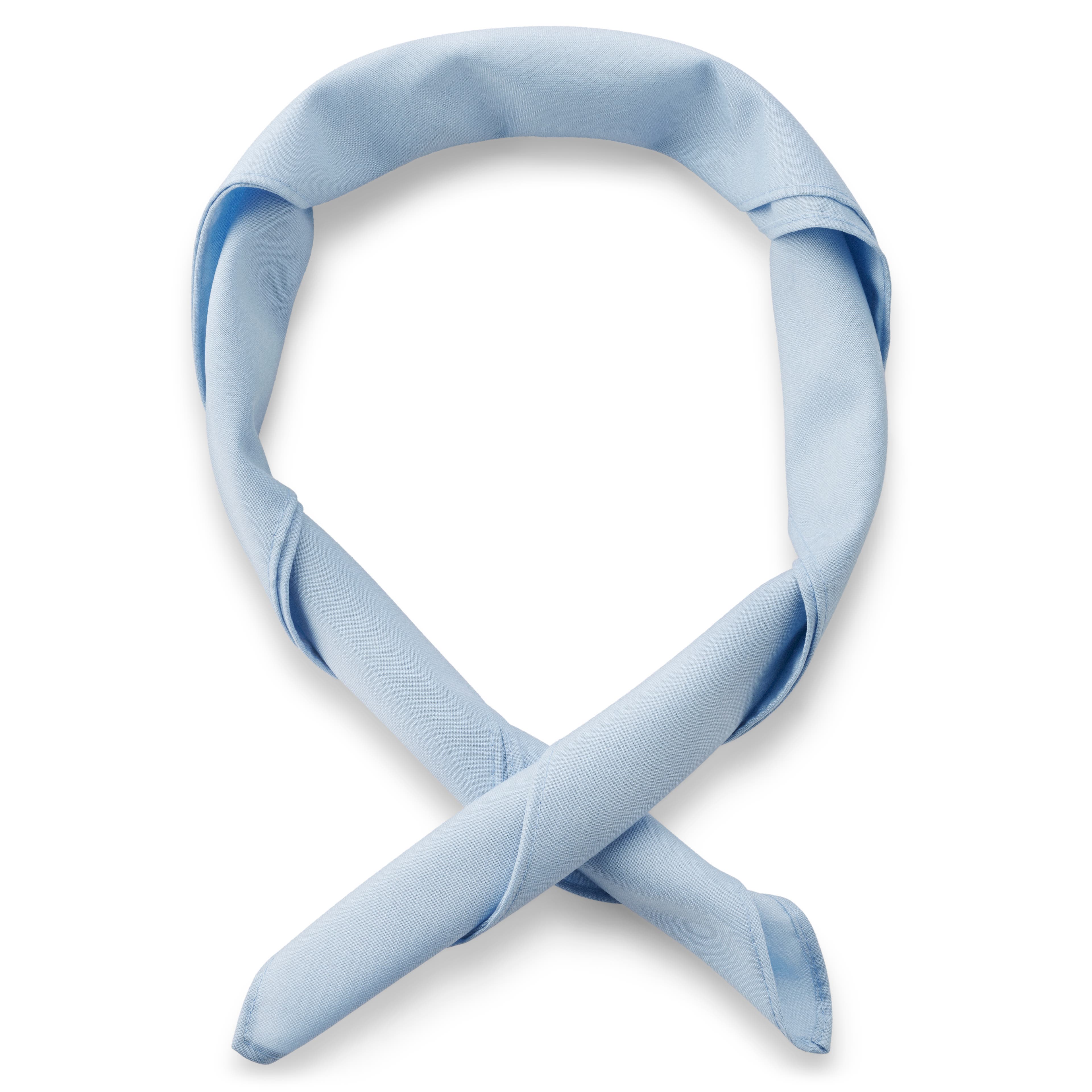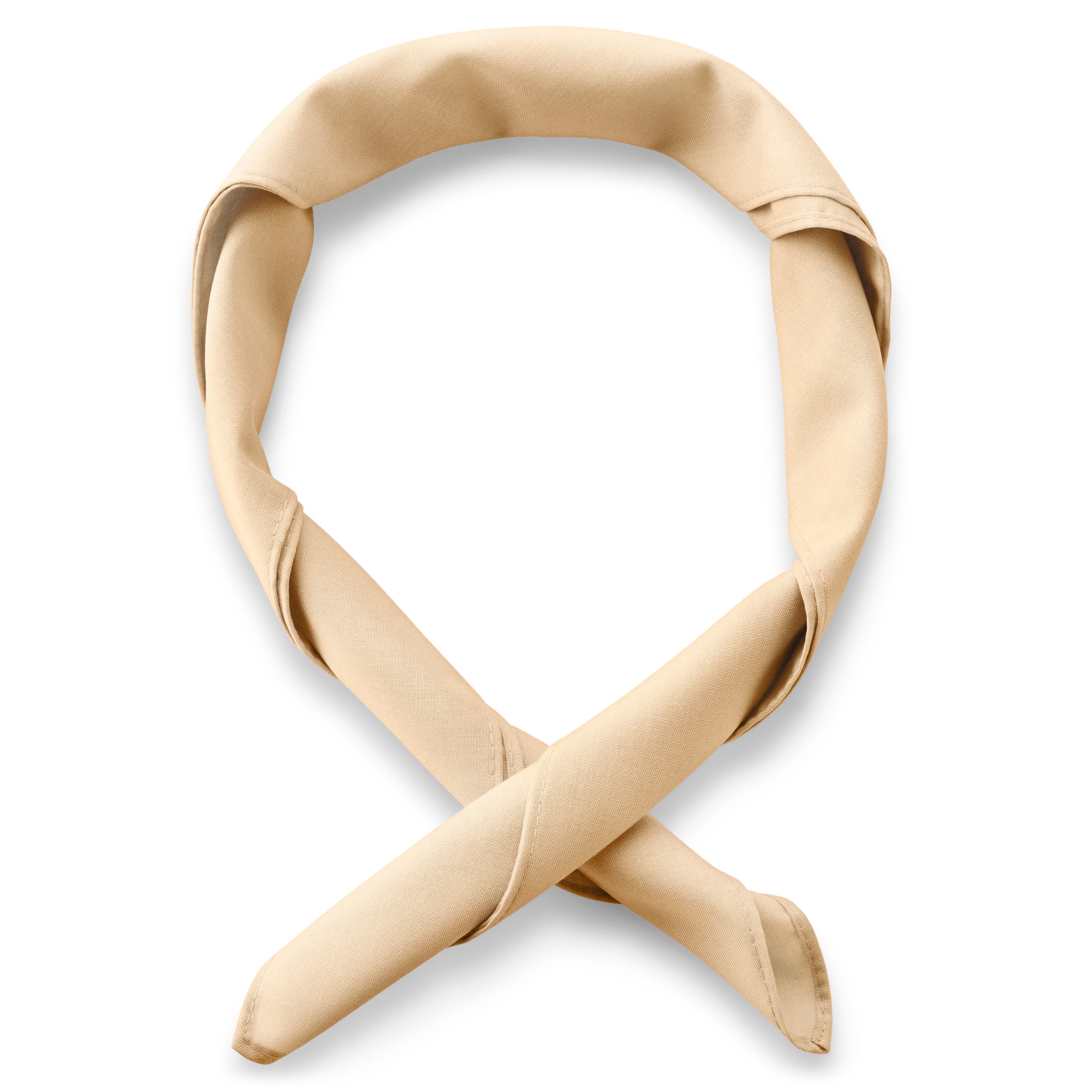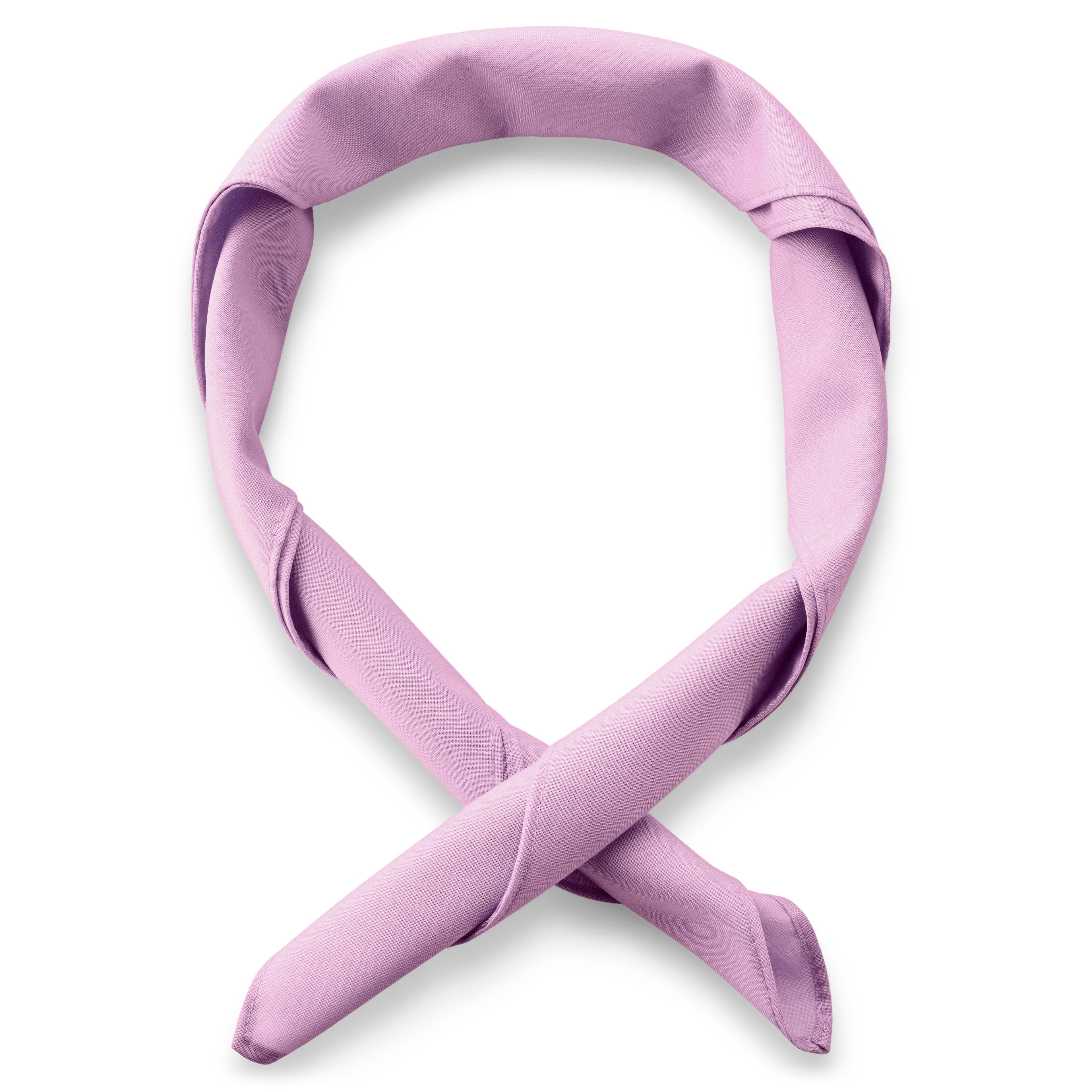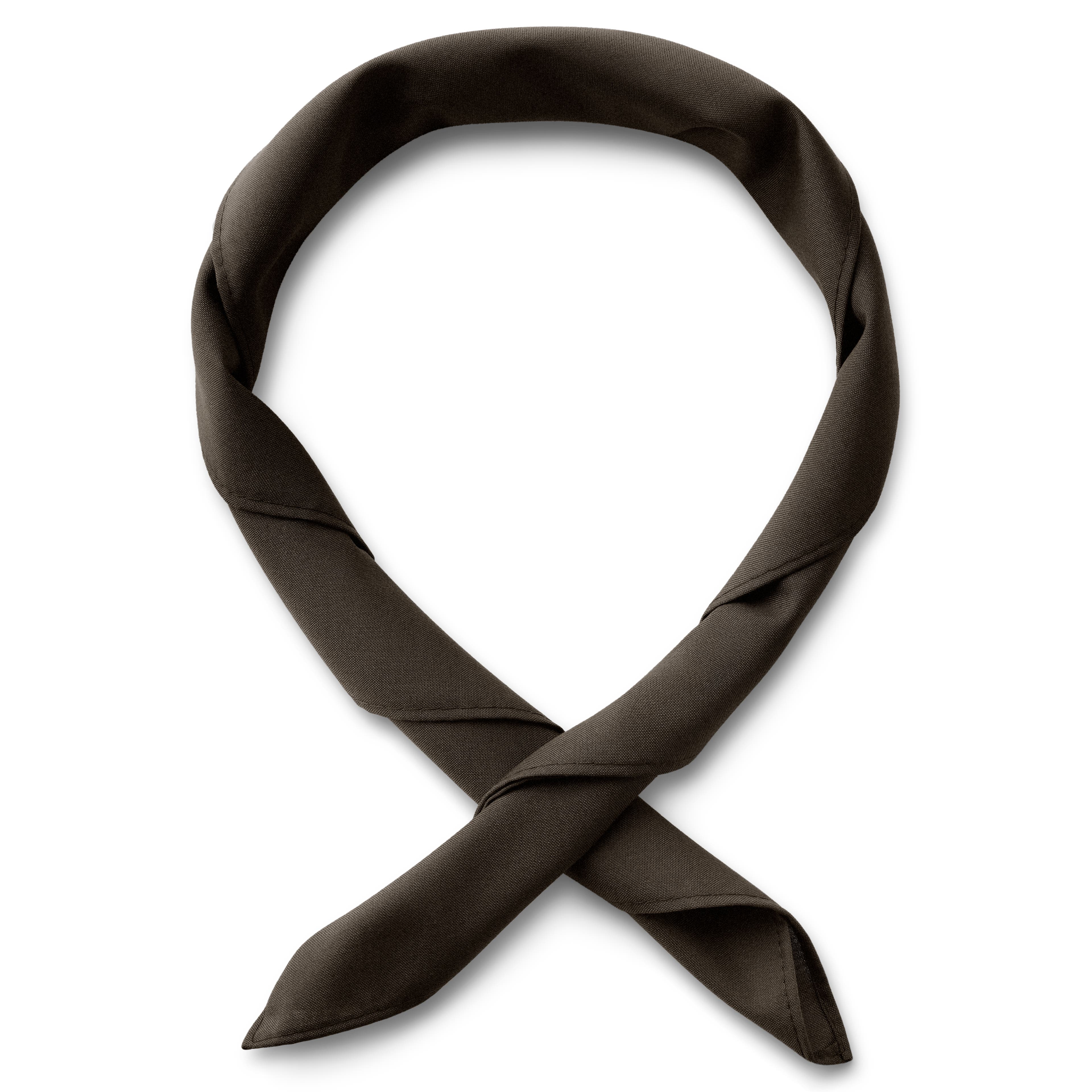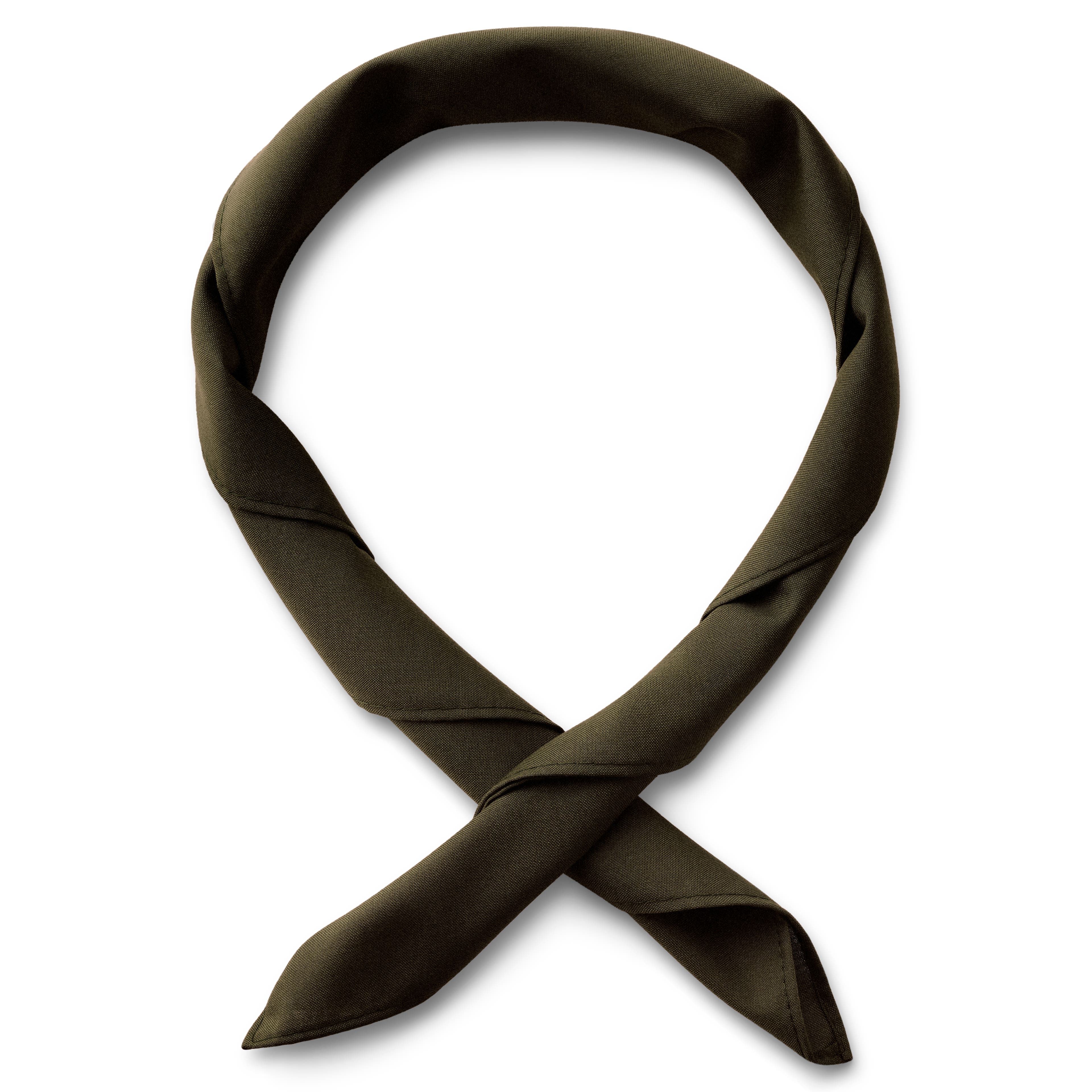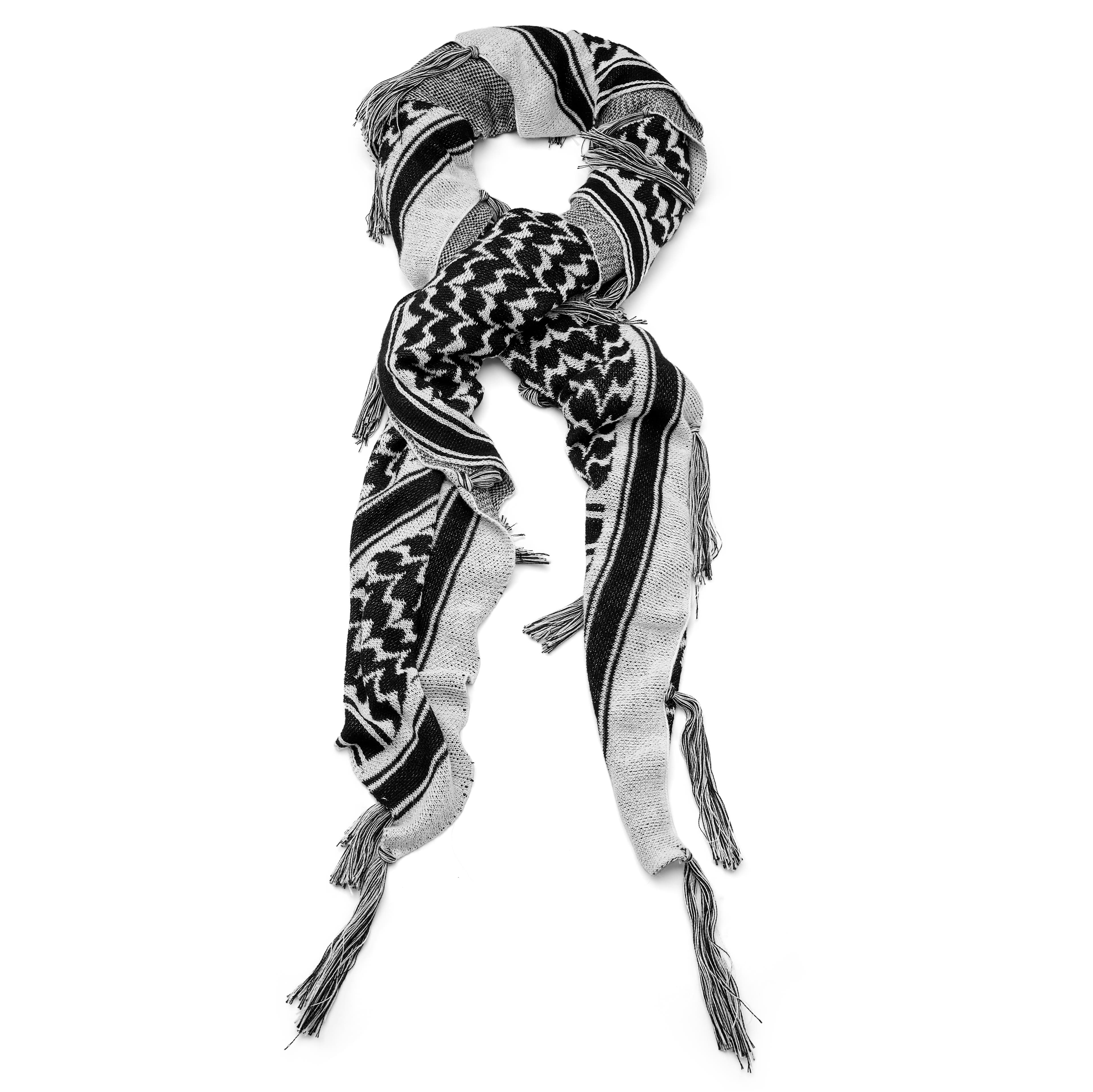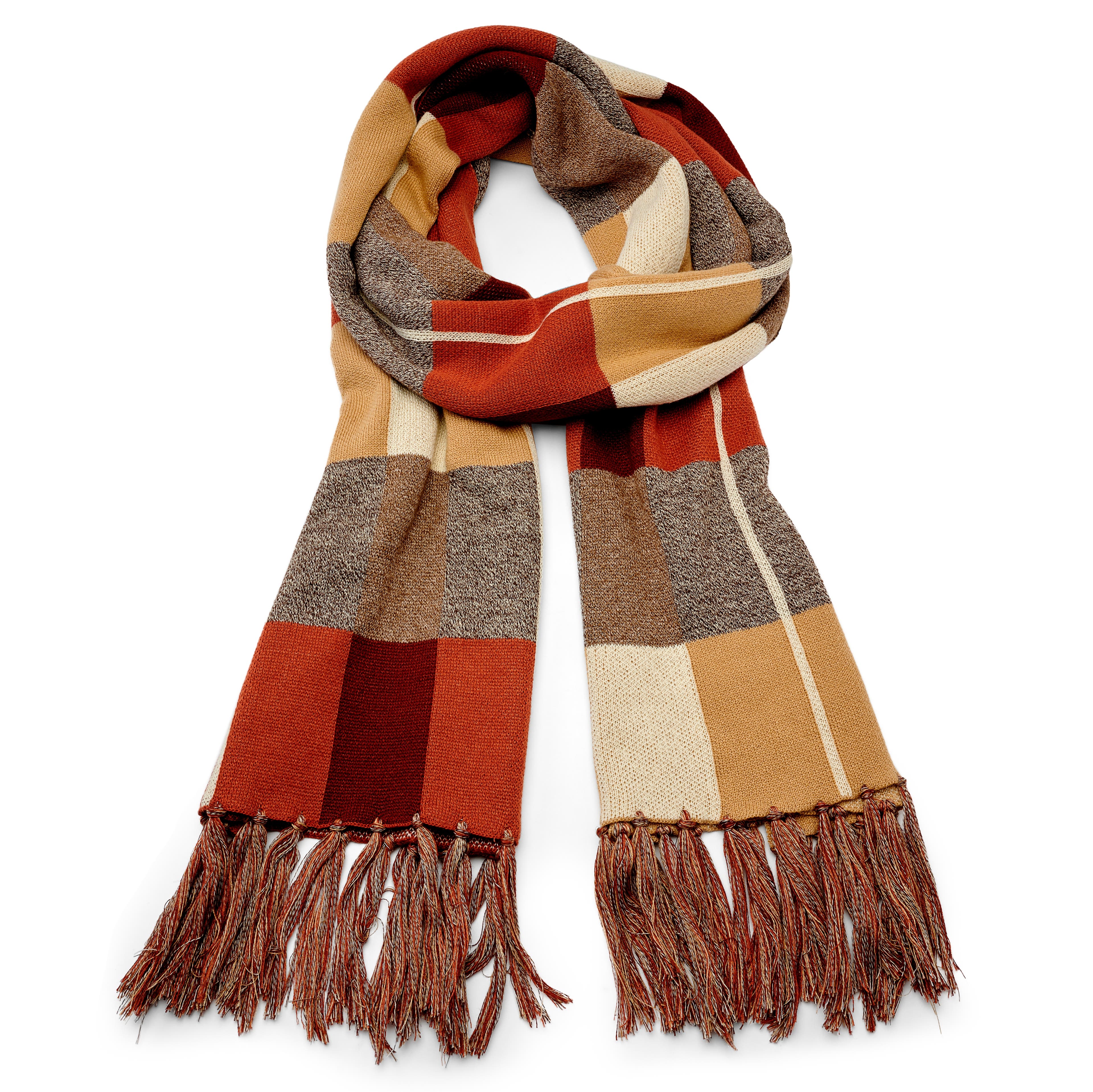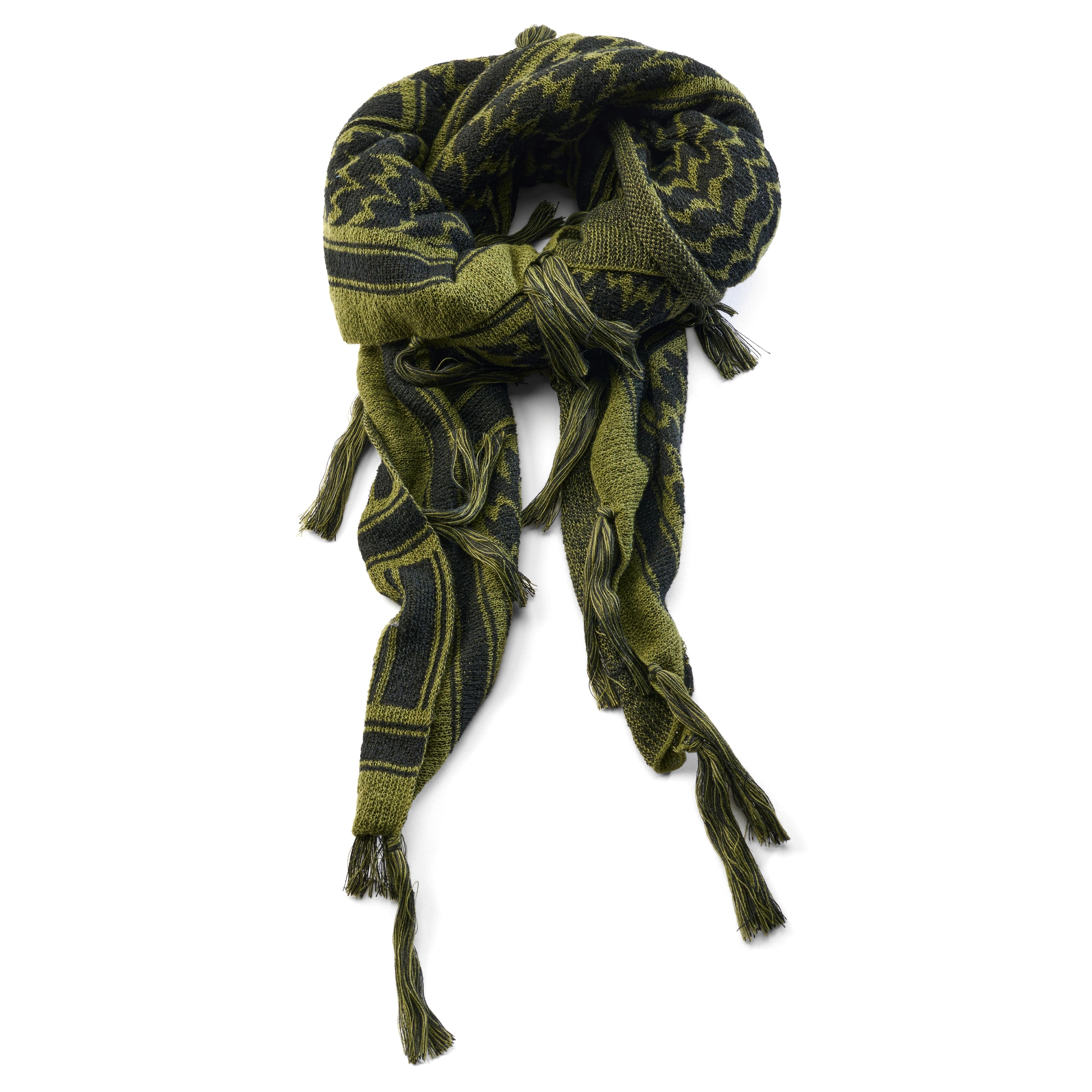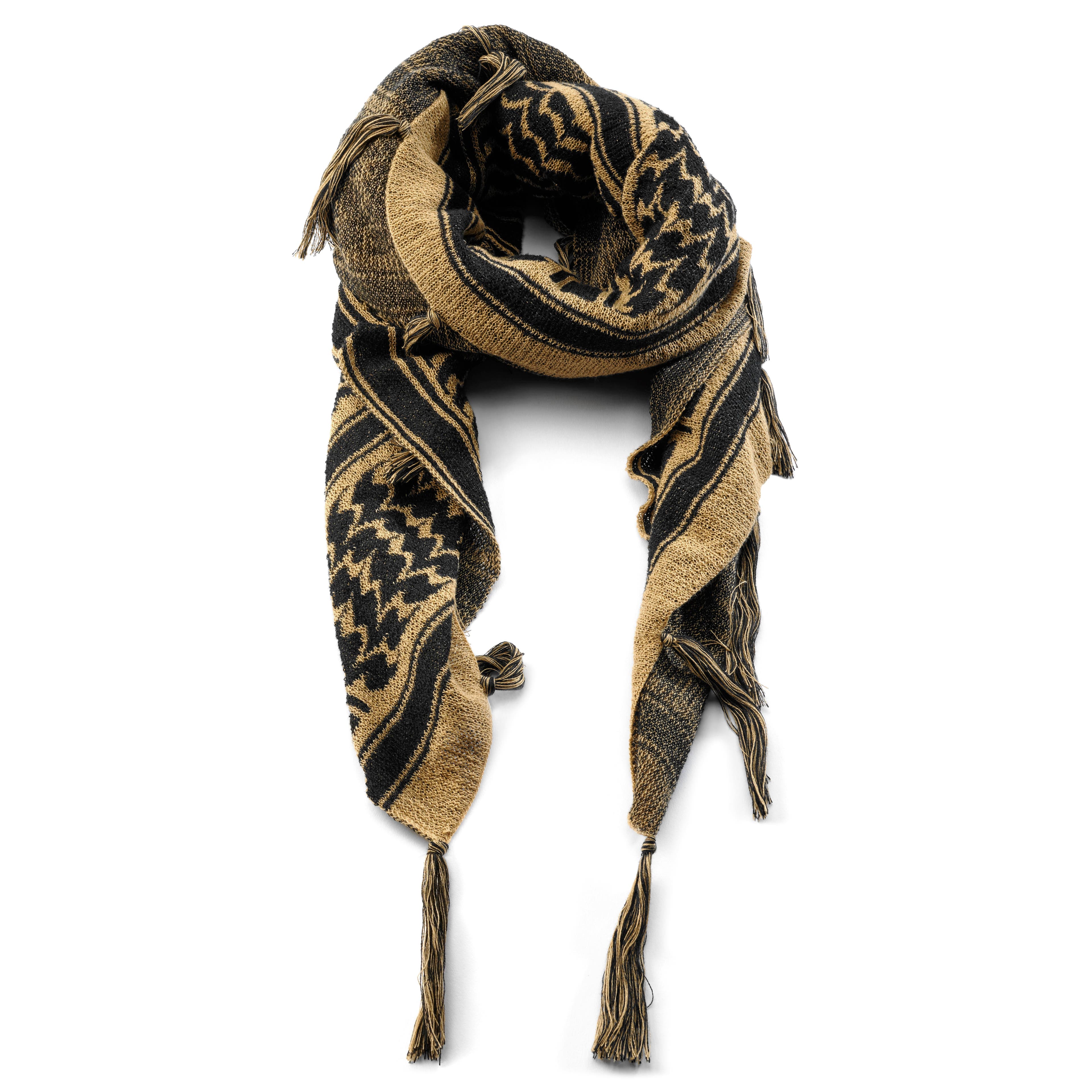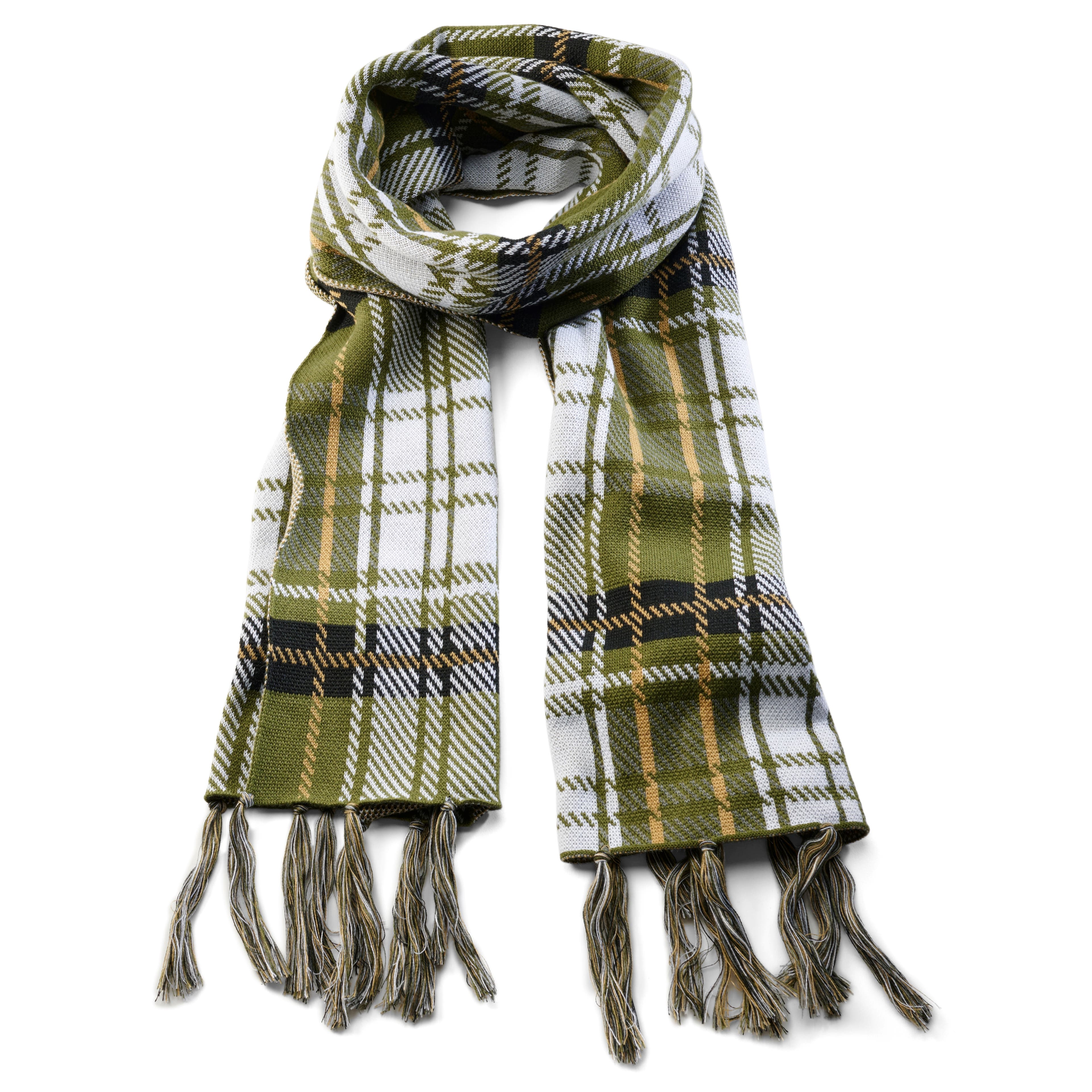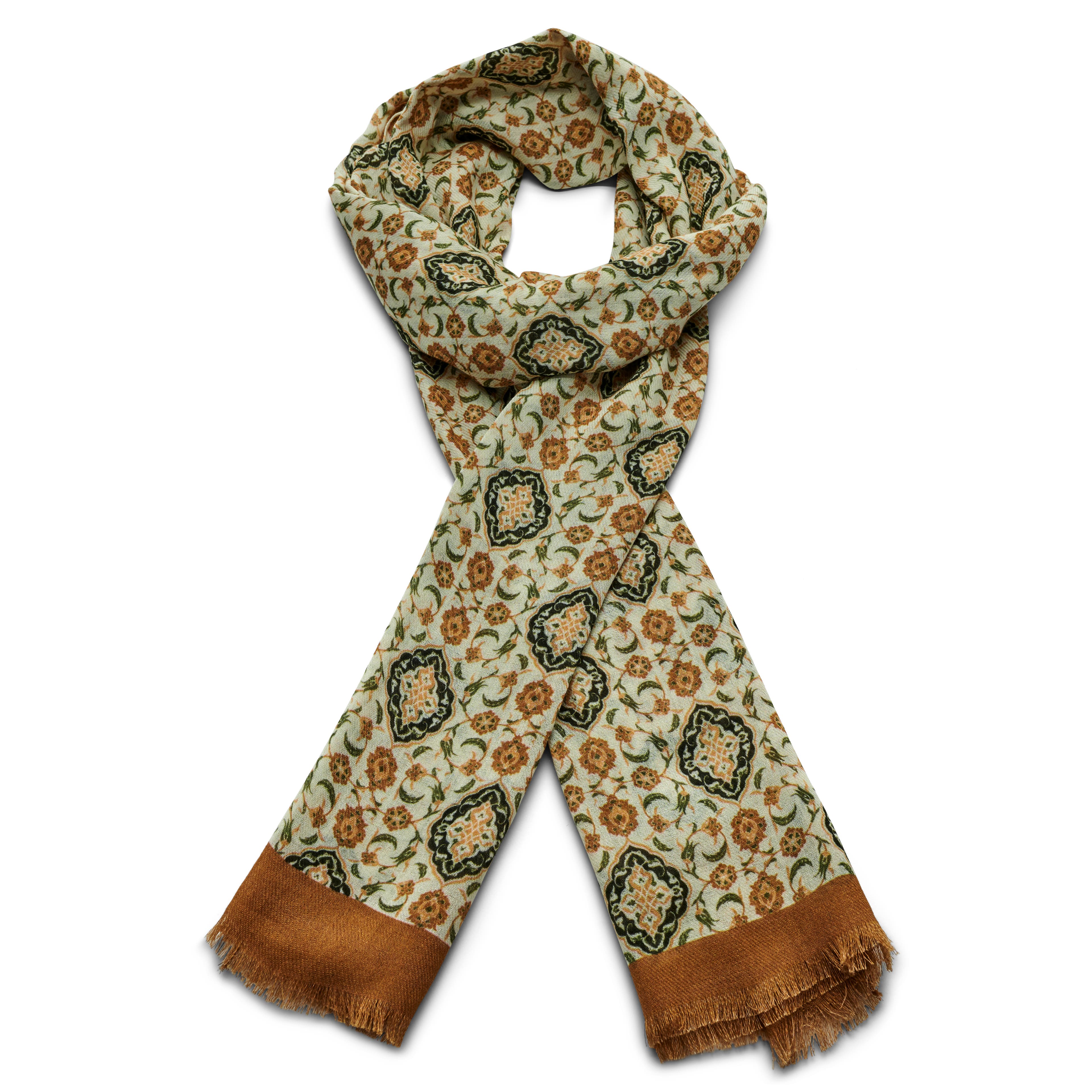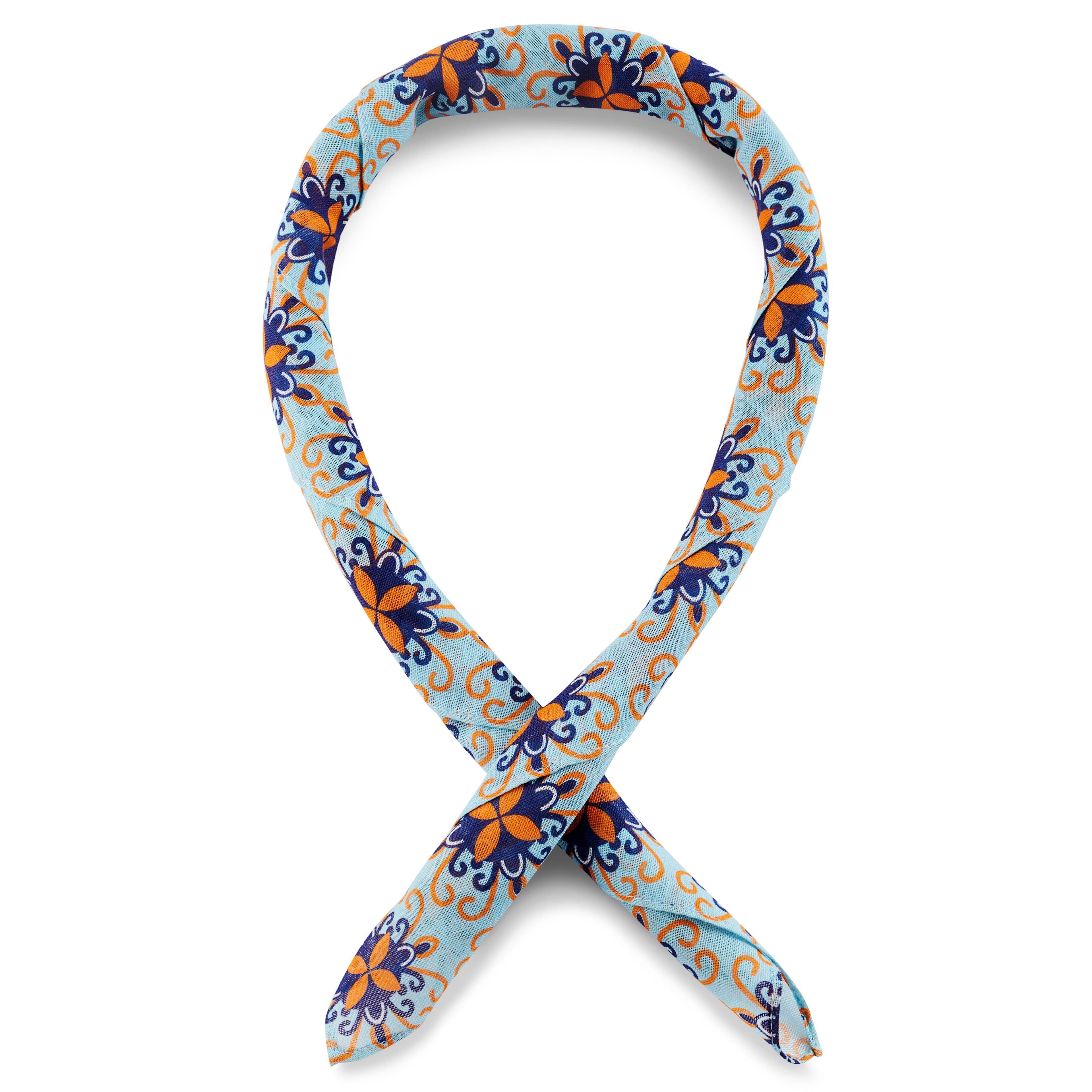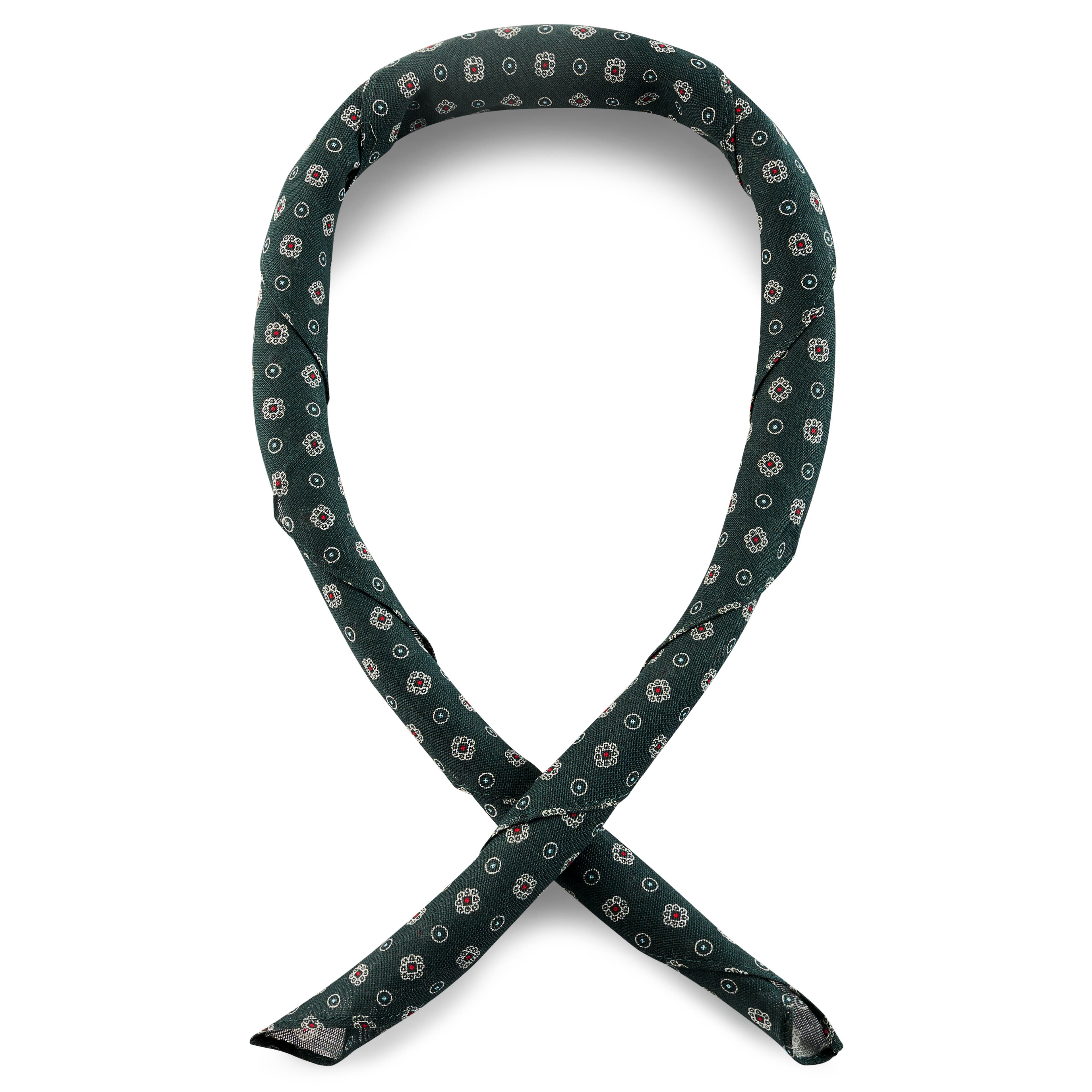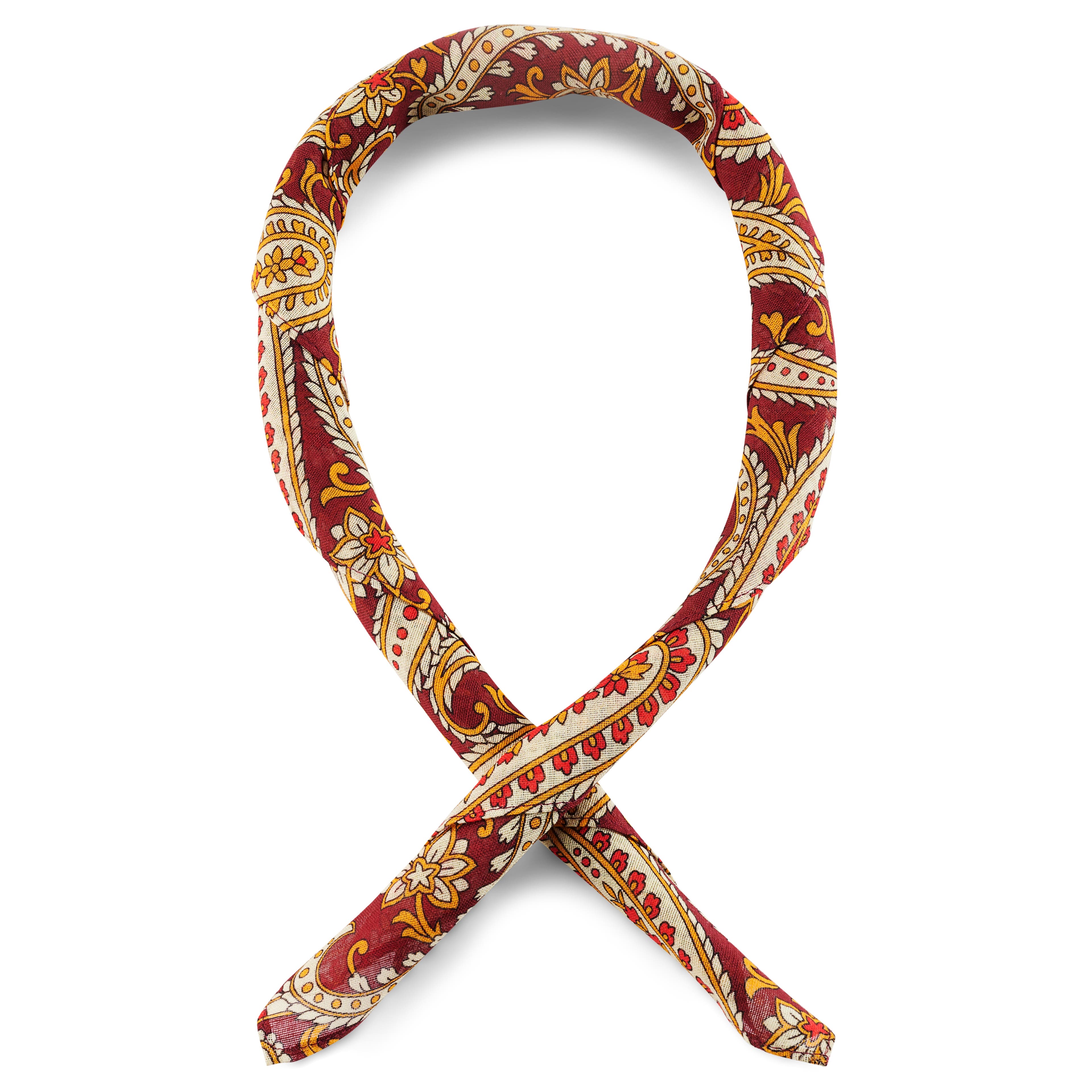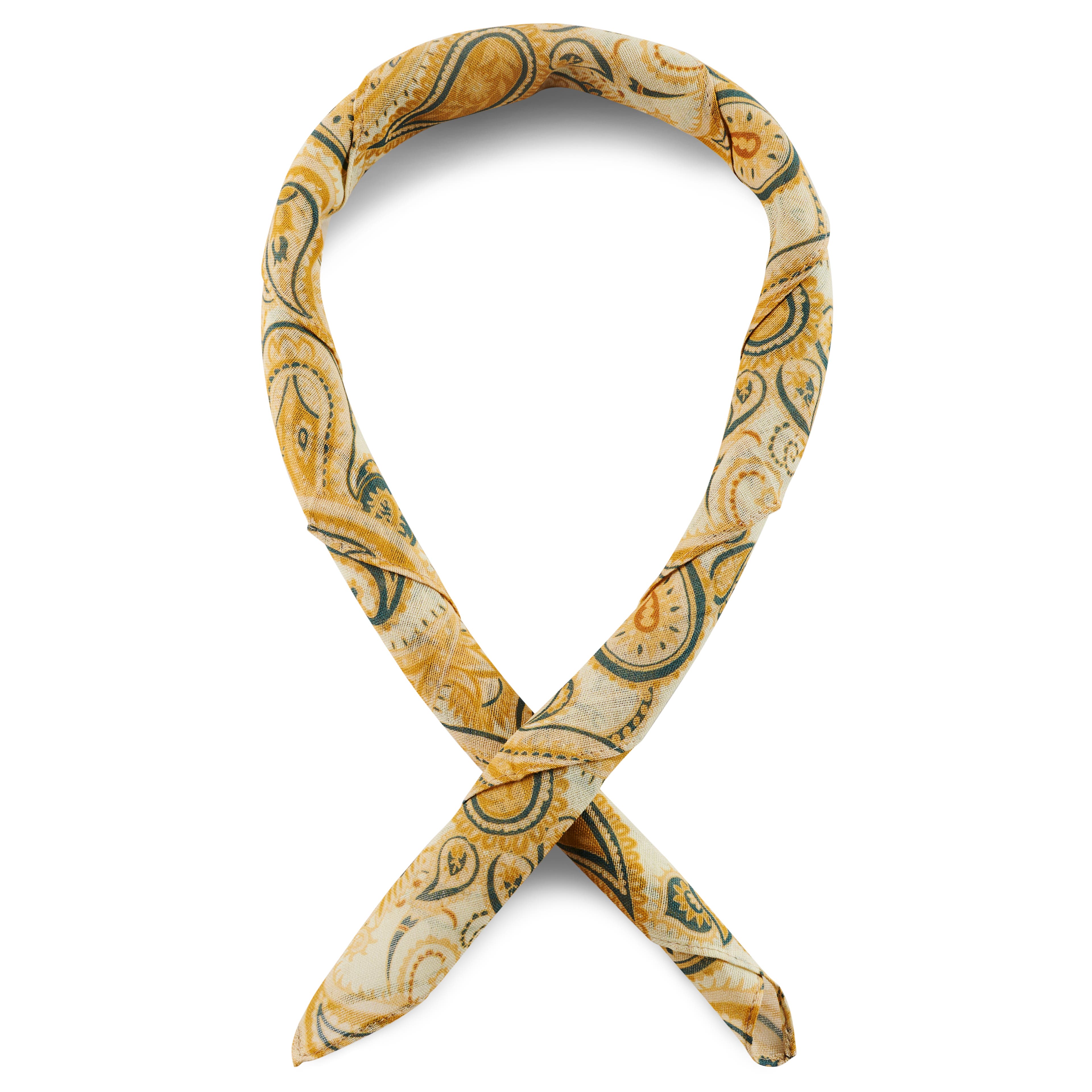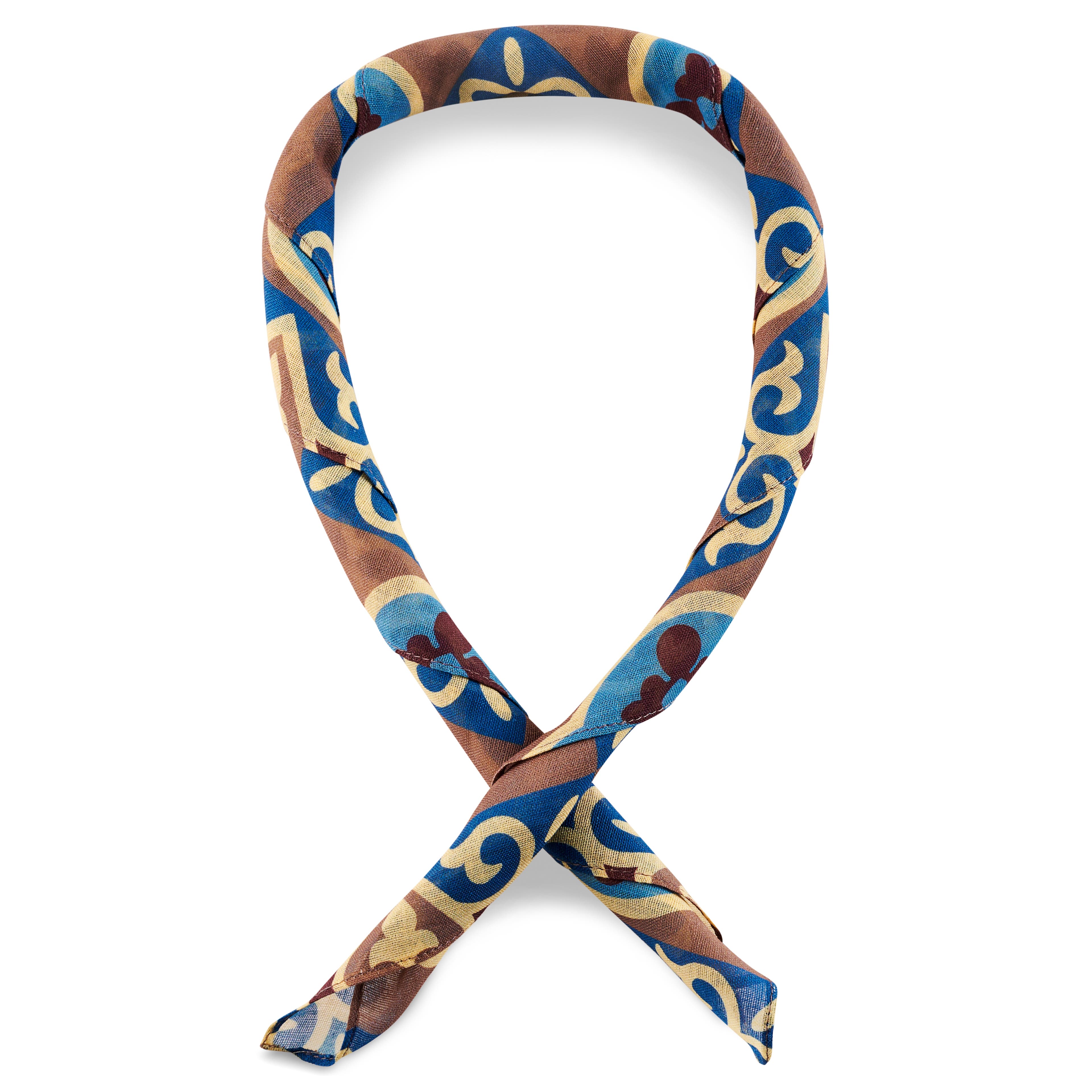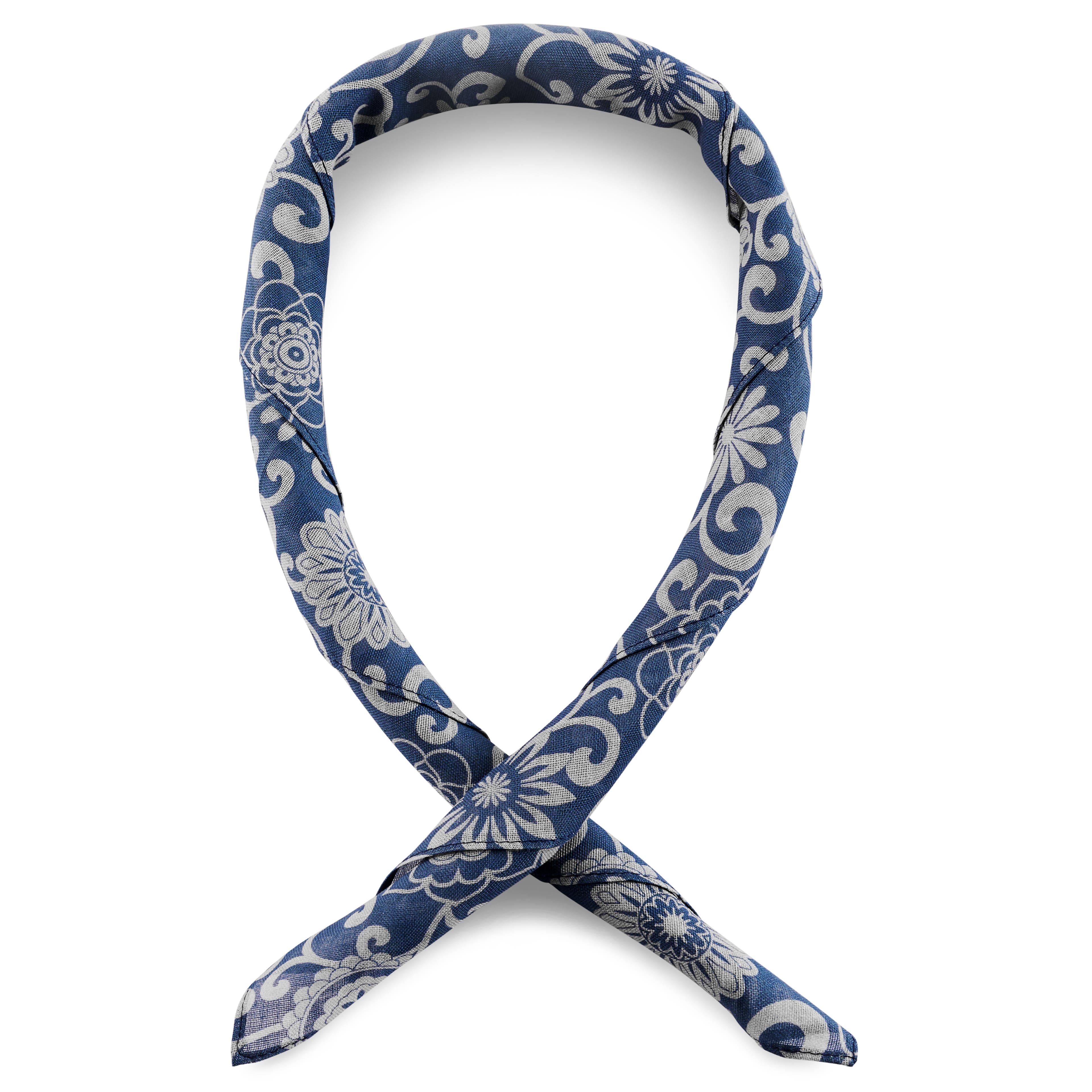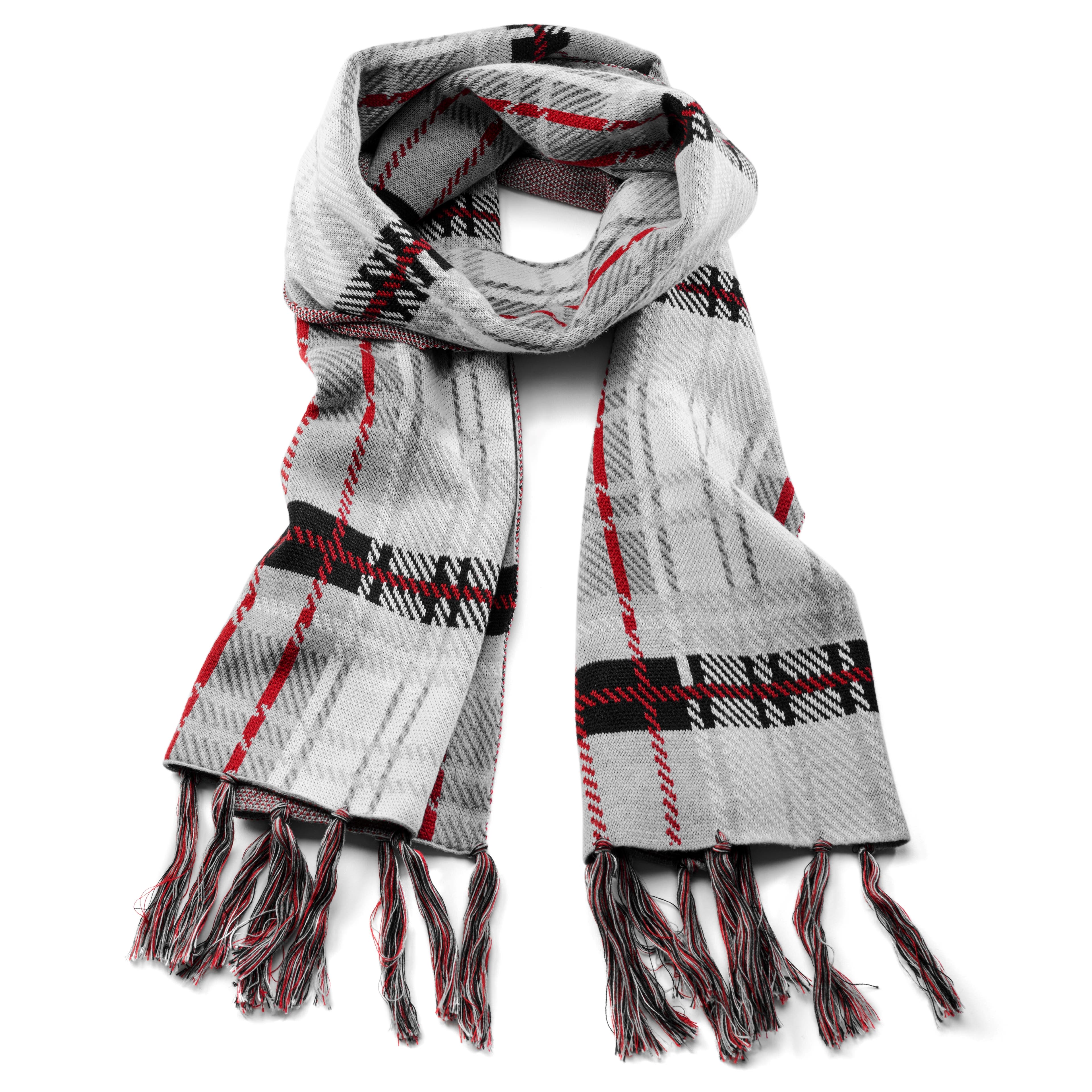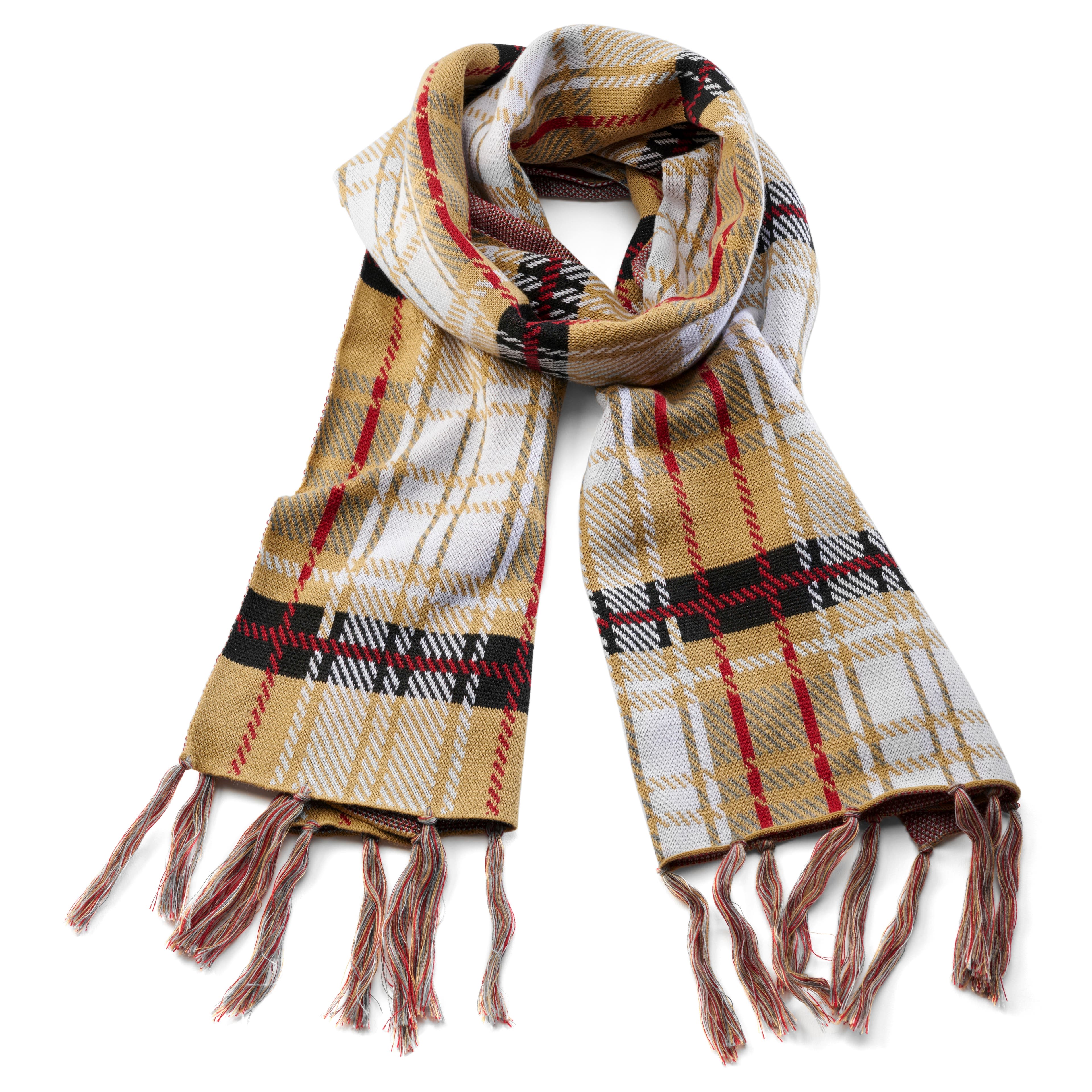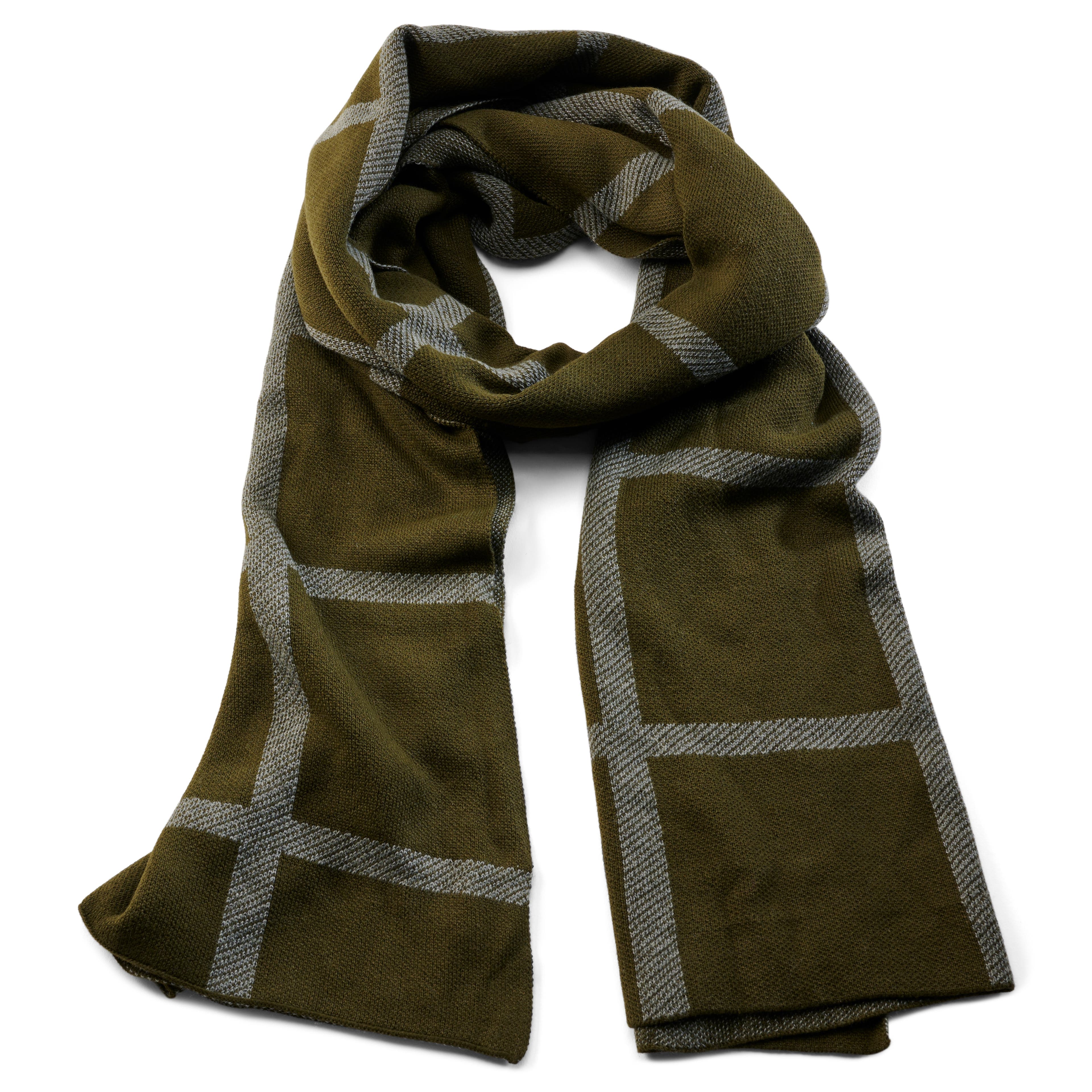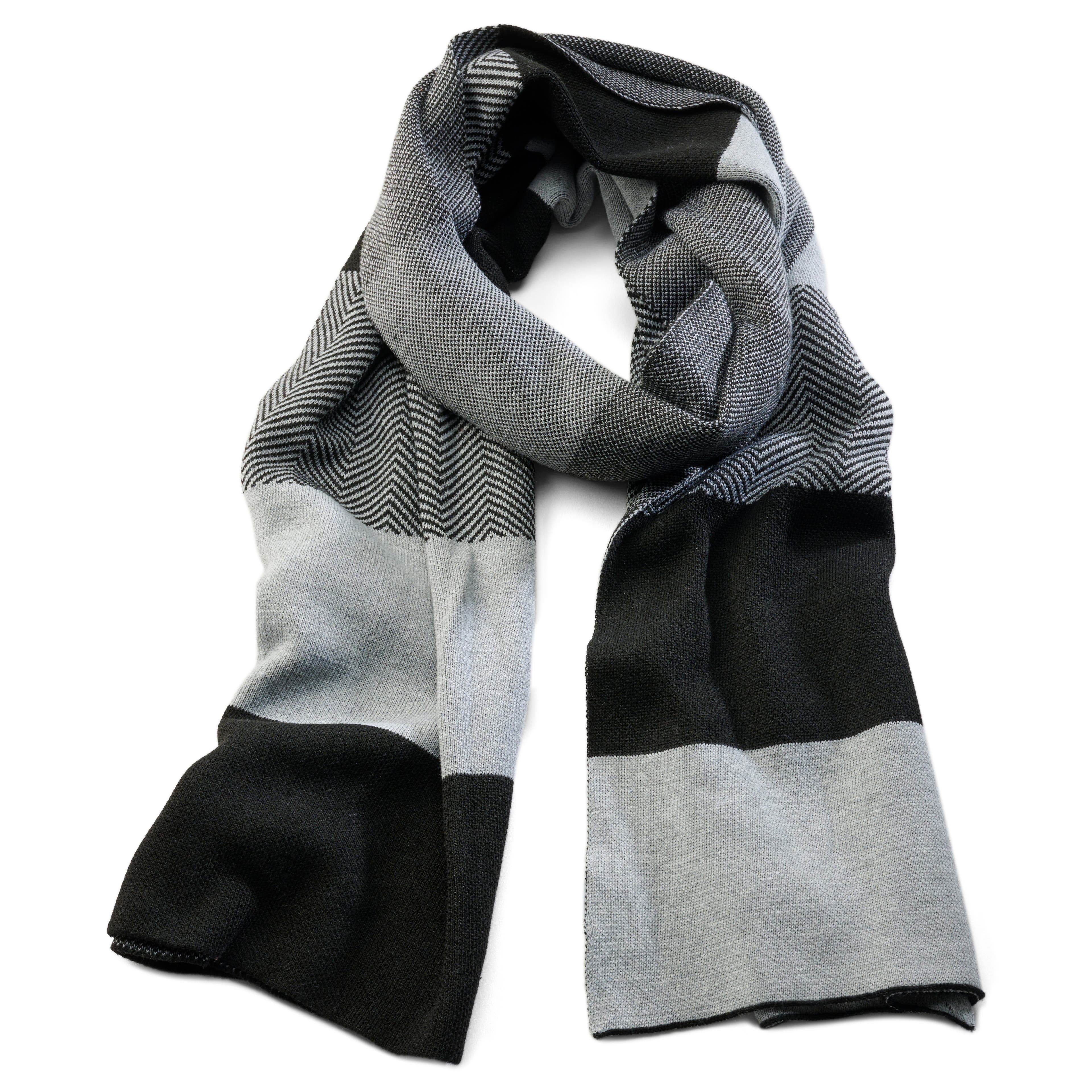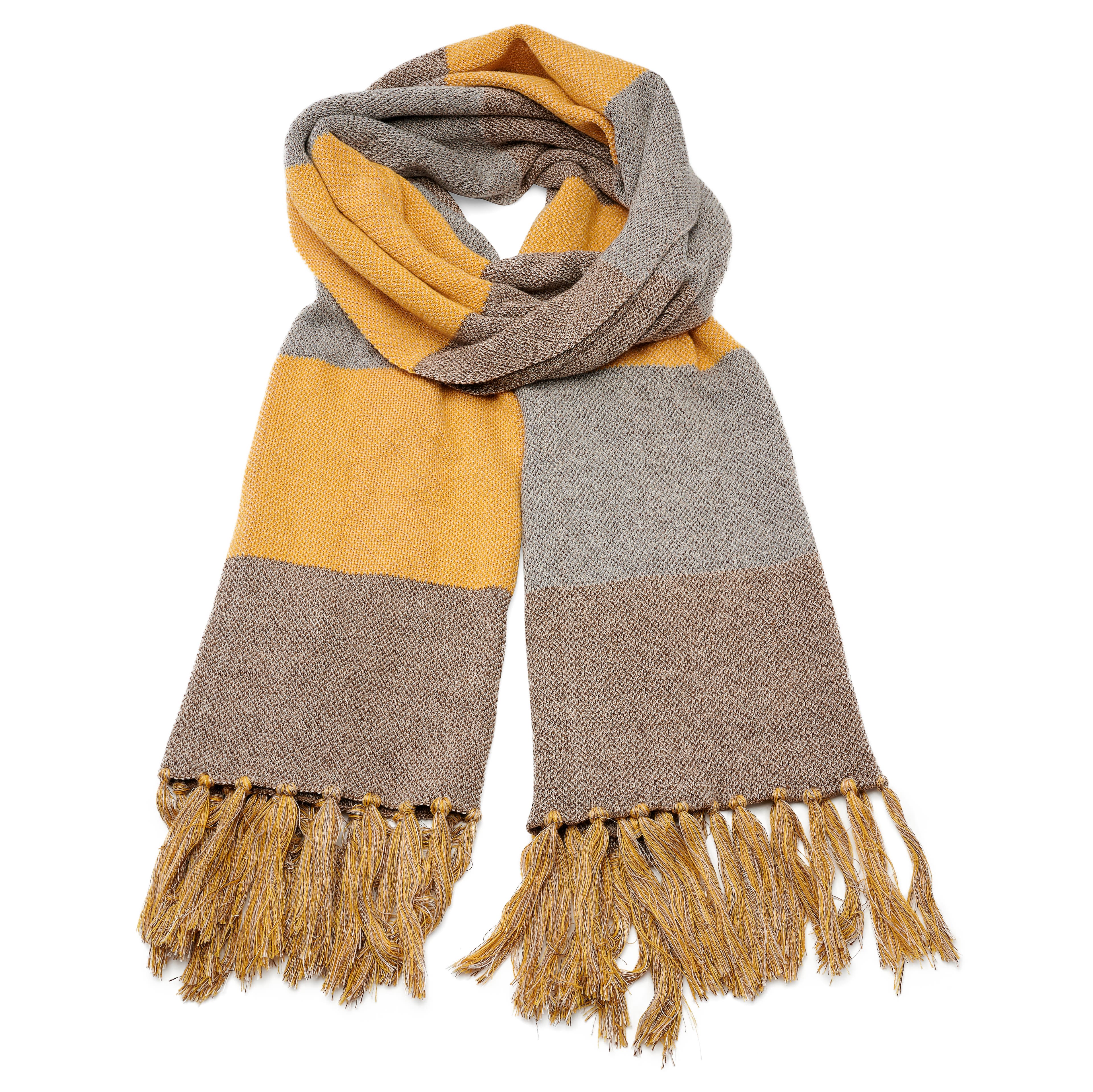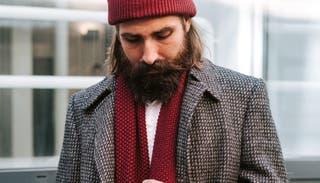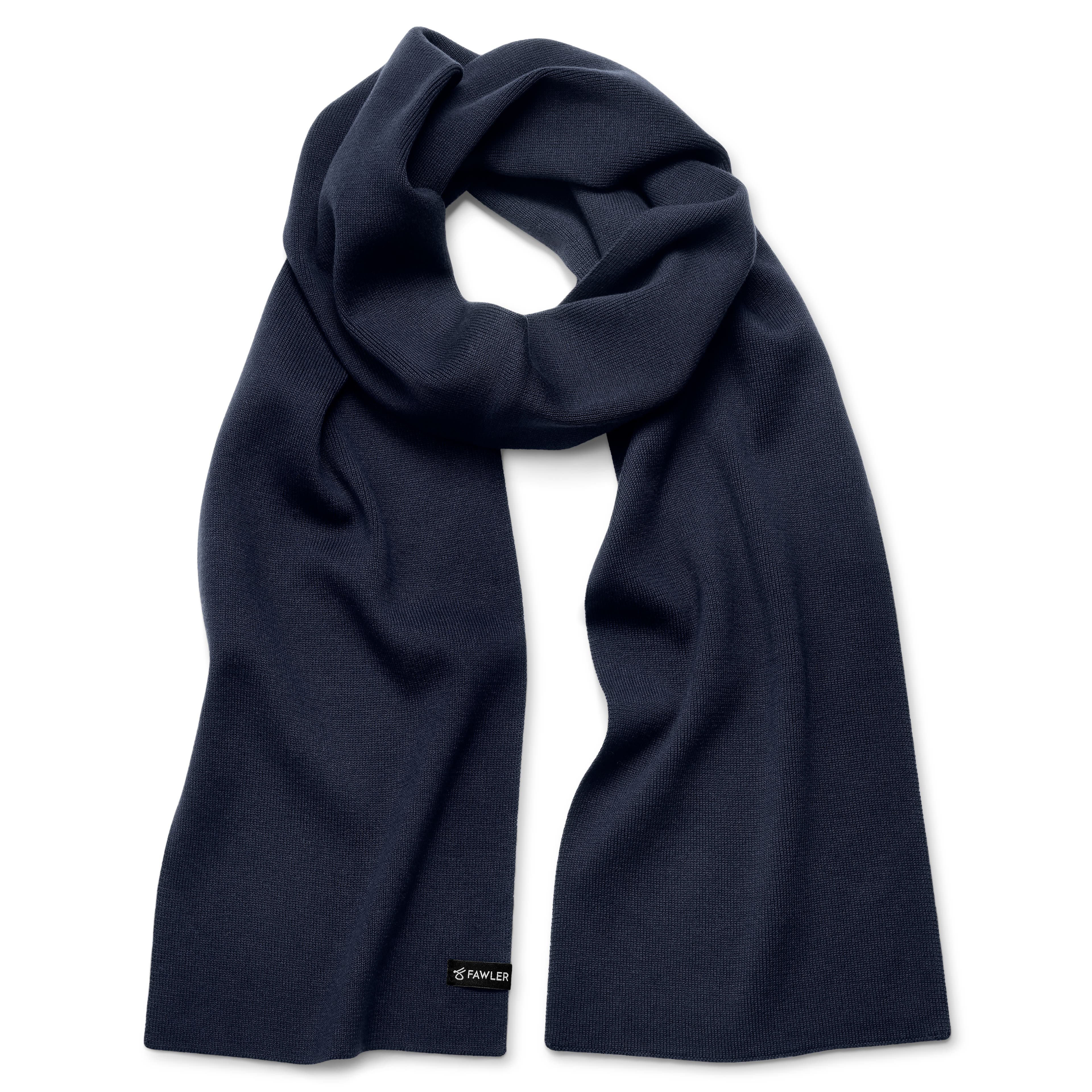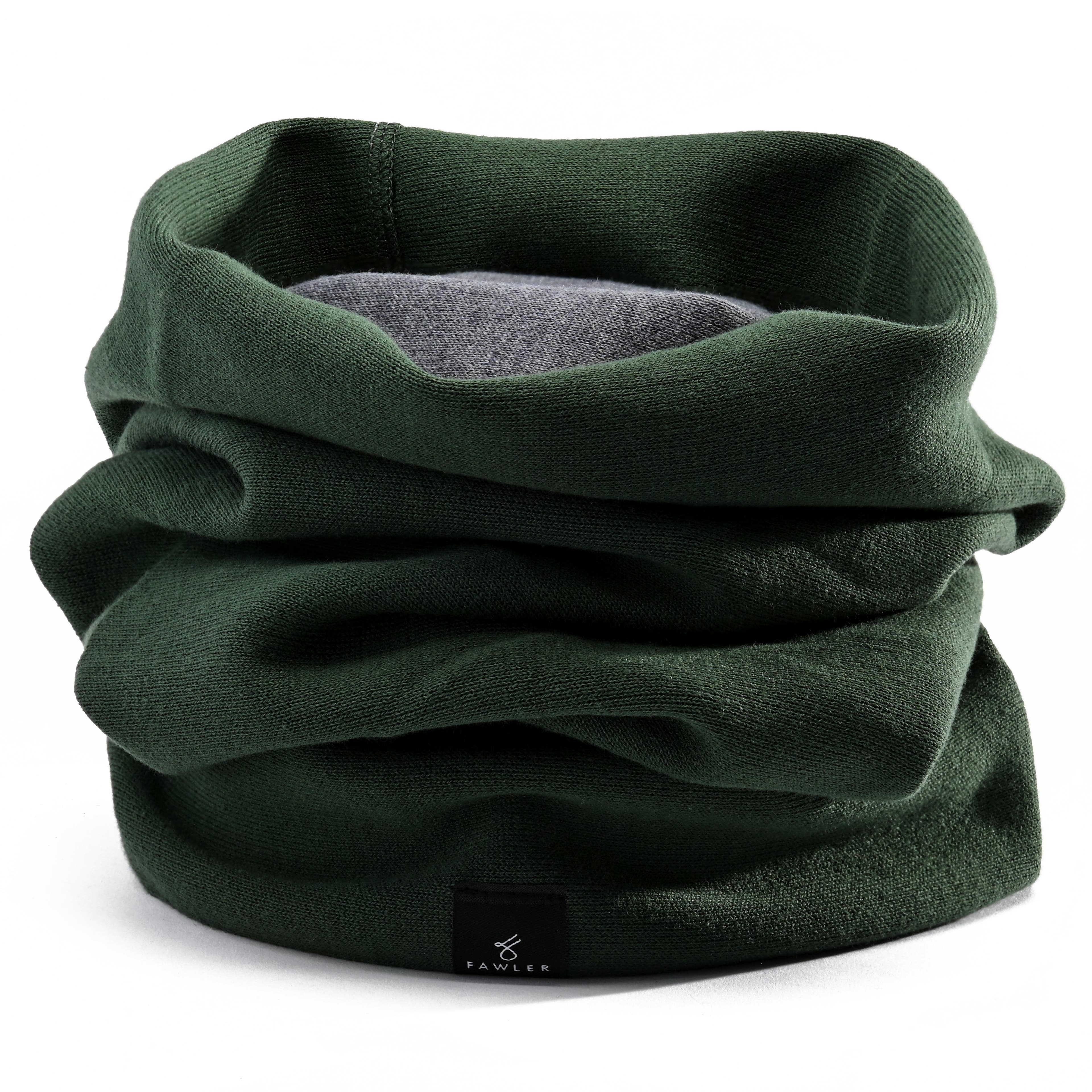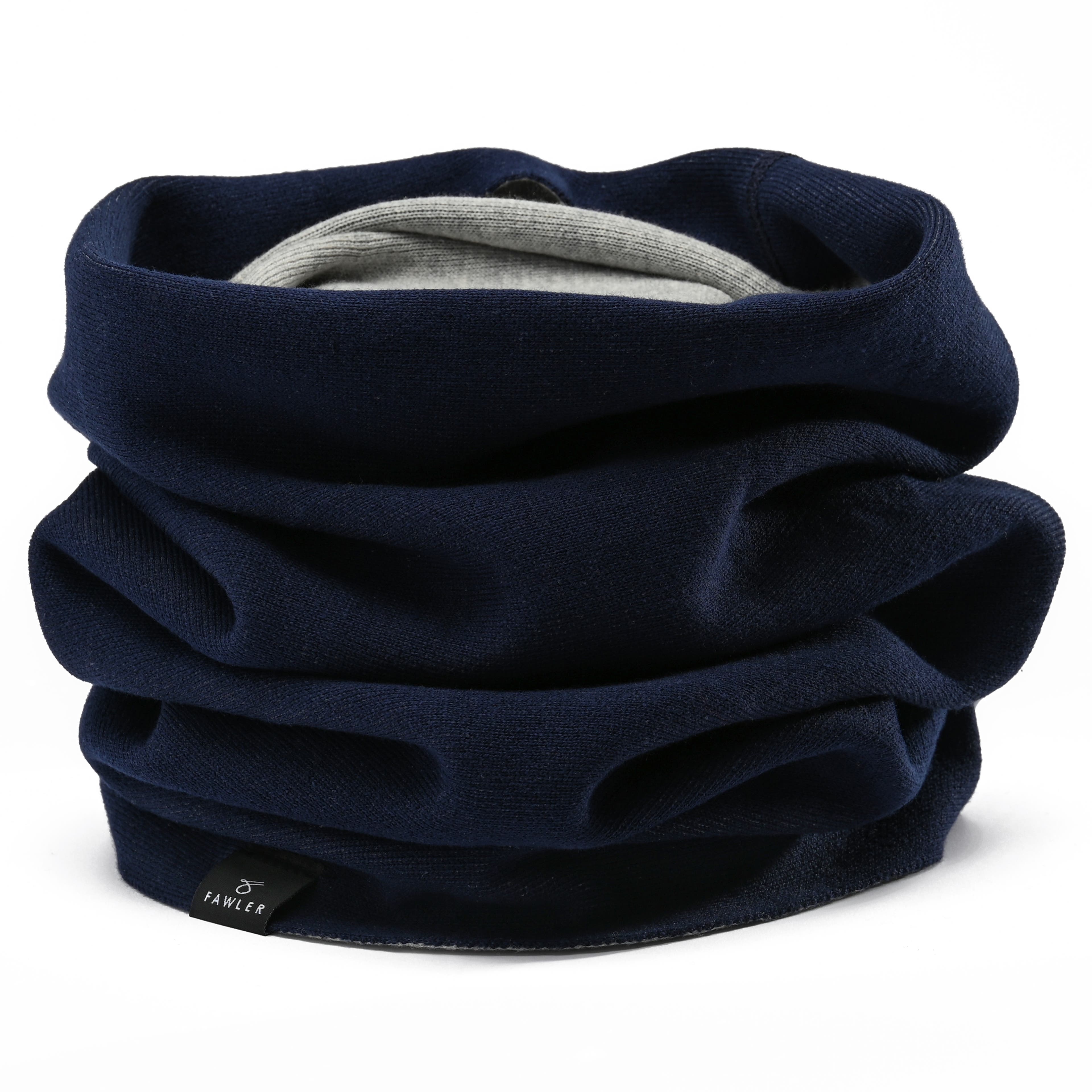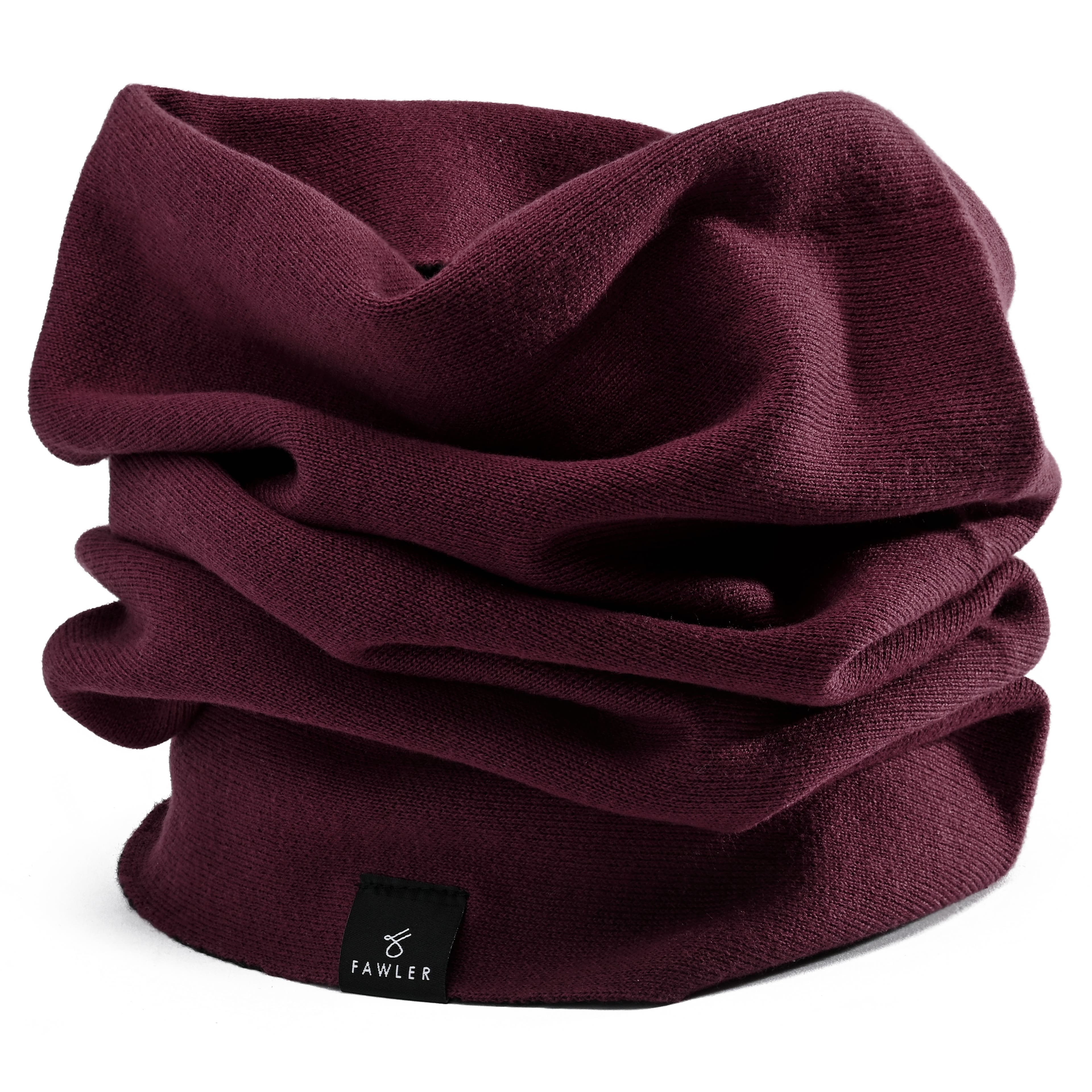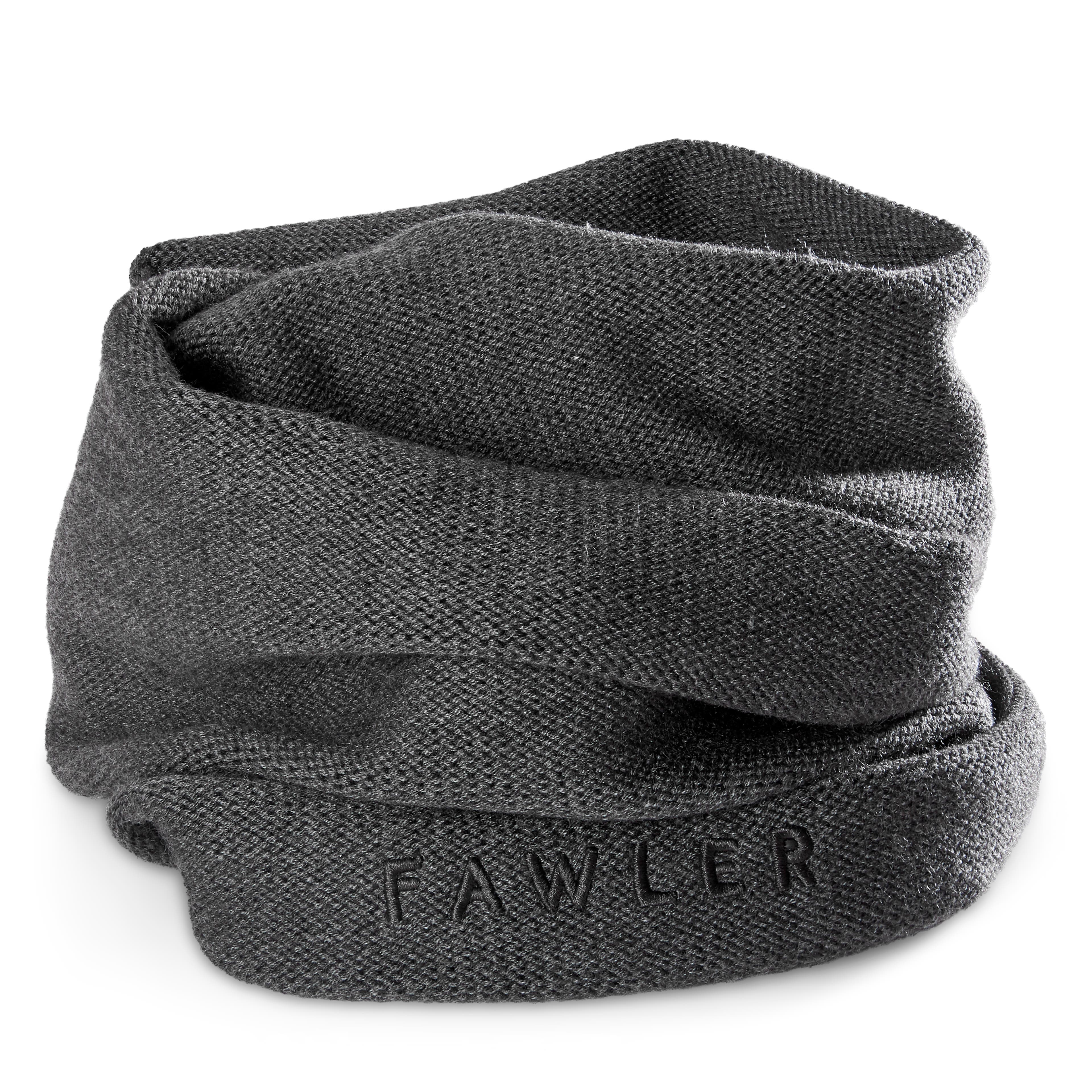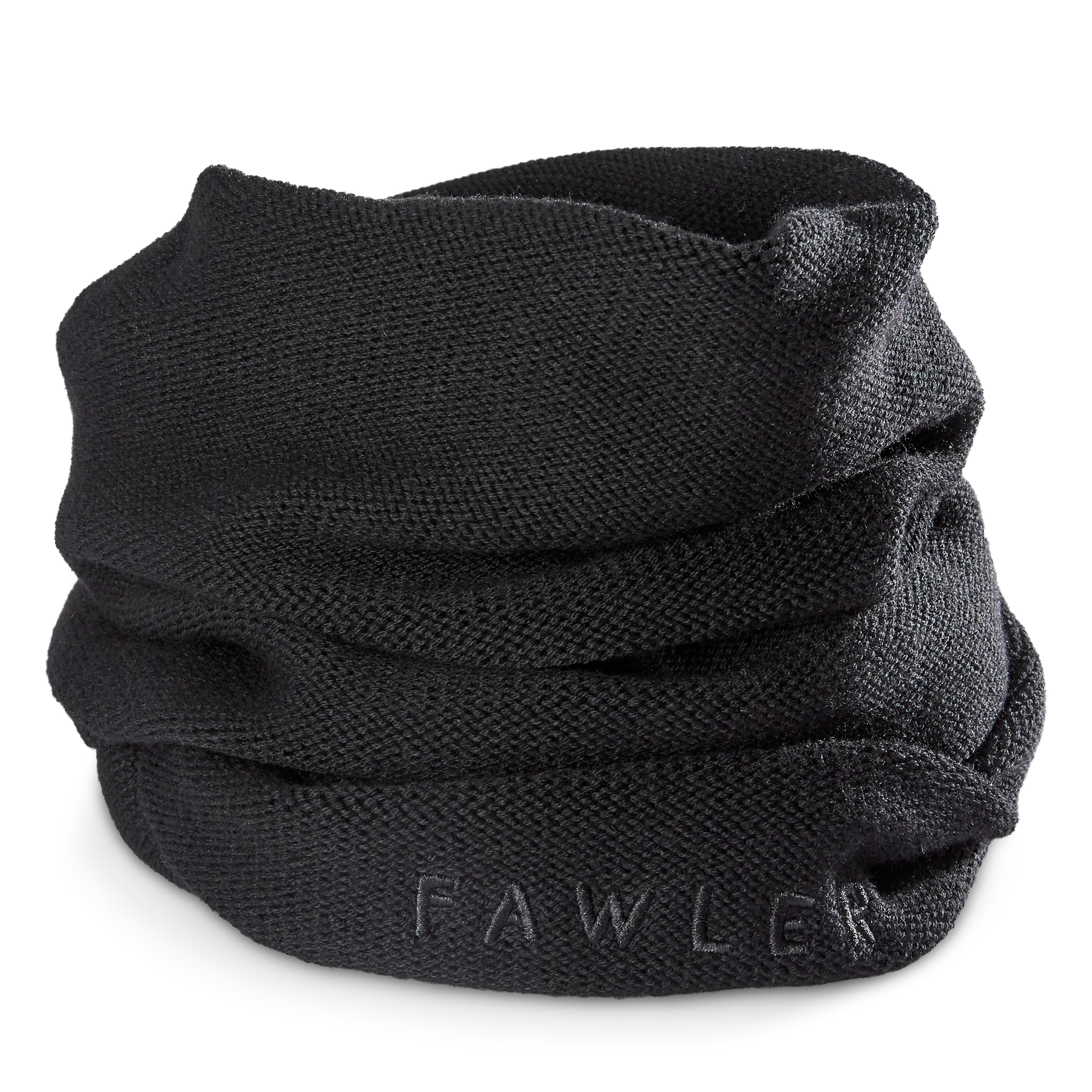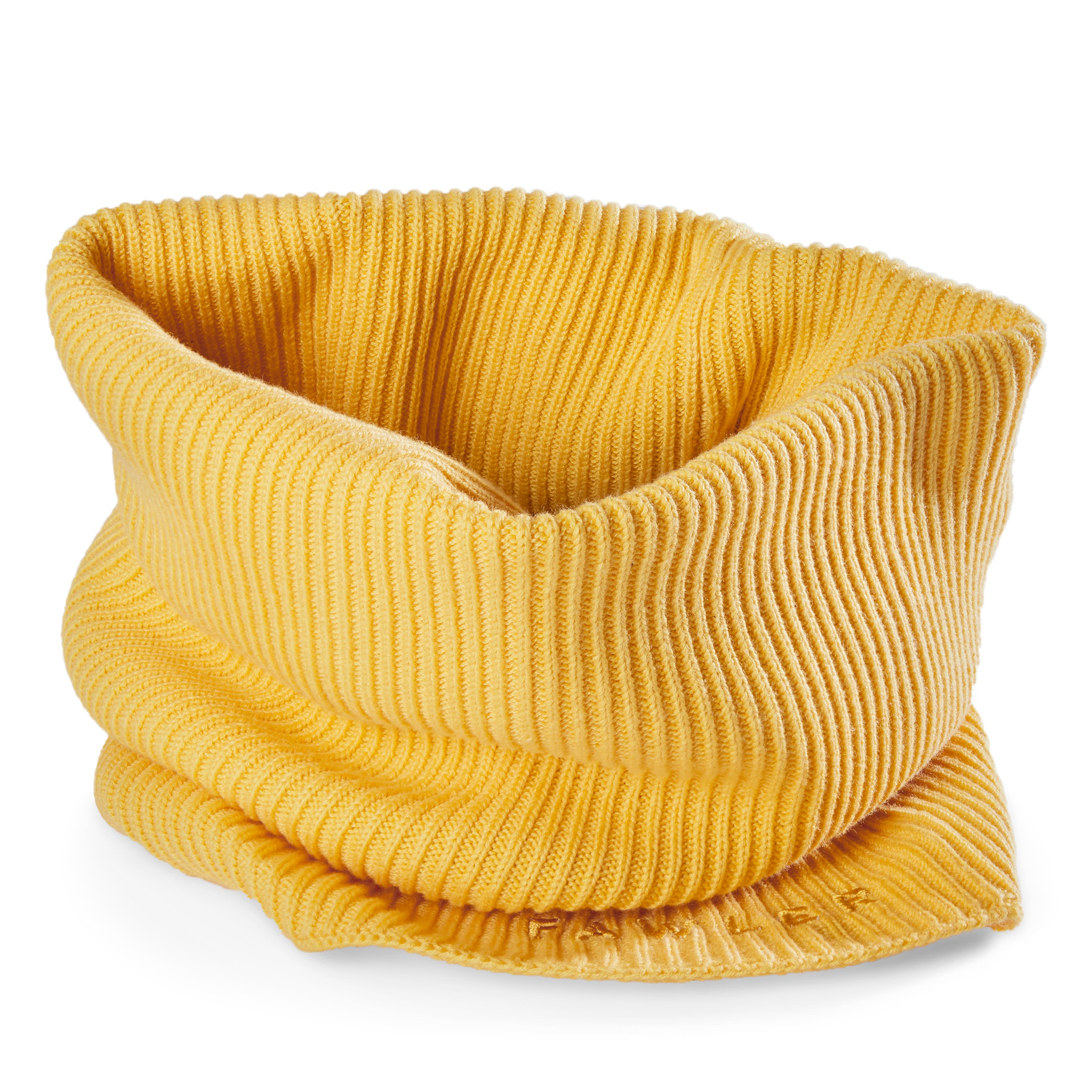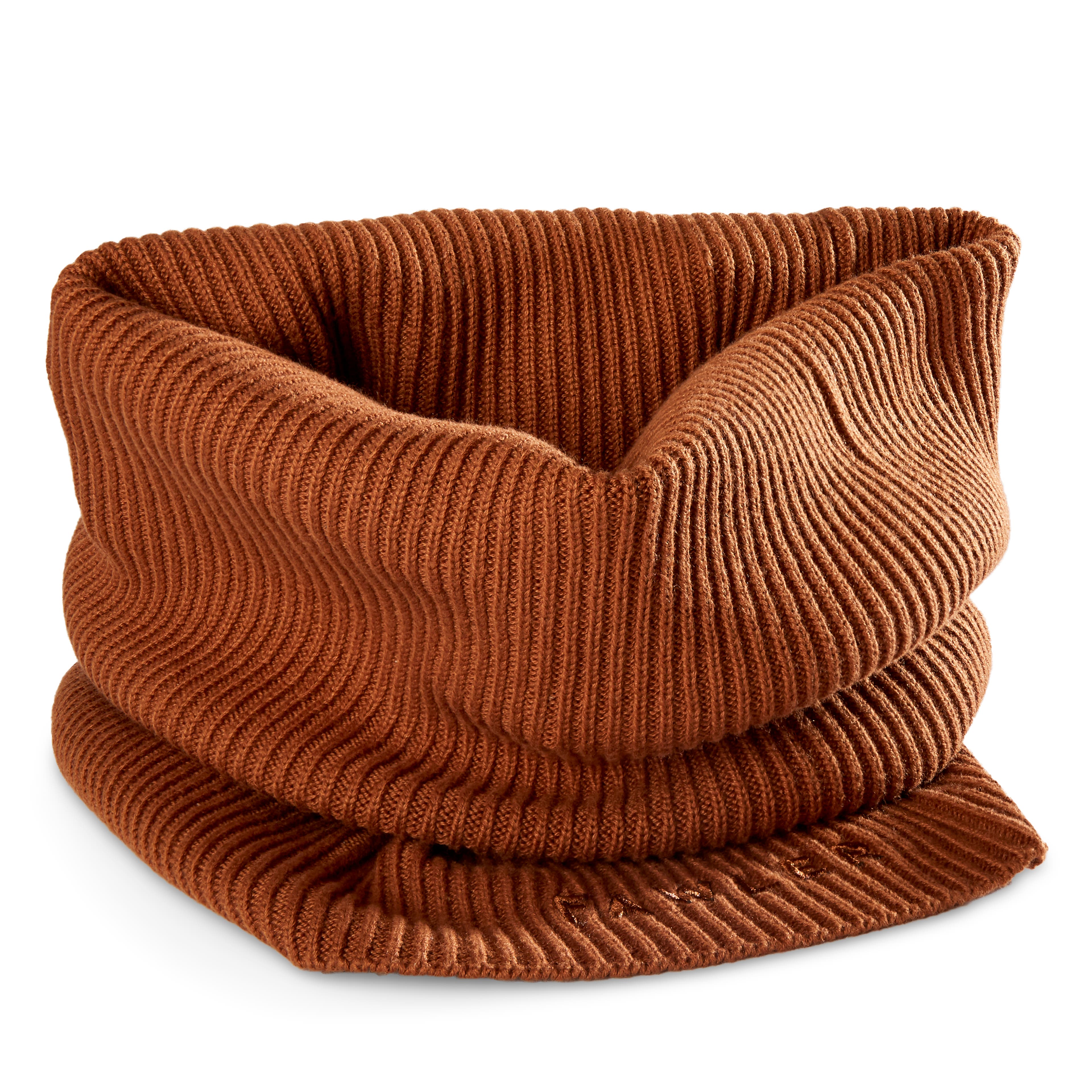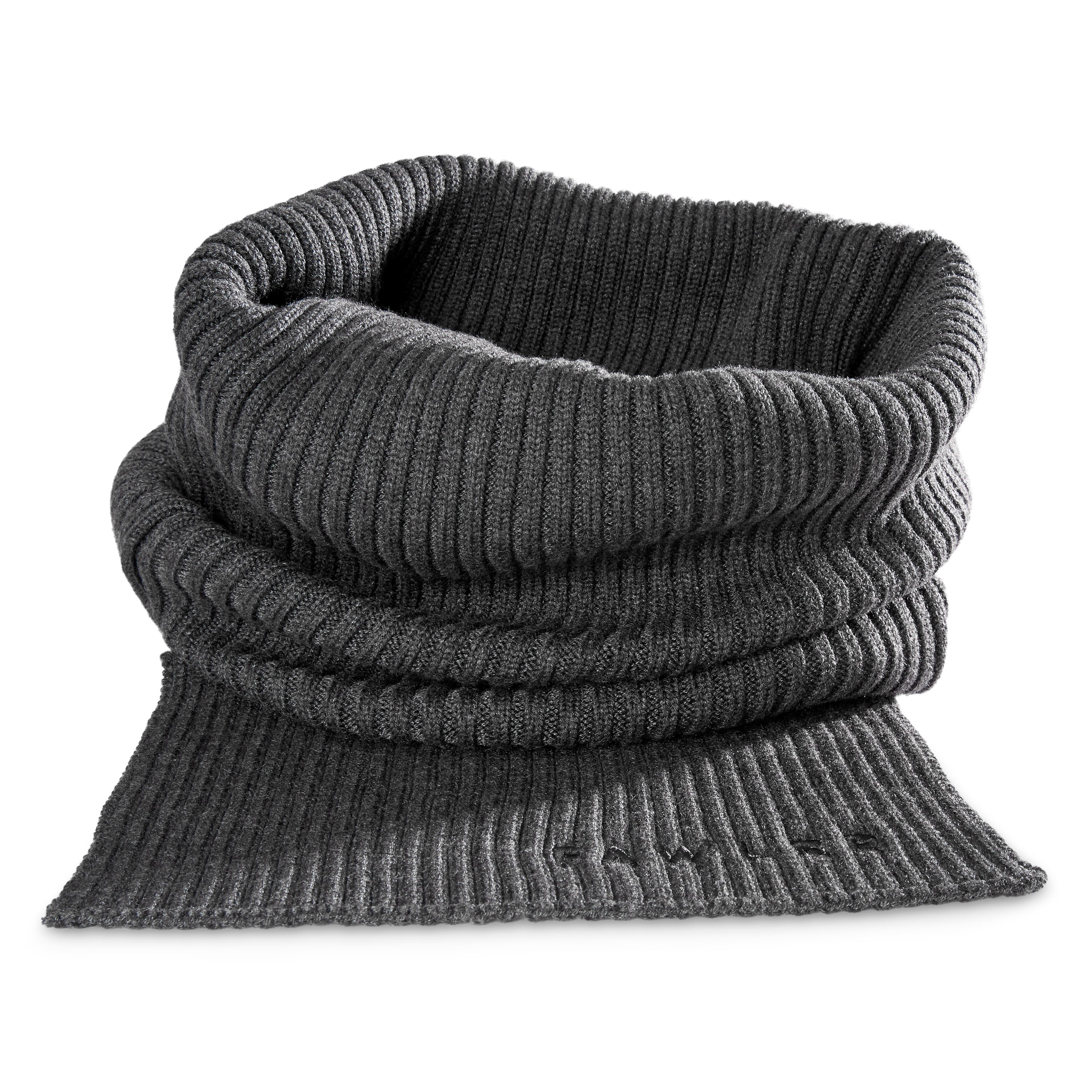8 MUST-KNOWS OF SCARF WEARING
We’ve put together a full-on guide to address the most popular concerns regarding scarves. Everything from how to choose colour and length to the best scarf material and how to wrap.
The scarf.
This five letter word can represent the most necessary item in a winter survival kit. It can also be a terrifying gift from a friend, or a nervous purchase made in an attempt to step up your style game. However, learning how to wear a scarf can be a positive addition to the dropping temperatures… and we could all use some positivity.
1. How to choose the right scarf length?
Most scarves are rectangular in shape, and the length is measured tip-to-tip.
Knowing the differences between short, medium, and long scarves will keep you from pulling out a tape measure in the shop. Could you imagine?! Would be funny, though.

Short Scarf – 140 cm
- Good for formal and business looks
- Drapes (unwrapped or untied) at perfect jacket or blazer length
Medium Scarf – 175 cm
- Versatile and a great choice for style
- Ideal length for tying or wrapping around your neck
Long Scarf – 208 cm
- Often referred to as ‘oversized’
- Can be wrapped multiple times for extra warmth (like a Lenny Kravitz meme)
- Tying a long scarf is possible and can add a carefree vibe to any man’s style
Scarf width is pretty standard at 30–40 cm.
This is wide enough to keep your neck warm without hiding your face. Anything wider and you’ll look as though you’re about to hold up a convenience store.
Our Suggestion
Scarf length boils down to this: you can’t really go wrong with any choice.
Our favourite is one that falls in the medium category as the styling options and the warmth factor increase.
2. How to choose the best scarf material
Choosing the right material is just as important as what scarf knot you use. The material will determine the texture, weight and the all-important weather-appropriateness factor.
How do you know what material your scarf is made from? Check the label.
Wool – Cashmere and Merino
Wool is the classic go-to scarf material for its warmth and durability. It’s also breathable, which means that it’s super water resistant and wicks away moisture.
Did You Know?
Wool can hold 30% of its weight in moisture without being damp. This is important if you live in a cold wet climate (hello, Denmark) or if you’re late for the train and work up a sweat trying to catch it.
The negative is that some wools can be itchy. Stop your wool scarf from itching by hand washing it and adding a teaspoon or two of white distilled vinegar to the rinse water.
Cashmere (from the cashmere goat) is insanely soft but costly as one goat produces only enough wool for one scarf per year.
Merino wool is the ideal balance of warmth and softness. These New Zealand sheep produce a wool that keeps them warm at temperatures which plummet to -10°C. Now that’s protection against the elements.
You may hear wool scarves described as ‘chunky’. This refers more to the texture than to the material. A chunky scarf is quite bulky or thick and usually wears best with casual style.
Silk
Silk scarves are worn more for show than for warmth. You’ll put on one of these if you’re heading out for a stylish formal affair or just want to up your Cary Grant game.
Most ascots or cravats are made from silk.
Acrylic
Acrylic is man-made and may not be as soft or breathable as natural fibres. It does have the advantage of being a solid option if you have sensitive skin or are allergic to wool.
Polyester
Are you picturing a Hawaiian shirt from the 80s?
Polyester may conjure visions of the hula, but it is actually a highly functional material with qualities that include: water and wrinkle resistance, colour retention and high durability.
Many scarves today are a poly blend that keeps the qualities of the natural fibre (like wool or cotton) and enhances their durability and lifespan by adding polyester’s key features.
It’s a match made in neck-hugging heaven.
Cotton
Cotton, like most natural fibres, is breathable. This means that you won’t get that greenhouse-trapped-sweat thing happening around your neck.
It’s also classic, durable and easy to keep clean.
Jersey is a type of cotton used in scarves for warmer climates. Lightweight and exactly like wearing a t-shirt created exclusively for your neck.
Fleece
Have you ever worn a fleece scarf?
At first, you think it’s super warm and soft… and then the sweat begins dripping down your shirt.
Most fleece used today is man-made, and you’ll find it to be warm and water-repellant with little breathability. With all of the price points available in natural/polyester blends, there’s no real reason to endure a fleece scarf.
Our Suggestion
Ultimately, when choosing a scarf, you want one that feels good, keeps you warm and doesn’t cramp your style.
We strongly suggest trying the scarf on first. Can’t try it on? Go for Merino wool or a blend with it included.
3. HOW TO STOP YOUR SCARF FROM SHEDDING
Imagine that you’re totally rocking your scarf. Your look is on point, and you’re 100% feeling like a boss. You enter the room, take your coat and scarf off and… you’ve got a beard covered in fuzz.
These little pills (fluff, fuzz, whatever you want to call it) aren’t satisfied with only your beard. You’re just as likely to find them on your sweater, in your hair, and falling around you like furry snowballs.
There is an answer to this dilemma that doesn’t include putting the scarf back on, pulling it over your beard to hide the fuzz and sweating to death 5 minutes later.
The less dramatic option is to first determine what the material is – see, we told you knowing the material would come in handy – and then take action.
How to stop wool from shedding
Shedding is quite common with wool scarves.
The fix is as simple as placing the scarf in the freezer and let the cold 'lock' in the short fibres.
- Carefully fold the scarf
- Place it in a sealable plastic bag
- Pop it in the freezer overnight
- Take the scarf out of the bag
- Go out and face the winter without shedding
How to stop a cotton scarf from shedding
A good wash may be all your scarf needs.
- Hand wash your scarf
- Add a teaspoon of distilled vinegar in the rinse water
- Allow to dry flat
How to stop a synthetic scarf from shedding
Most of these scarves are designed to not shed, pill or fuzz. So… you may have a freaky scarf on your hands.
Give it a wash or wear the little rebel and make fuzz the new hip beard accessory.
How to remove pills from a scarf?
- If your scarf is pilling, remove any pills with a small pair of scissors or razor blade.
- Be careful to not damage the rest of the scarf by cutting too close to the surface.
- You can also use a sweater comb or an electric fabric shaver.
- Take the time to take care of your scarf, and it’ll take care of you.
4. How to Choose Colour
Despite what you may have been told (or feared) – there are no fixed rules when it comes to choosing a scarf colour. This is true even for winter scarves.
That doesn’t mean you should put on a red and white striped scarf for your next formal event… unless you want people to think they found Waldo.
While there may be no fixed rules, focusing on skin tone and what you’re wearing will help you choose the right colour.
The Easiest Way to Determine Skin Tone
Determining your skin tone doesn’t have to be a long, drawn-out process. In fact, learning the basics can help you with all aspects of your wardrobe.
To determine your skin tone:
- Roll up your sleeve and look at your veins.
- Blue veins equal cool skin tone.
- Green veins equal warm skin tone.
- Call your doctor if your veins are any other colour like neon orange or black.
Scarf colours for warm skin tones:
- Deeper colours with golden tones
- Yellow
- Honey gold
- Orange-red
- Rust
- Olive
- Turquoise
- Deep greens
Scarf colours for cool skin tones:
- Lighter colours with blue/grey tones:
- Blues (light and navy)
- Jewel tones
- Purples (light and deep)
- Grey
What is a Neutral Scarf Colour?
Knowing your skin tone will help you select a scarf based on your colouring, but what happens if you want something a less daring than honey gold? This is where neutrals come in.
First, let us say that neutral does not mean boring. It also does not have to mean black – grey and beige are also considered neutrals.
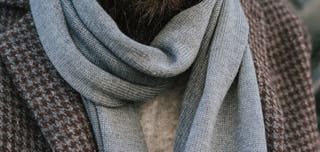
What Are You Wearing?
There is a time and place for a ‘look-at-me’ neon animal print scarf. We’re not quite sure when, but we’ll keep our options open. We are certain that matching your scarf to your outfit is not necessary.
You don’t have to match a black jacket with a black scarf. In fact, a grey is way more versatile and will keep you from looking too matchy-matchy. Try a beige scarf if you’re wearing a lot of tans and browns.
Pair a bold coloured scarf with a more neutral outfit. Try a checkered scarf with a black sweater and dark jeans. The pattern will call out ‘yeah, I got this’ instead of ‘I got dressed in the dark’.
Our Suggestion
Neutrals work in almost every situation.
Remember that the scarf is an accessory – a very functional accessory, but an accessory. Letting it be the star of your look and style (a bright colour, perhaps) may not be a great idea as we typically remove scarves once inside.
5. How to choose the right scarf for the occasion
Winter is a great season for men’s style, and the scarf is a huge player in looking your best. Are you heading to the office or are you meeting a blind date at the pub?
Remember that a scarf can do way more than just keep you warm. It can also serve as a nod to your stylish side… and style never hurt anyone on a blind date. Function and fashion – two of our favourite words.
We’ve put together our suggestions for wearing the right scarf at the right time below. It’s time to start blending your knowledge of material with colours. It’s getting deep, dude.
Making the right choice will step up your game, keep you warm and maybe get you that second date.
Weekend
We know that a laid-back weekend doesn’t actually involve staying in all day and binge watching Game of Thrones. No matter where you are, a man with your style and character will eventually step out of the flat and deserves to look his best.
We suggest you pair your favourite jeans and your leather jacket with a grey or navy medium length merino wool scarf. Go for a wool and polyester blend for extra comfort and one that is less likely to fuzz.
You can opt for a chunkier scarf here as you want a casual, yet thought about look.
Work
Yes, you can wear a scarf and a tie at the same time. Determine what type of overcoat you will wear and then match or complement materials – think of wool going with wool or cotton with… you get the idea.
Keep the texture to a minimum by staying with cashmere or merino wool and avoid anything too chunky. Match the scarf to your suit but stay within the neutral family.
You can’t go wrong with a short length light grey wool scarf that falls perfectly under your coat. Wear a medium length scarf if you need the extra warmth or wear a longer coat to work.
- Length: Short to Medium
- Colour: Light Grey
- Material: Wool
- Knot: The Classic One
Sport
Knowing what scarf to wear will add an extra layer of warmth to your football game in the park.
Go for a tube scarf to keep your neck toasty. These are circular scarves worn without tying or wrapping. They have the added benefit of being less dangerous than a long rectangle scarf trailing behind you on the field.
Search for one in a natural fibre or natural fibre/poly blend (like cotton and acrylic). The natural fibres will breathe well and keep you from drowning in your own sweat.
Formal
Formal events are more about style than functionality.
As you’ll more than likely be pairing your formal suit with a dark trench coat, choose a scarf that will not hang below your coat when it is unwrapped.
How often do you go formal? Exactly. So go for the good stuff and splurge for a cashmere scarf.
- Length: Short to Medium
- Colour: Black
- Material: Cashmere
- Knot: The Formal One
Night Out
Let’s be honest, your style for a night out is rarely chosen based on temperature. No one wraps up in their duvet-esque ski wear and heads to the club.
Wools and wool/poly blends are ideal. Think sleek, not chunky.
Stick to always trendy black or grey to complement a sleek urban look.
Remember that blind date? If you want to show your daring side, go for a burgundy or dark green option - just make sure it doesn’t clash with your outfit or shed all over your beard!
6. How to tie a scarf
Perhaps the most sought-after advice in the scarf kingdom is about tying, wrapping, styling, draping… you get the idea.
We asked Heidi, lead designer for Bohemian Revolt, for her top picks and help with tying and wrapping skills. She’s narrowed it down to 5 ways to wear a scarf that are simple, stylish and warm.
Each of these is easy to wear without looking like you spent hours adjusting your scarf this morning. Plus, only 1 requires an actual knot with the rest being wraps.
The Easy One
The easiest way to wear a scarf. Hands down. It’s a combination of warmth and ease that you can use with both chunky and less textured scarves. Use with medium to long scarves.

How to Tie
- Drape the scarf around your neck leaving one end longer than the other
- Wrap the long end around your neck (once for medium and twice for longer scarves)
- Adjust so that the ends are slightly symmetrical
- Keep the wrap loose for cooler temps or tighten for increased warmth
The Relaxed One
The ideal wrap for staying warm and looking casually put together. Use a chunky scarf – but not too thick as you would hate to become so top heavy that a good wind blows you over. Speaking of wind, this style is great for windy weather as the ends are safely tucked in and won’t flap away from you. Use with medium to long scarves.

How to Tie
- Drape the scarf around your neck so that one end is much longer than the other
- Wrap the long end around the neck until you are left with only the tip
- Tuck both ends into the wrapped material (you’re basically hiding the ends)
The Classic One
This is a must-know knot. It’s referred to as a knot because it ‘locks’ in place rather than wrapping (like The Easy One, for example). This method works well in cold weather as the knot fits snuggly near your neck and, depending on the material, works well for both casual and business styles. Use with long scarves.
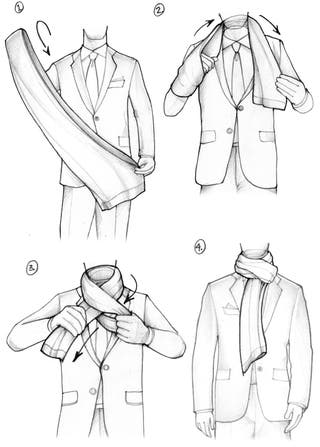
How to Tie
- Fold the scarf in half lengthwise
- Drape the folded scarf over your neck (you should have one looped side and one with the two ends)
- Take the open ends and pull them through the looped hole
- Pull to tighten the knot
The Formal One
This is exactly what you need if you’re pairing a scarf with your formal wear. It also works great when your scarf is worn for a splash of colour without being the focal point. Use with short to medium scarves (depends on the length of the coat).

How to Tie
- Drape the scarf under your overcoat, and make sure both ends are symmetrical
- Overlap the ends under your scarf
- Wearing your coat, make sure that you can just see the colour of the scarf
The One From Nana
You know the scarf we’re talking about here – the handmade knitted or crocheted scarf that was made with love, yet is nothing you would choose for yourself. Usually, these scarves are quite big and figuring how to wear one isn’t how you typically spend your Saturday. Heidi has a wrap that makes any scarf from your favourite aunt, granny or mother-in-law easy to wear. The length shows the love. Call your nana!
.png?format=pjpg&auto=webp&quality=75%2C90&width=320)
How to Tie
- Drape the scarf around your neck so both ends fall behind you
- Cross the ends and bring them to the front
- Loosen the knot for a more relaxed look or when you absolutely can’t take the heat anymore. Tighten it to really feel the love
It’s important to remember that individual style and confidence play a huge role in which method you choose. We’re fans of playing around and seeing what works best… and we’re fans of our grandmothers!
7. How to clean your scarf
Your scarf is dirty. We’re not trying to throw shade, guys, and you’re not alone. Our winter accessories are often neglected when it comes to laundering.
It’s not poor hygiene. Well, we hope not.
It’s skin cells, oils, cologne, dribbling morning coffee, and the occasional sneeze that causes our scarf to need attention. And giving it attention isn’t as difficult as you may think. It’s not as easy as tossing your flannel shirt in the washing machine, but a few well-spent minutes can bring your scarf back to life.
How to Hand-Wash A Scarf
- Fill a bowl with cool water and a few drops of baby shampoo.
- Submerge your scarf.
- Let it soak for 10 minutes.
- Pour away the soapy water.
- Add clean cool water to rinse the scarf.
- Repeat until the water is clear.
- Drain and gently press the remaining water from the scarf.
- Lay the scarf flat on a clean towel to dry.
Are you thinking that this will take forever and that rinsing under the faucet is just as good? It would be easier, but the direct pressure could end up damaging the fabric if it’s a wool or a knitted scarf.
Some scarves are safe for the washing machine (some kinds of cotton and blends), but why risk it? You’d hate to toss it in and pull out one made for mini-you.
We suggest you hand wash. And yes, it’s safe for scarves labelled ‘dry clean only’.
How Often Should I Clean My Scarf?
We recommend you wash your scarf 2–3 times per season.
You don’t want to ruin the material with excess washing… and you surely sneeze with a tissue.
Be sure to give your scarves a final wash of the season before folding or rolling them and placing away in a drawer.
Consider your scarf as a type of frontline defence against the winter elements. A clean frontline is a secure one.
8. How to know when you don't need one
We like scarves. That’s kinda obvious by now, eh? But like that little pocket on your jeans – sometimes you just don’t need one. Knowing when to wrap up and when to let your neck go free is as simple as thinking of your scarf as an accessory instead of a necessity.
Look at what you’re planning on wearing to determine if you need the scarf or not.
Are you stepping out in a turtleneck and fitted jacket? Showing your urban street style in a cowl neck hoodie?
If you answered yes, then you may want to avoid adding a scarf and suffocating your style. At the same time, wrap up if it’s super cold outside as functionality trumps fashion any day of the week.
It’s up to you.
Yes, there are suggestions and guidelines, but this is where be your own man comes in focus. You are allowed to make the choice and be confident in that decision.
That is the best look and the true must-have accessory for any season.
Honey gold, Merino wool, rectangular dimensions, chunky, sealable bags – who knew there was so much to know about a scarf?
It all boils down to how you feel. We want you to use these must-knows as guidelines and find a scarf that highlights your personal style and keeps you warm.
Ready to upgrade your winter look? You’ve got the know-how… so get out there, wrap up and show the cold weather who’s boss.
You Asked – We Answered
Can I tuck my scarf into my jeans?
We 100% support individual expression, but the answer is no. Wrap your scarf or even let it hang long… just don’t tuck it in your pants.
Does a thicker scarf mean it’s warmer?
A thicker scarf does not always mean a warmer scarf. It’s more important to look at the material than the thickness.
If it’s warmth you’re wanting, opt for a chunky scarf in wool.
Can a man wear a unisex scarf?
You can do whatever you want to do, bro. Be you.
With that said, we would caution against too much fringe, scarf pins, bright prints or super light material as these are typically designed for women.
What kind of scarf looks good with a trench coat?
We always recommend natural fibres or natural poly blends in all scarves. If you're looking for a scarf to match your trench coat, go for a medium to longer scarf (170–210 cm) and stick to a neutral colour that complements.
Is there a scarf that goes with everything?
This is a great question! A medium length scarf in a grey wool (little texture) will easily go with everything. Grey is an easy colour that pairs well with dark winter style.
Why don’t more men wear scarves?
We think more men should wear scarves! A lot of guys think they are too feminine, but that is so far from the truth. A scarf is a great winter accessory and a true blend of function and fashion.
Can a man wear a scarf with a cardigan?
A scarf with a cardigan can be a tough look to pull off without the right way to wrap it. You’ll want to wear it loose (not too tight around your neck) to avoid looking like you spend way too much time with your stamp collection.
Can I wear a tie and a scarf at the same time?
Wearing a scarf with a tie is as easy as knowing which wrap or knot to use. We suggest The Classic knot or wearing it unwrapped. This will keep you looking sharp and professional.
What can I do about the fluff from my scarf?
A shedding scarf isn’t a big deal until it is a big deal!
A good wash will usually solve the problem. However, if it’s a wool scarf, the fix is as simple as folding the scarf, placing it in a sealable plastic bag and popping it in the freezer for 24 hours. The cold will 'lock' in the short fibres and send you shed-free out to face the winter.
Can I wash my scarf in the washing machine?
Whether your scarf is machine washable depends on the material from which it is made. We always recommend hand washing as it doesn’t take long and you avoid the risk of shrinking or damaging your scarf.
Can a man wear a scarf with fringe?
A man’s scarf can have fringe… within reason. The fringe should be minimal and in the same colour as the scarf. Avoid extra long fringe or the kind with beads on it unless you’re auditioning for a 70s TV show.
Can a man wear a patterned scarf?
Successfully wearing a patterned scarf depends on the print (the pattern). Bohemian Revolt’s lead designer, Heidi, suggests keeping your outfit neutral and let the scarf become the focal point.
Most patterned scarves will be in silk or a fabric with a similar feel. Play around with different knots and wraps to see what works best.
What is the most masculine way to wear a scarf?
There is no manly way to wear a scarf – only ways to enhance your personal style, personality and vibe.
Take a look at the Terracotta Warriors of China, if you don’t think that scarfs can be masculine. Those guys take the scarf and ‘don’t mess with me’ look to an entirely new level.
1. Reverse Drape
How To
- Drape the scarf over your neck, making sure both ends are of equal length.
- Take one end of the scarf and bring it across your neck and over the opposite shoulder.
- Do the same with the other side.
- Adjust the scarf around your neck if necessary.
2. The No-Knot Knot
How To
- Drape the scarf around your neck, making one end longer than the other.
- Take the long end of the scarf and bring it behind and around itself to form a loop, then take the end down and through the loop.
- Grab the other end of the scarf and bring it through the loop to tie the knot.
- Work the knot up to your neck by gently pulling on each end of the scarf while sliding the knot up.
3. The Over & Around
How To
- Drape the scarf around your neck, making one end longer than the other.
- Take the long end of the scarf, cross it over the short end, then bring it under and through the opening near your neck to tie.
4. The Once Around & Through
How To
- Take the long end of the scarf and loop it once around your neck.
- Next, take the same end and tuck it through the loop you just formed.
- Grab the other side of the scarf and tuck it through the loop to finish the knot.
5. The Ultimate Neck Warmer
How To
- Fold the scarf in half and drape it over your neck.
- Take one of the loose ends of the scarf and pull it through the loop formed by the folded end.
- Twist the loop, then pull the other end of the scarf through the loop to tie the knot.
Our Favourite Scarves for Winter
Guys, when it comes to shopping for the ideal scarf, it’s important to keep in mind its purpose – what will you use it for?
Is it a scarf that keeps you warm as you bike through wind and snow to work? Or are you looking for a stylish accessory – the cherry on top of your impeccable look? Or… do you want it to do both?
With the right know-how, choosing a man’s scarf is easy. The morning bike to work when it’s snowing outside… yeah, that’s another situation entirely.
Tube Scarves for Men
For the mornings when you don’t want to spend time tying your scarf, pull on one of these men’s tube scarves and you’re set!
We suggest one made with itch-free Merino wool for those extra cold, windy days – like the ones Denmark is famous for!
